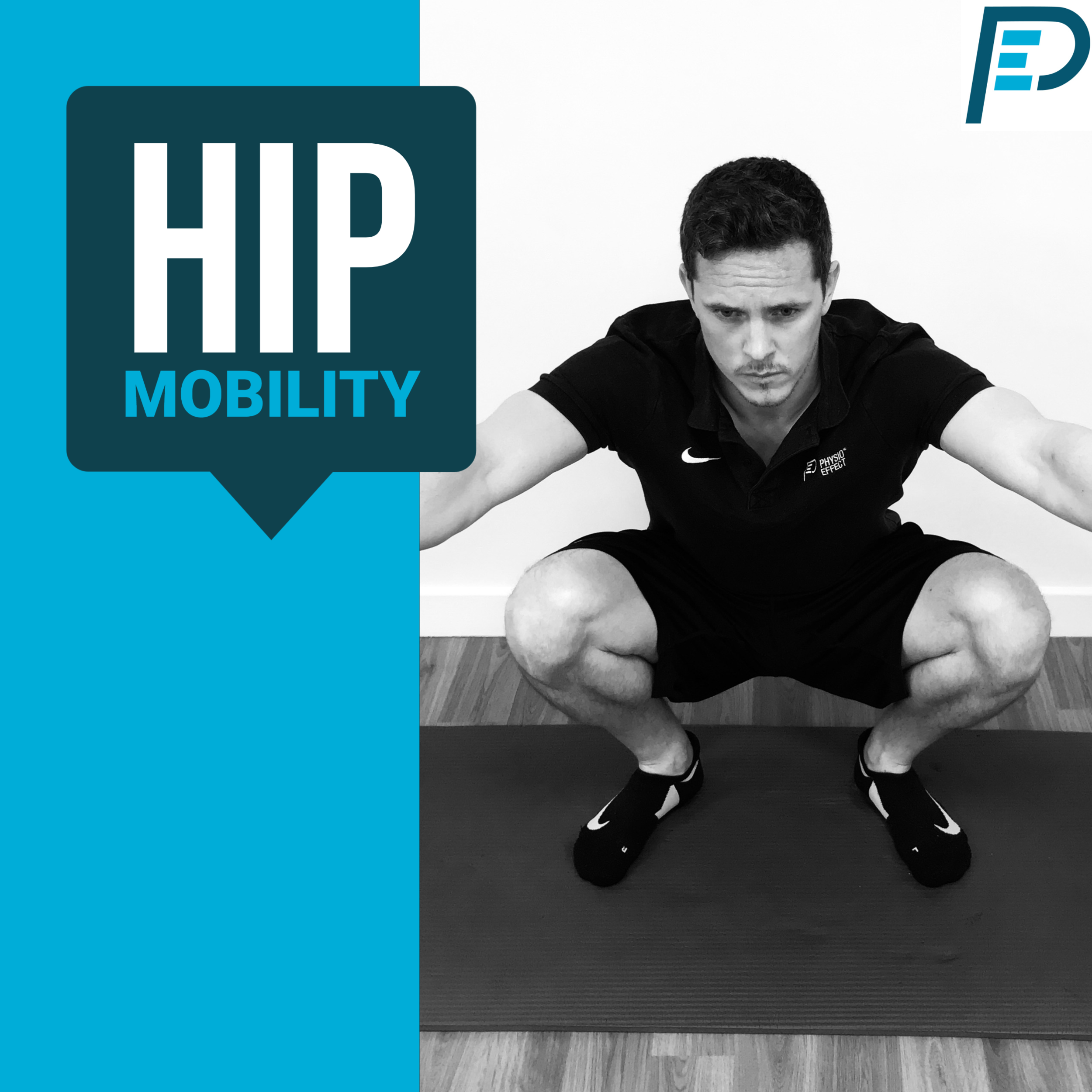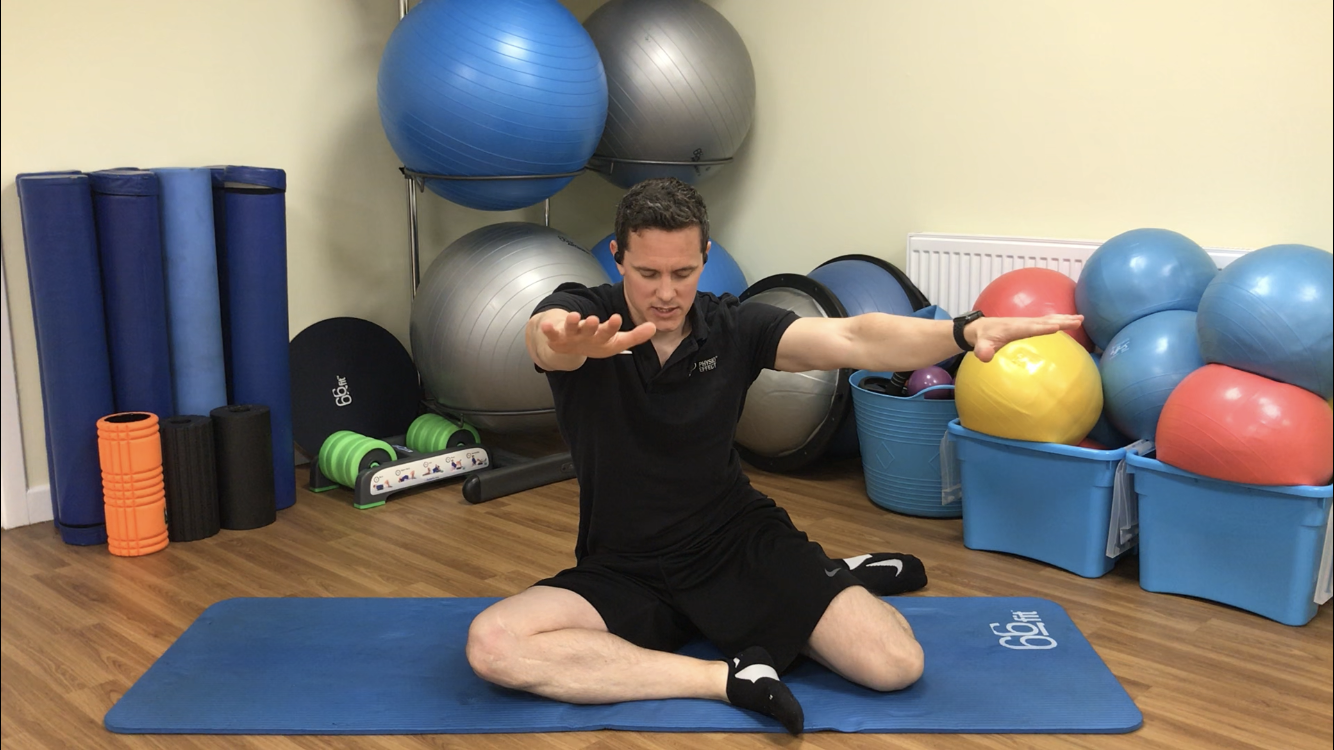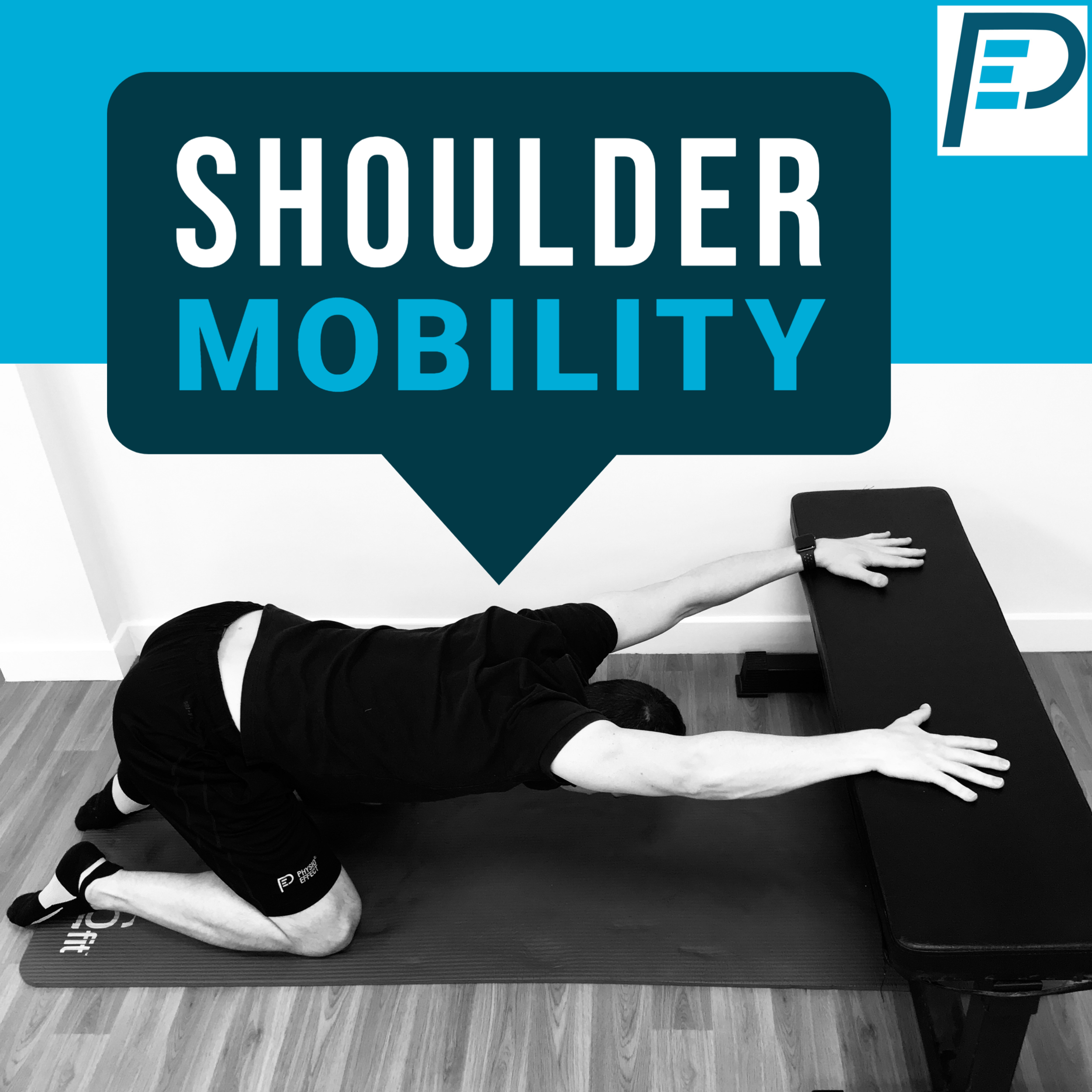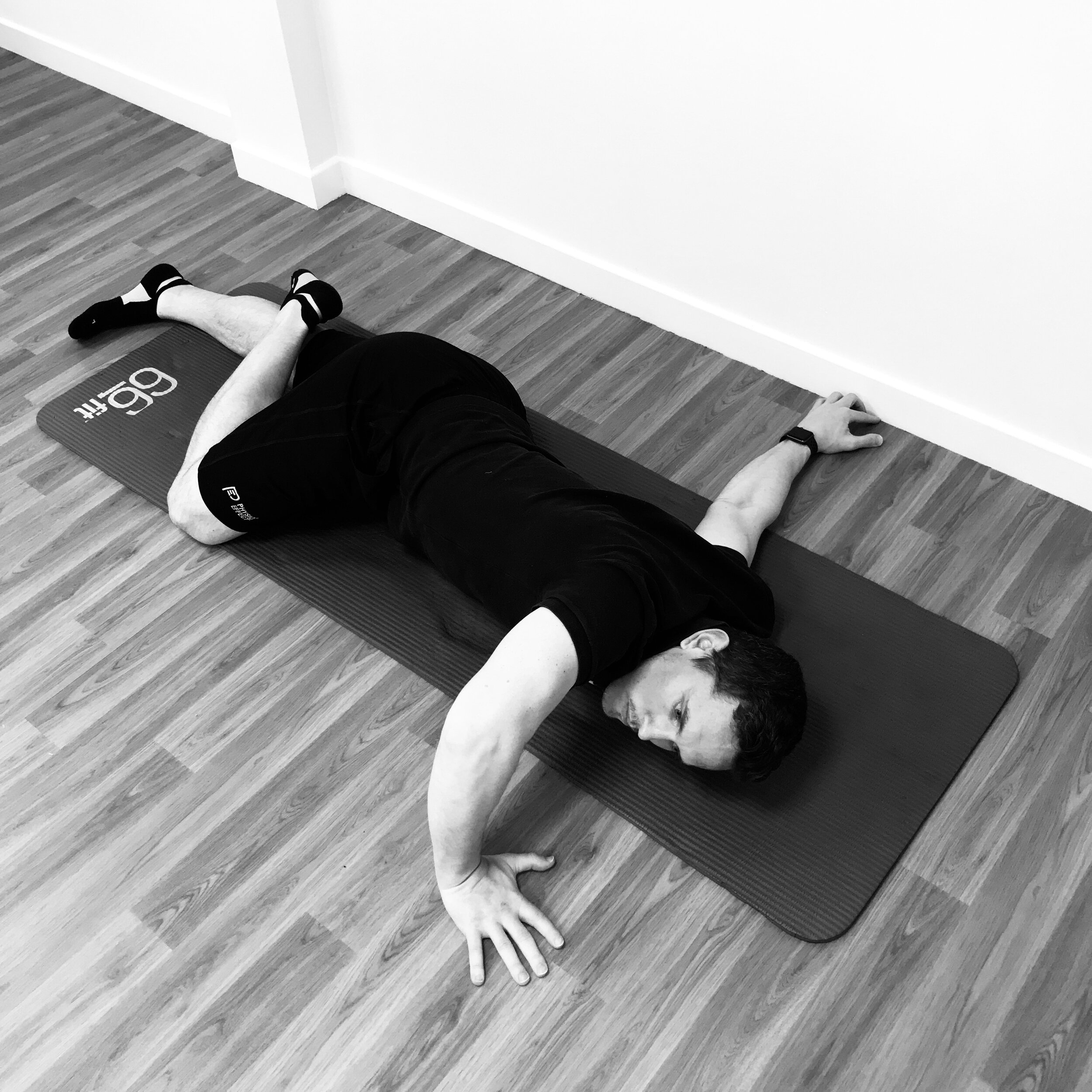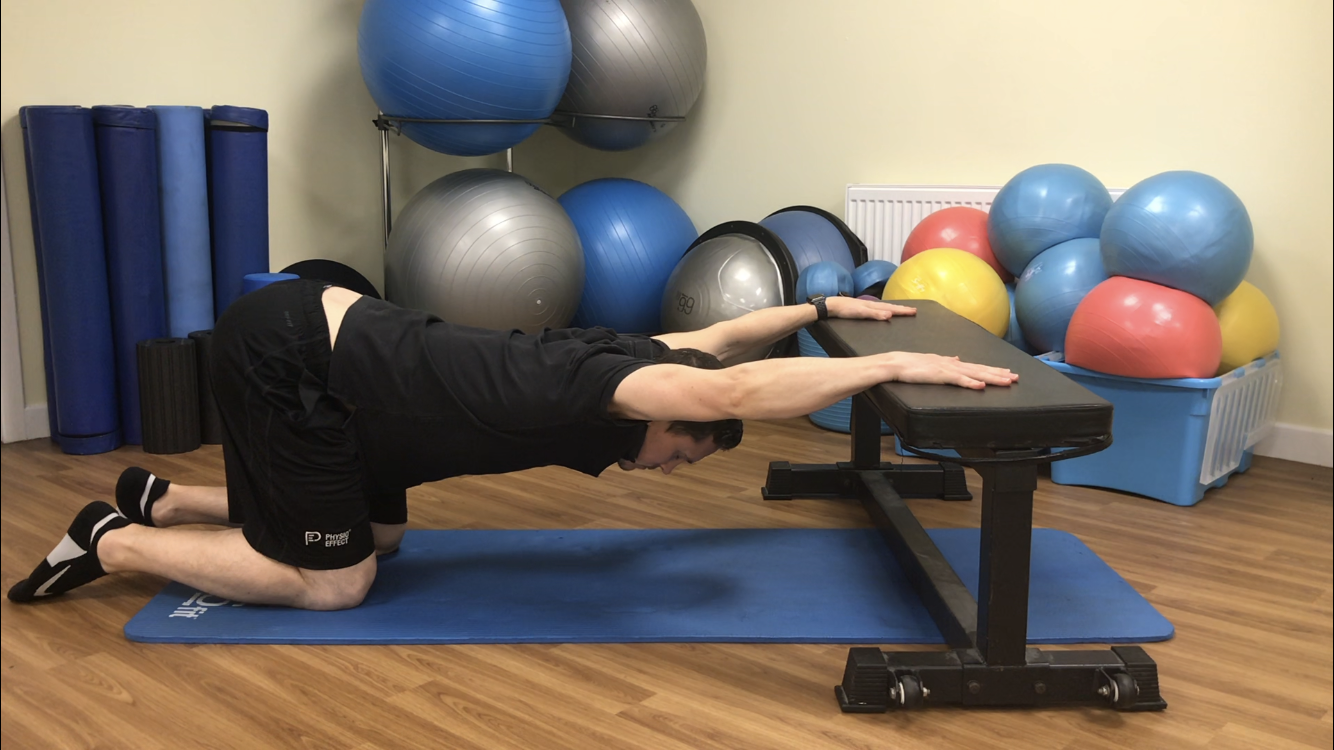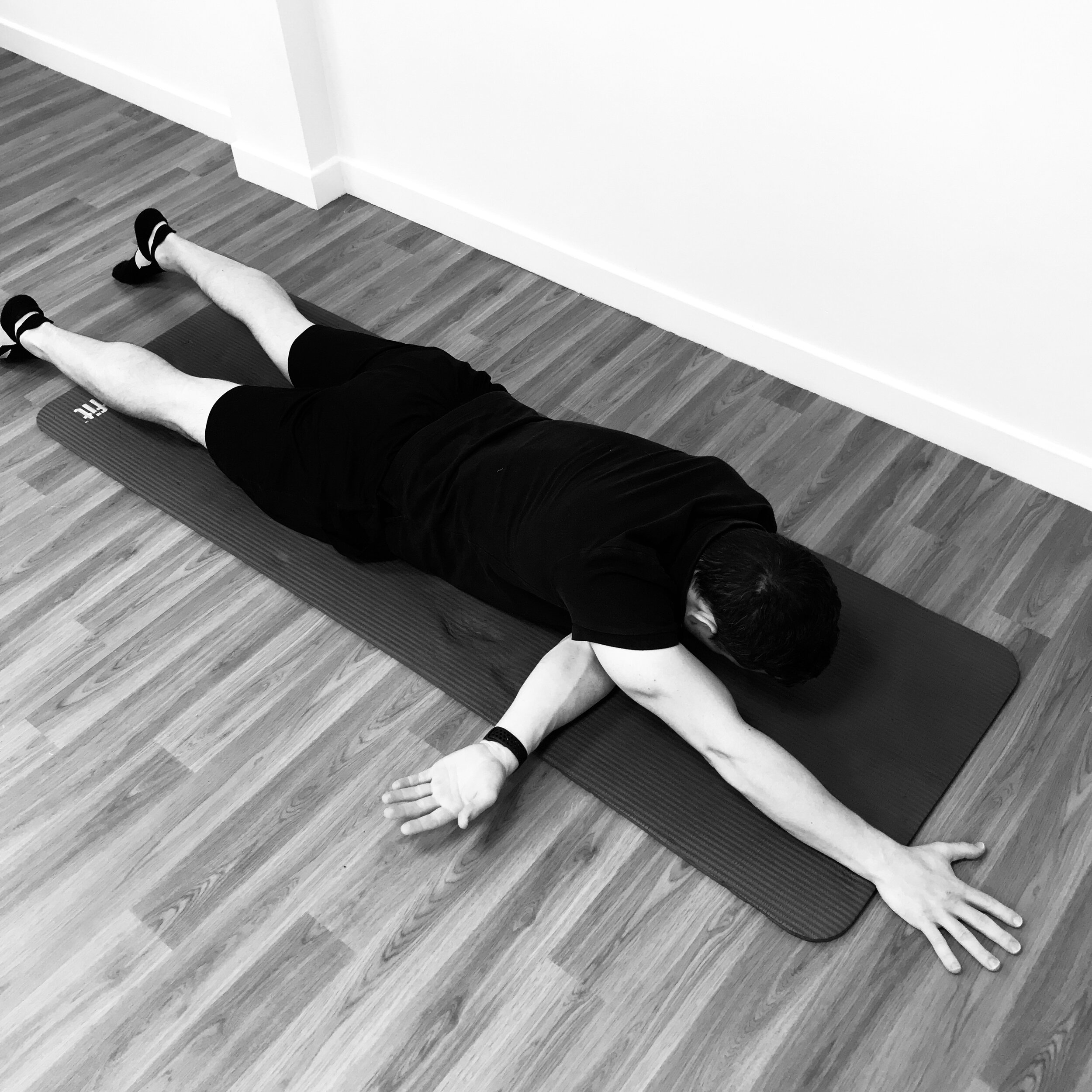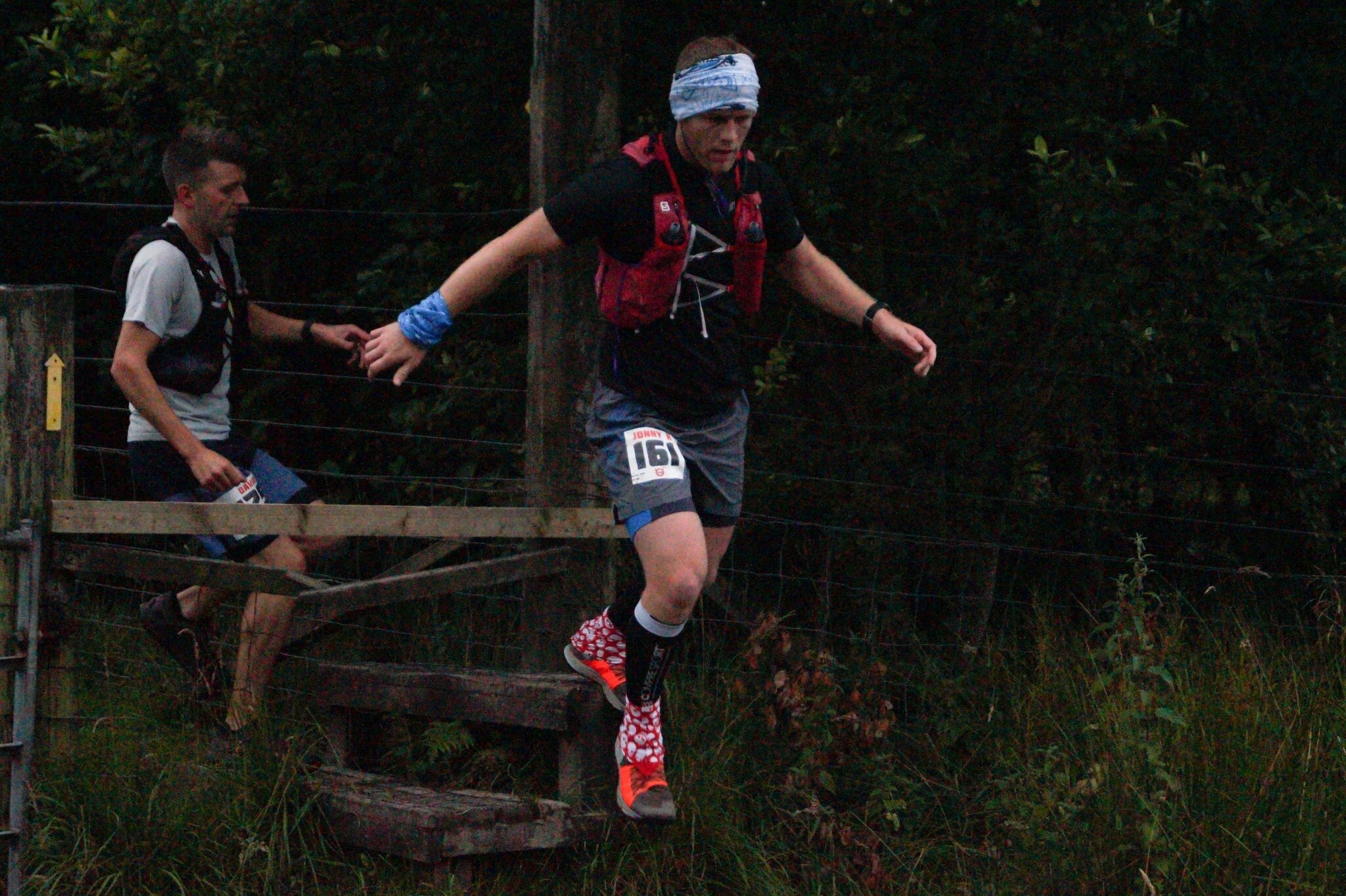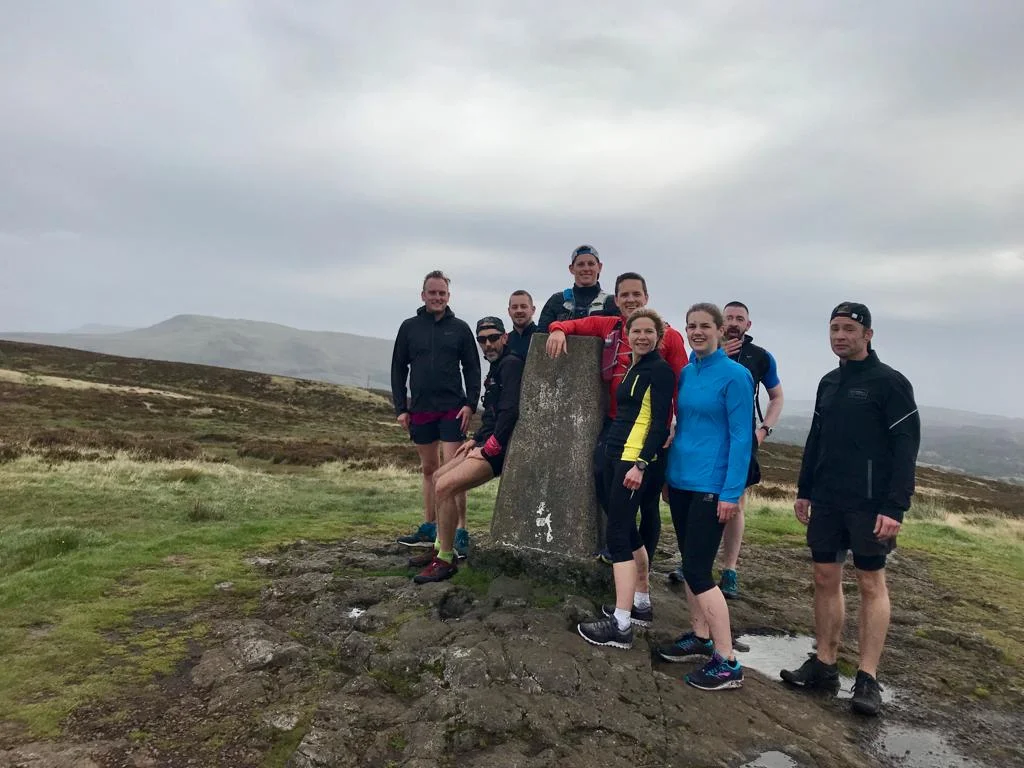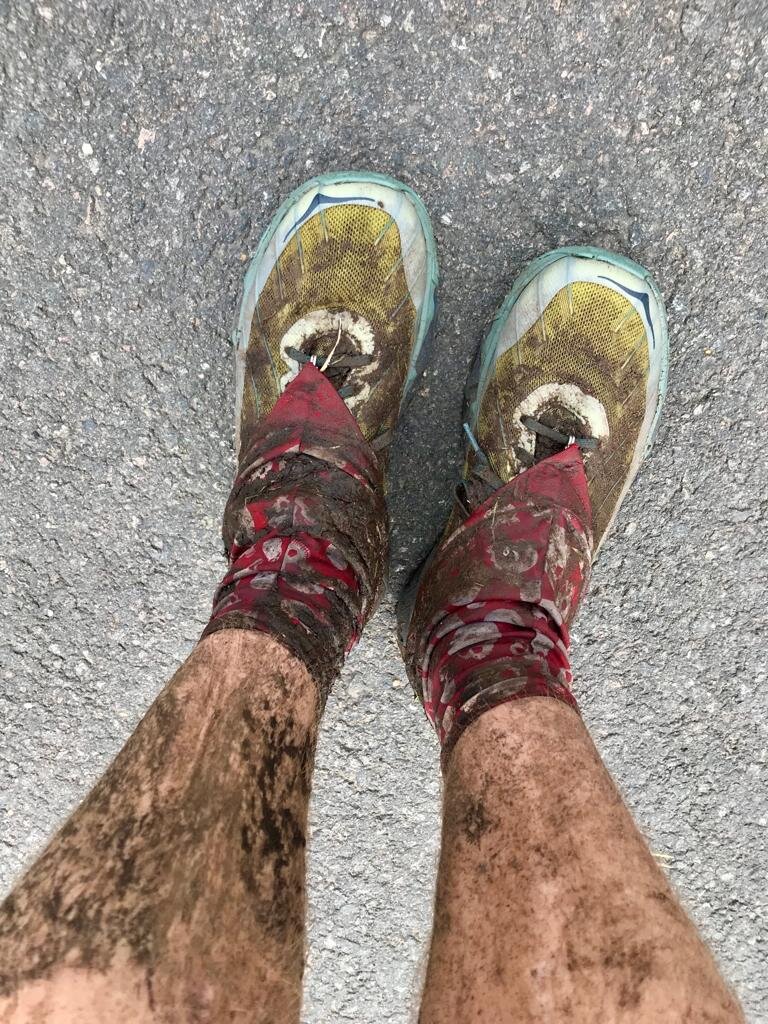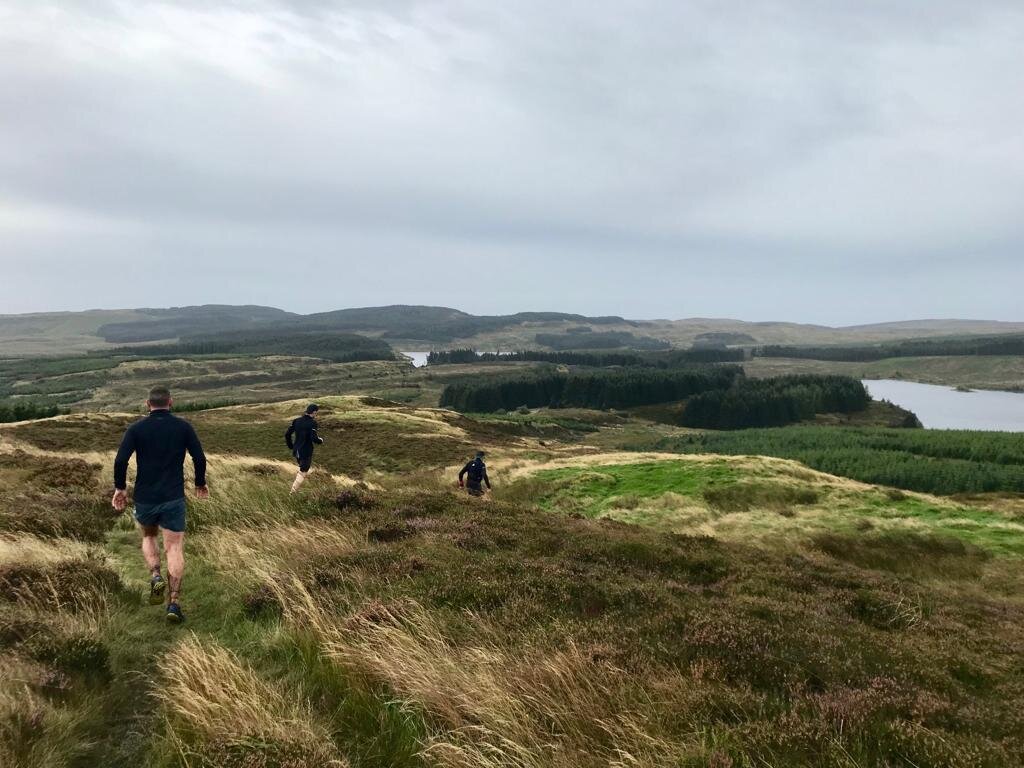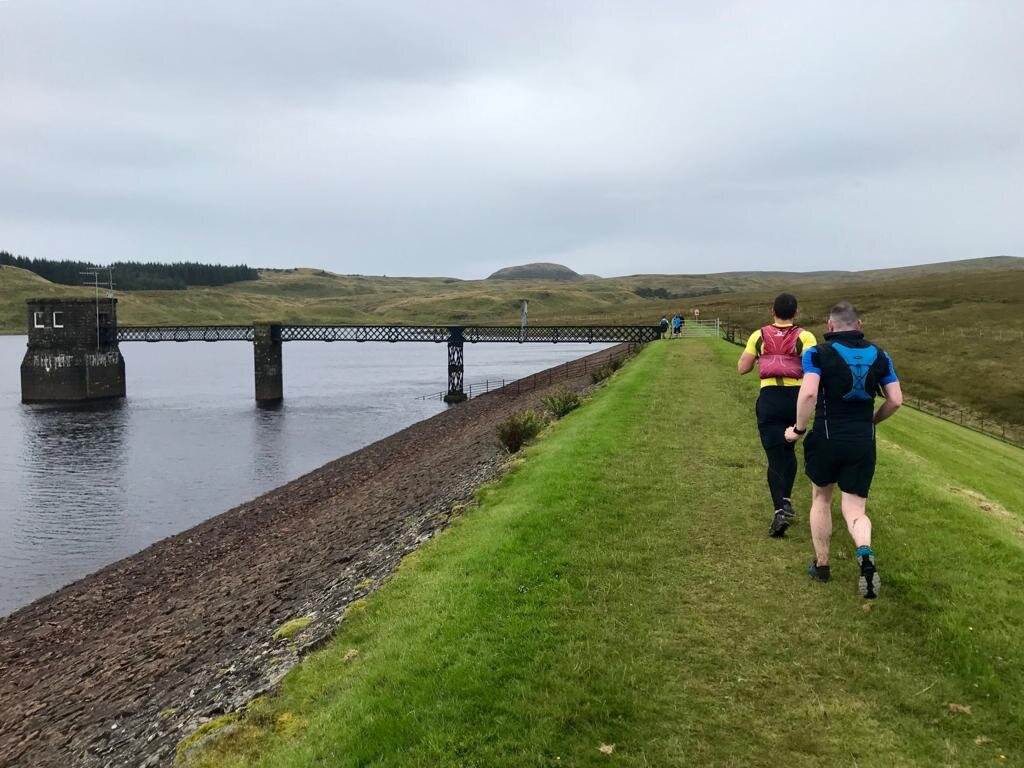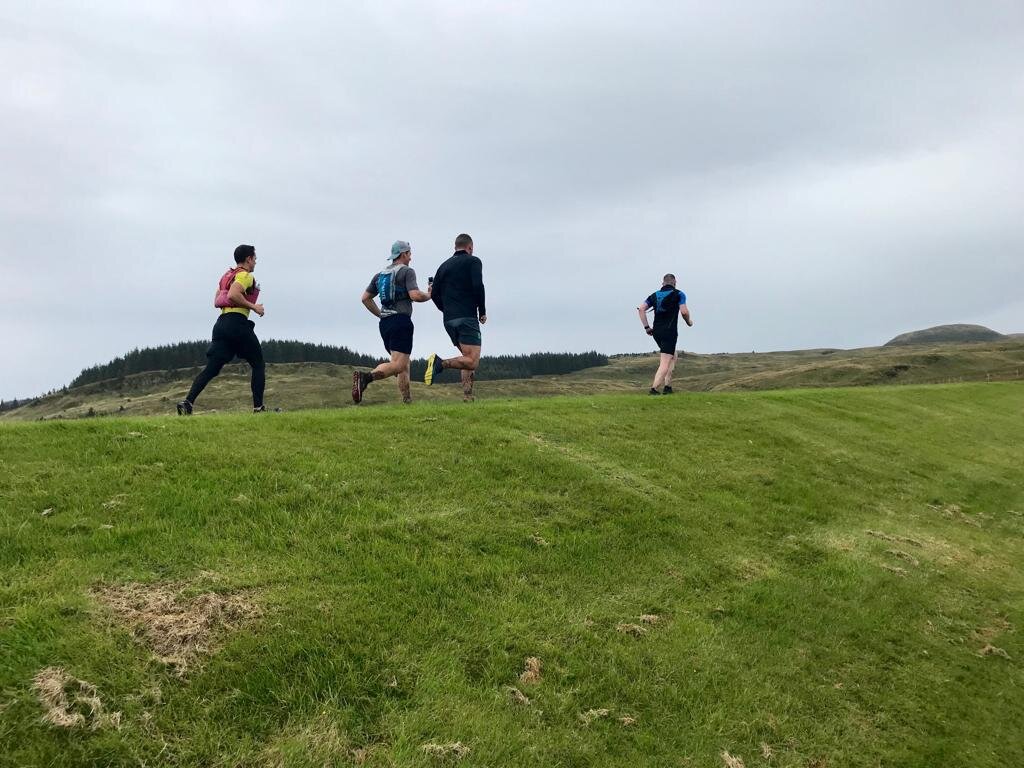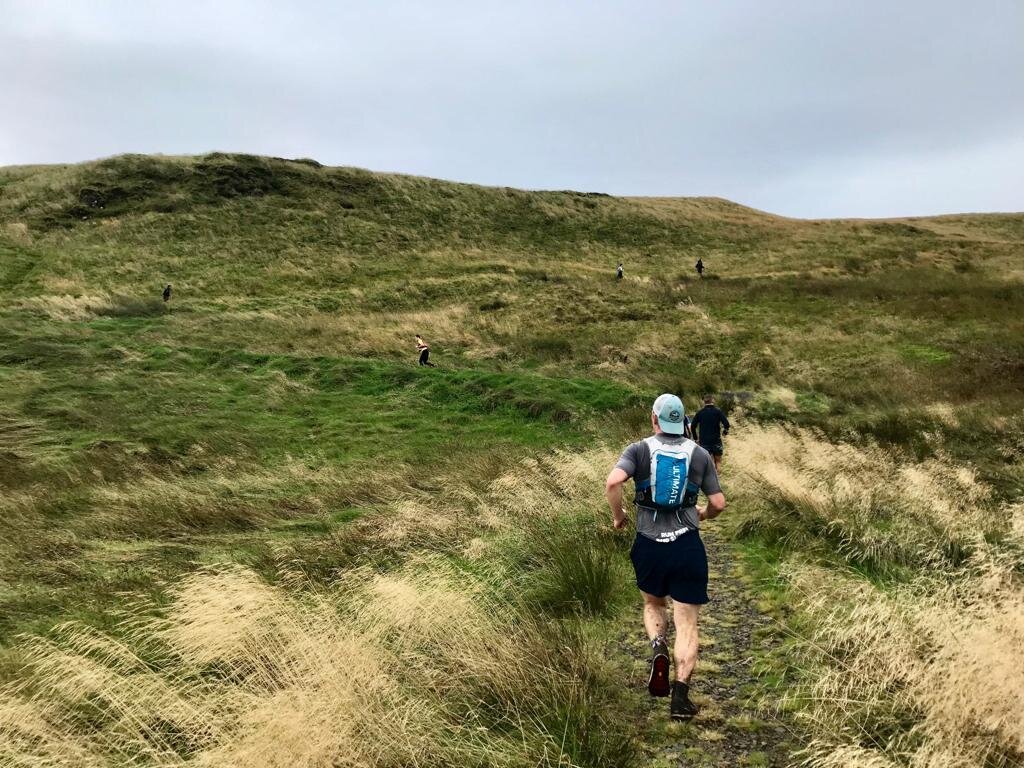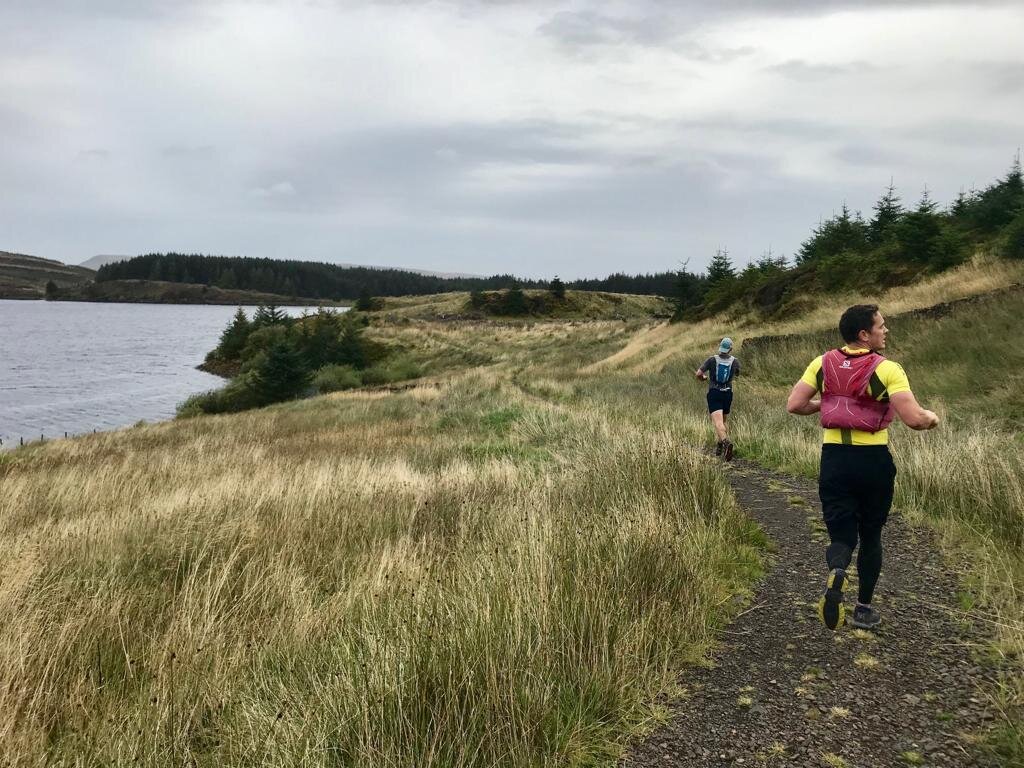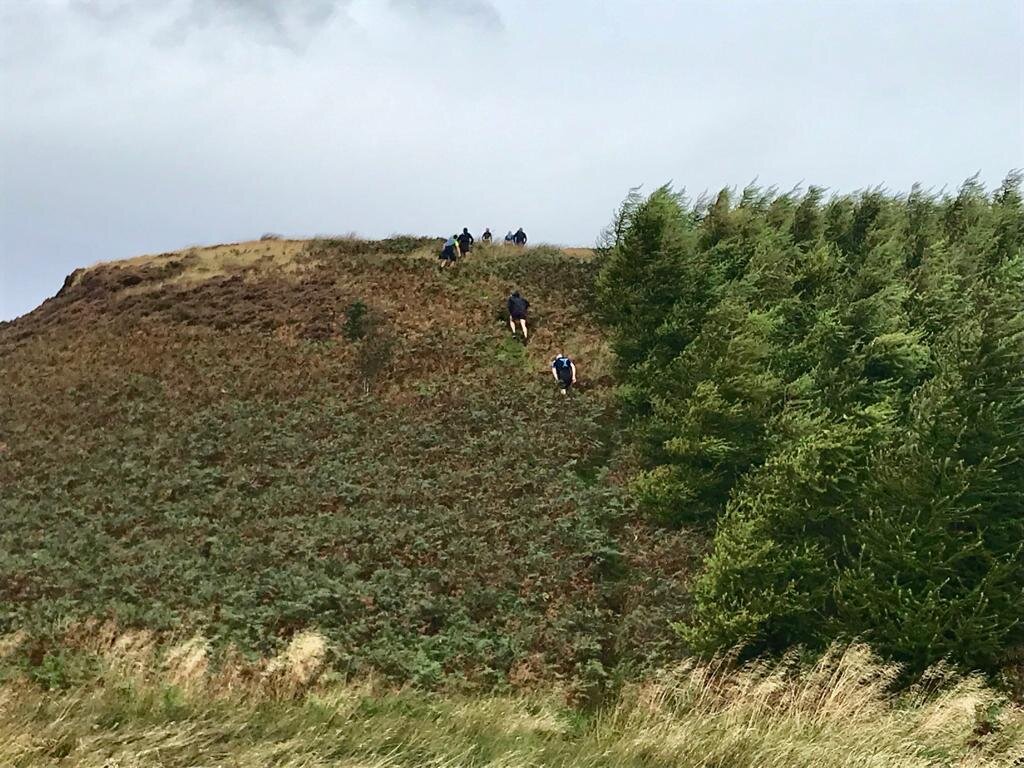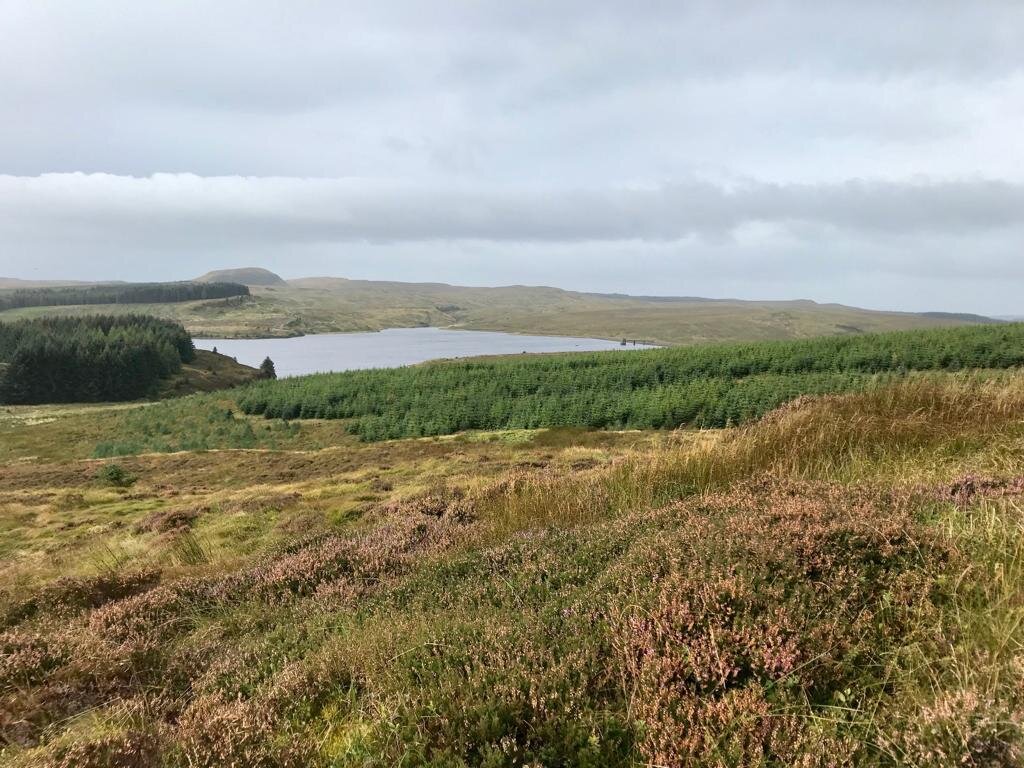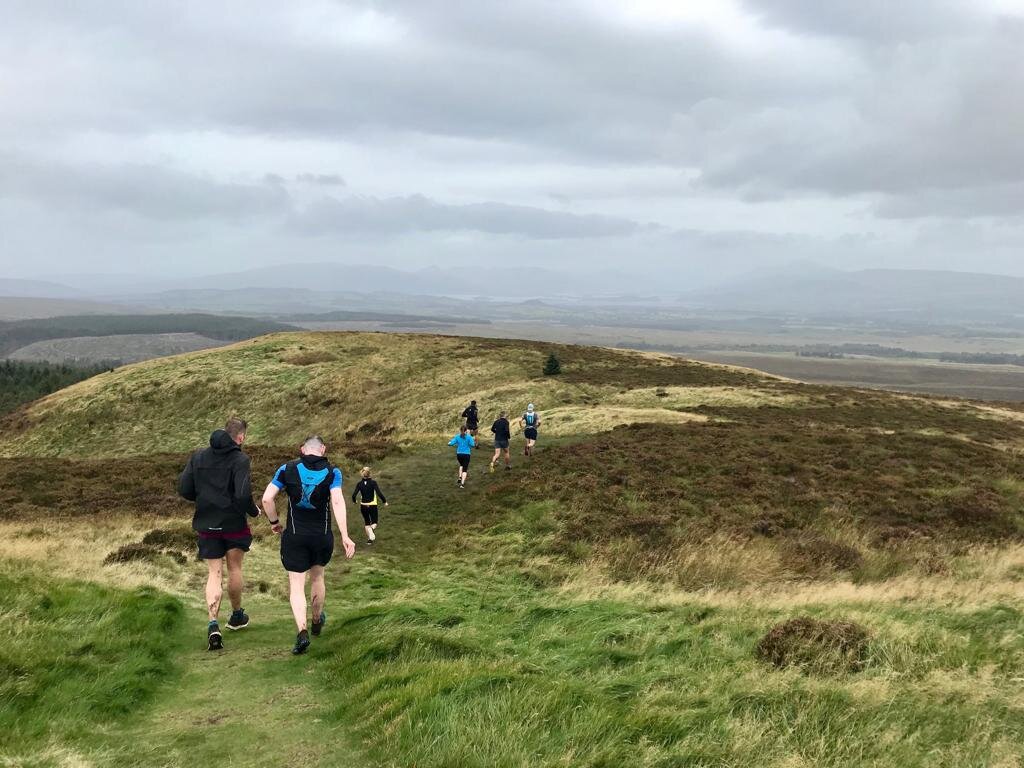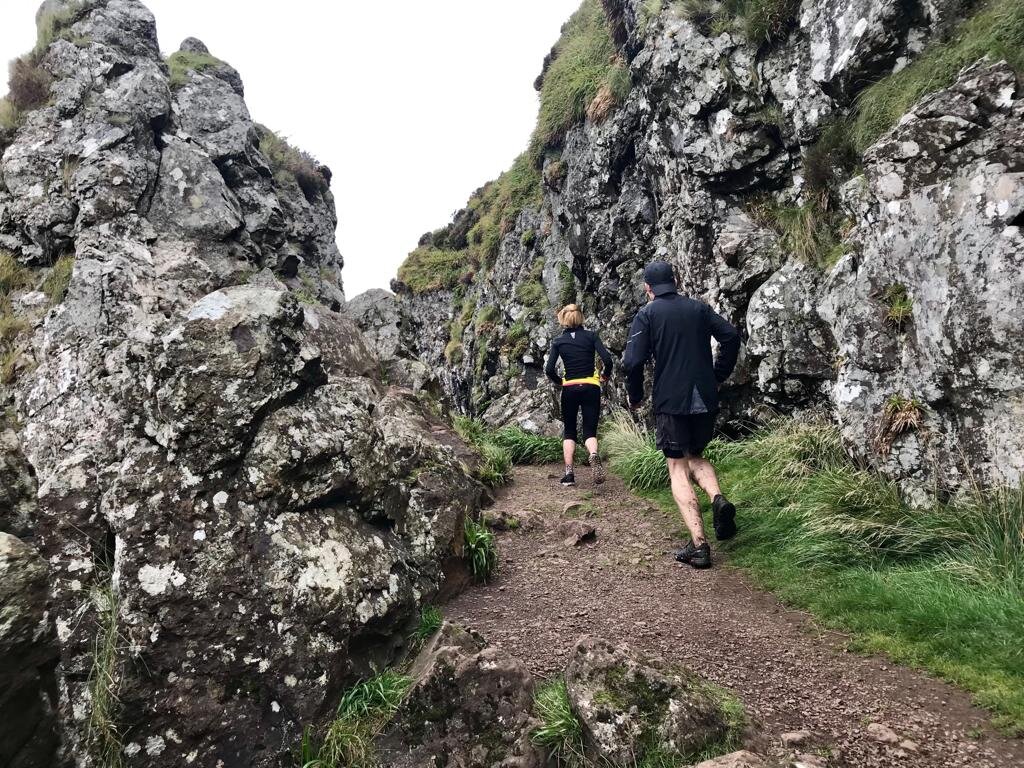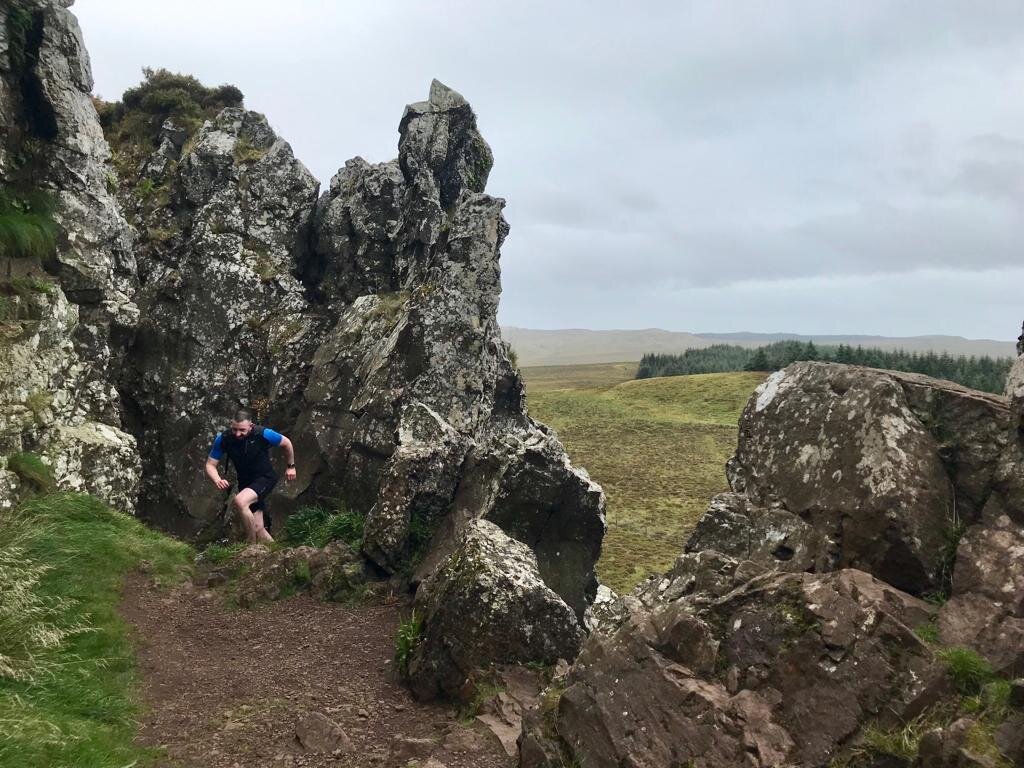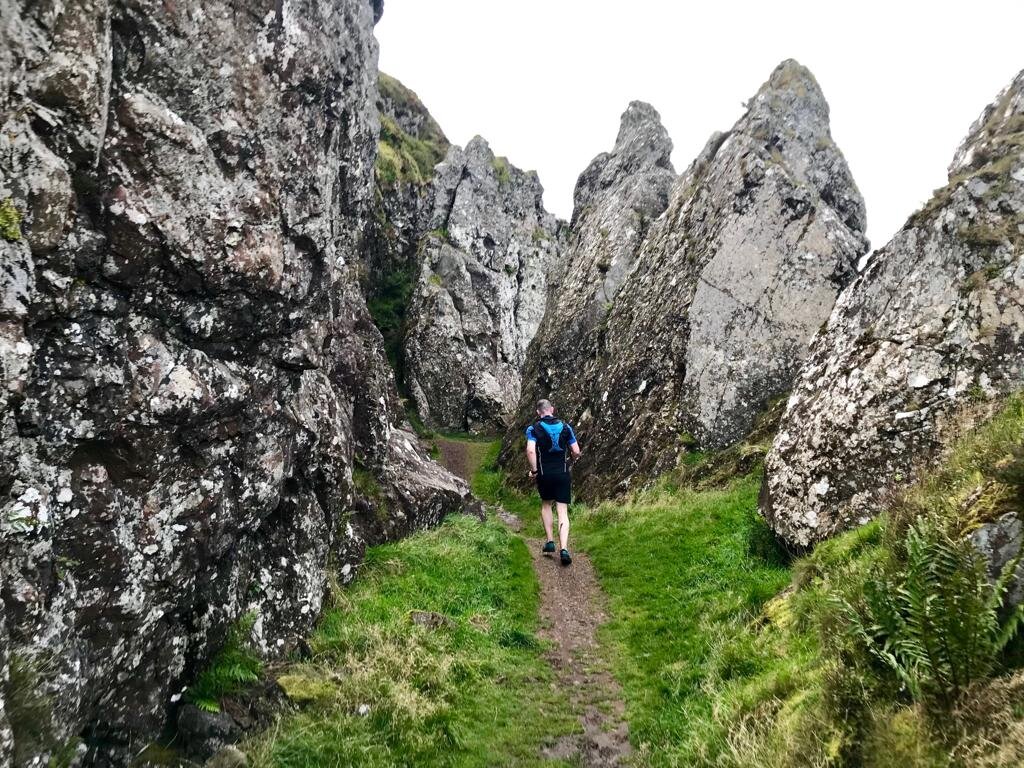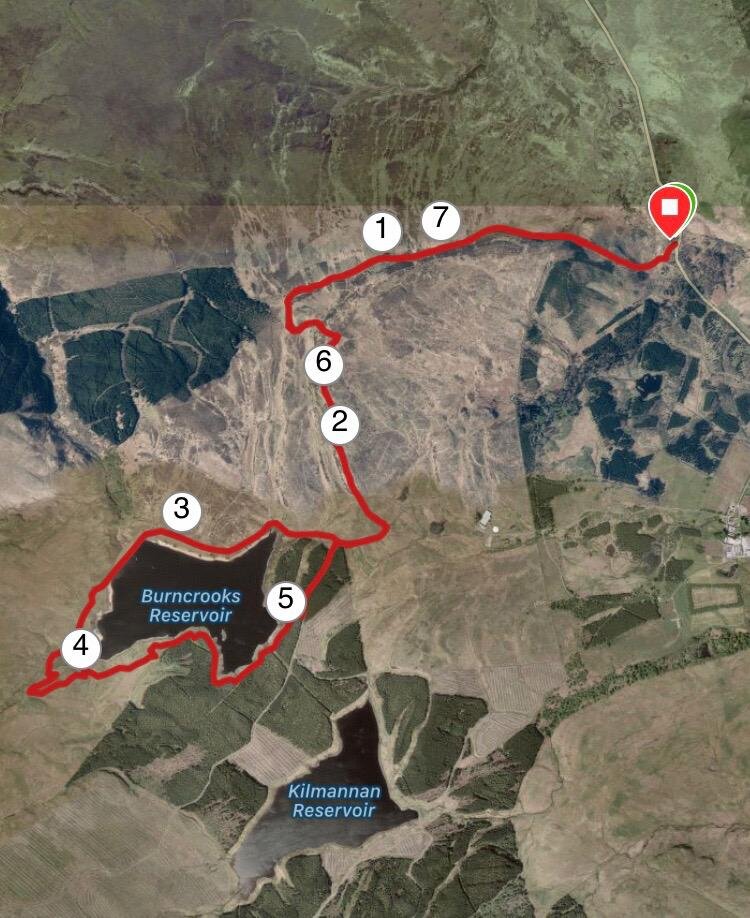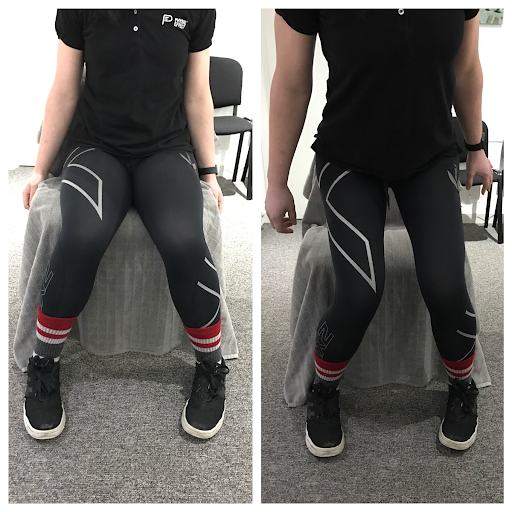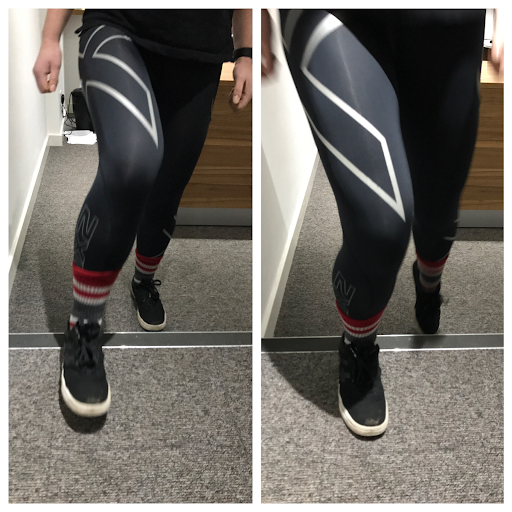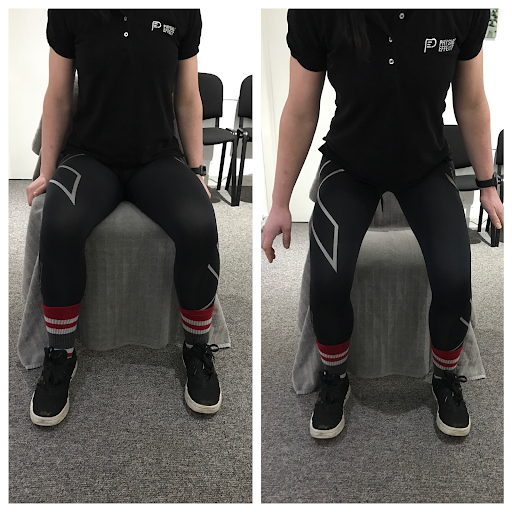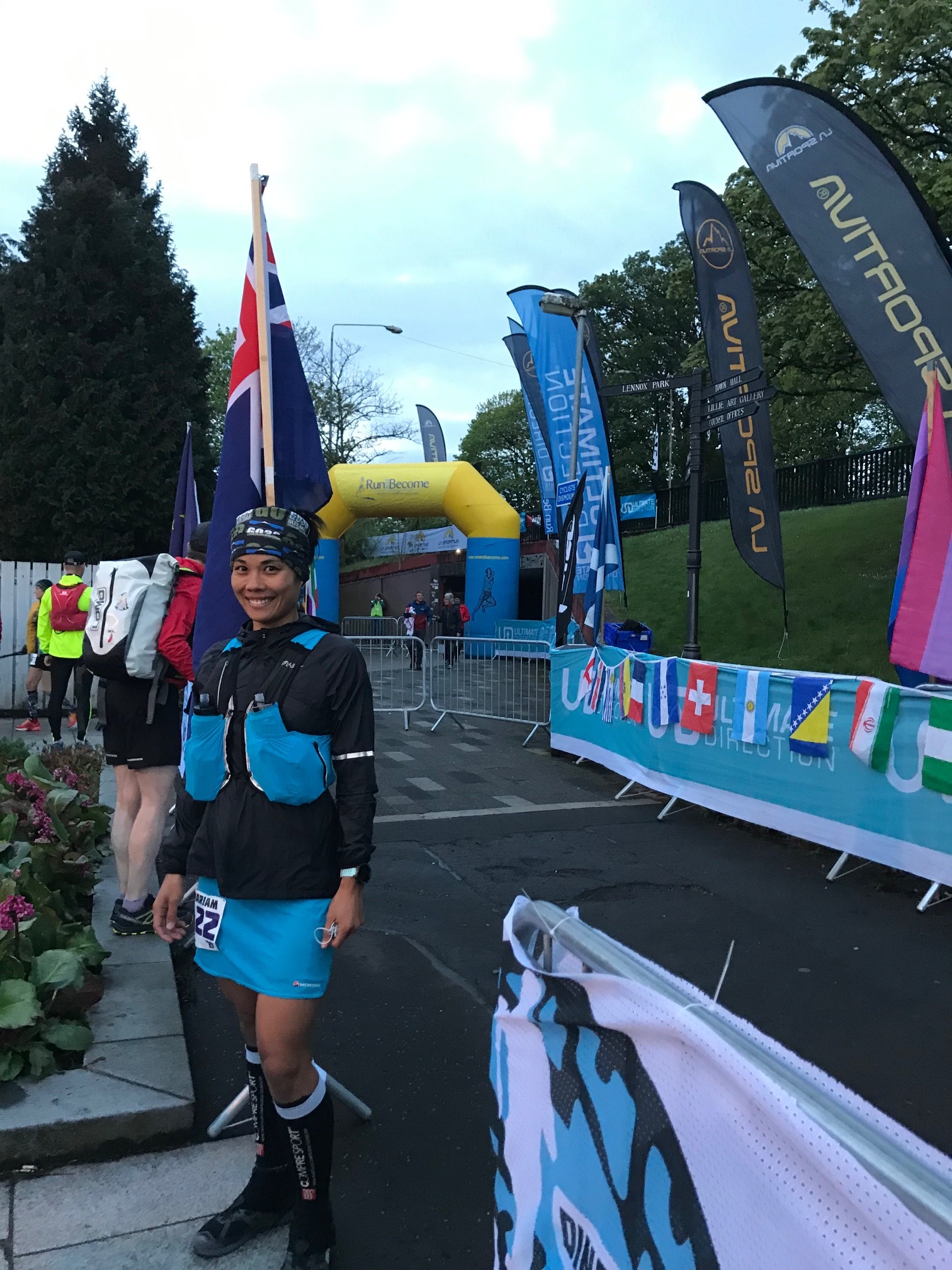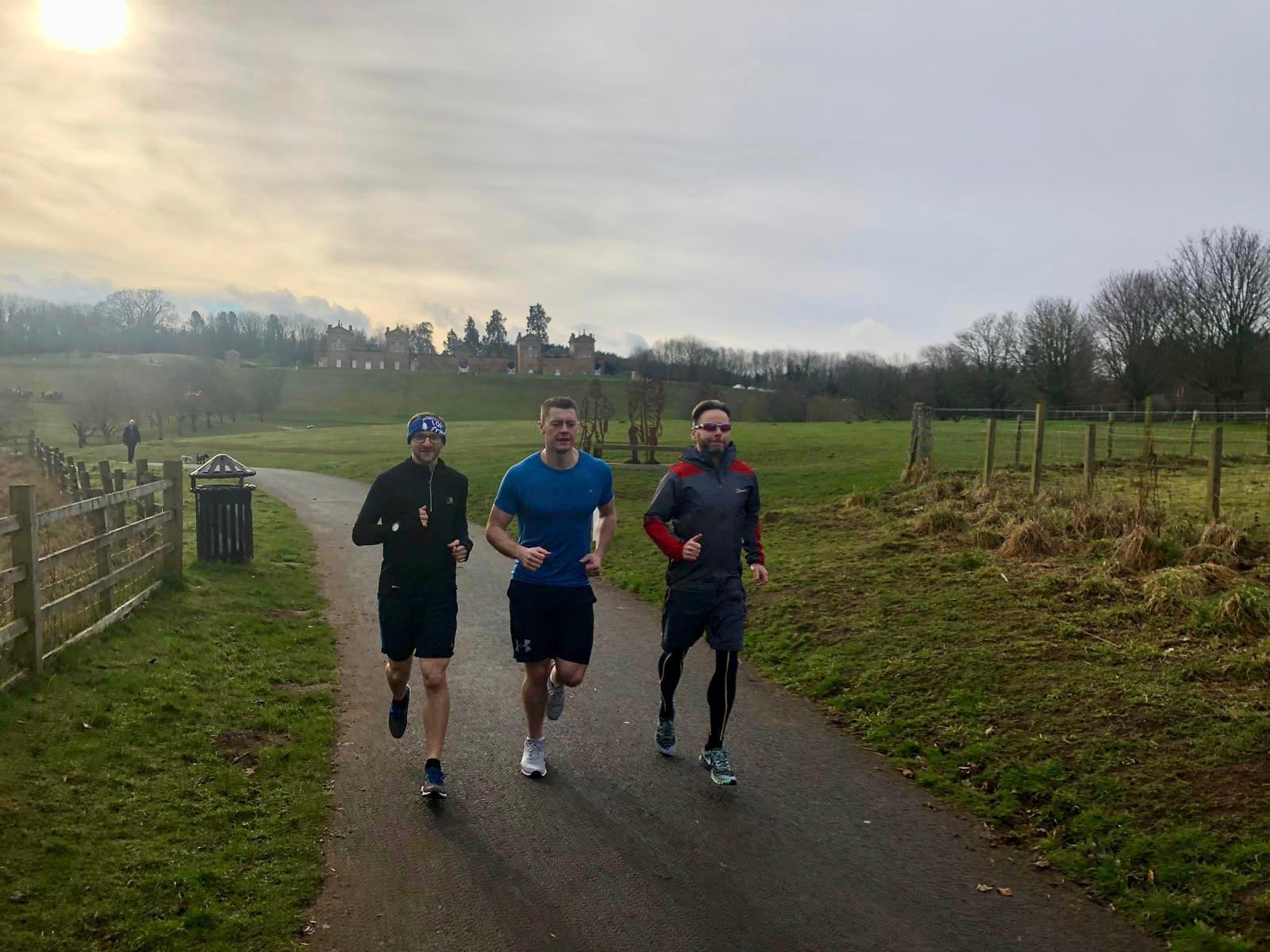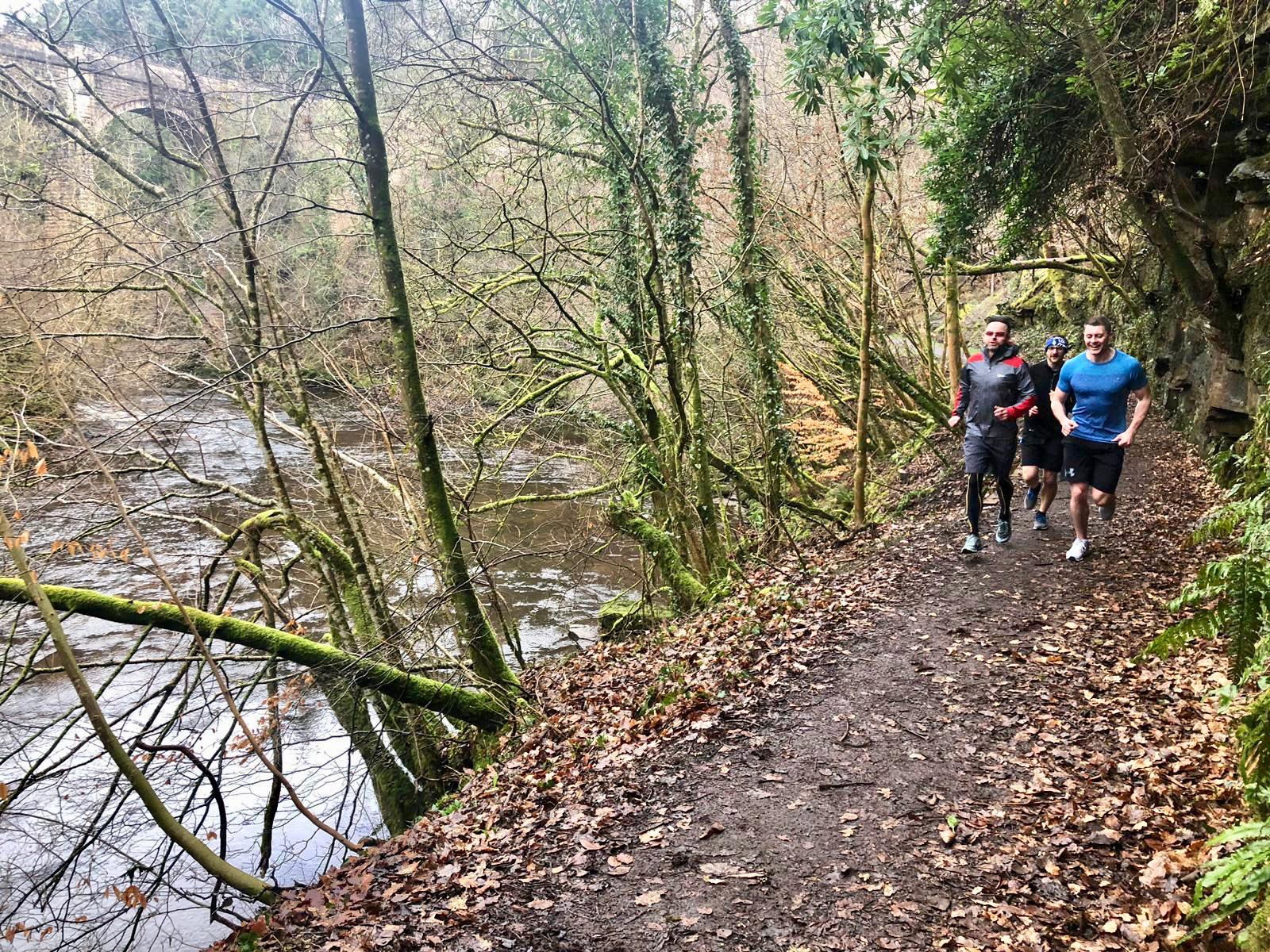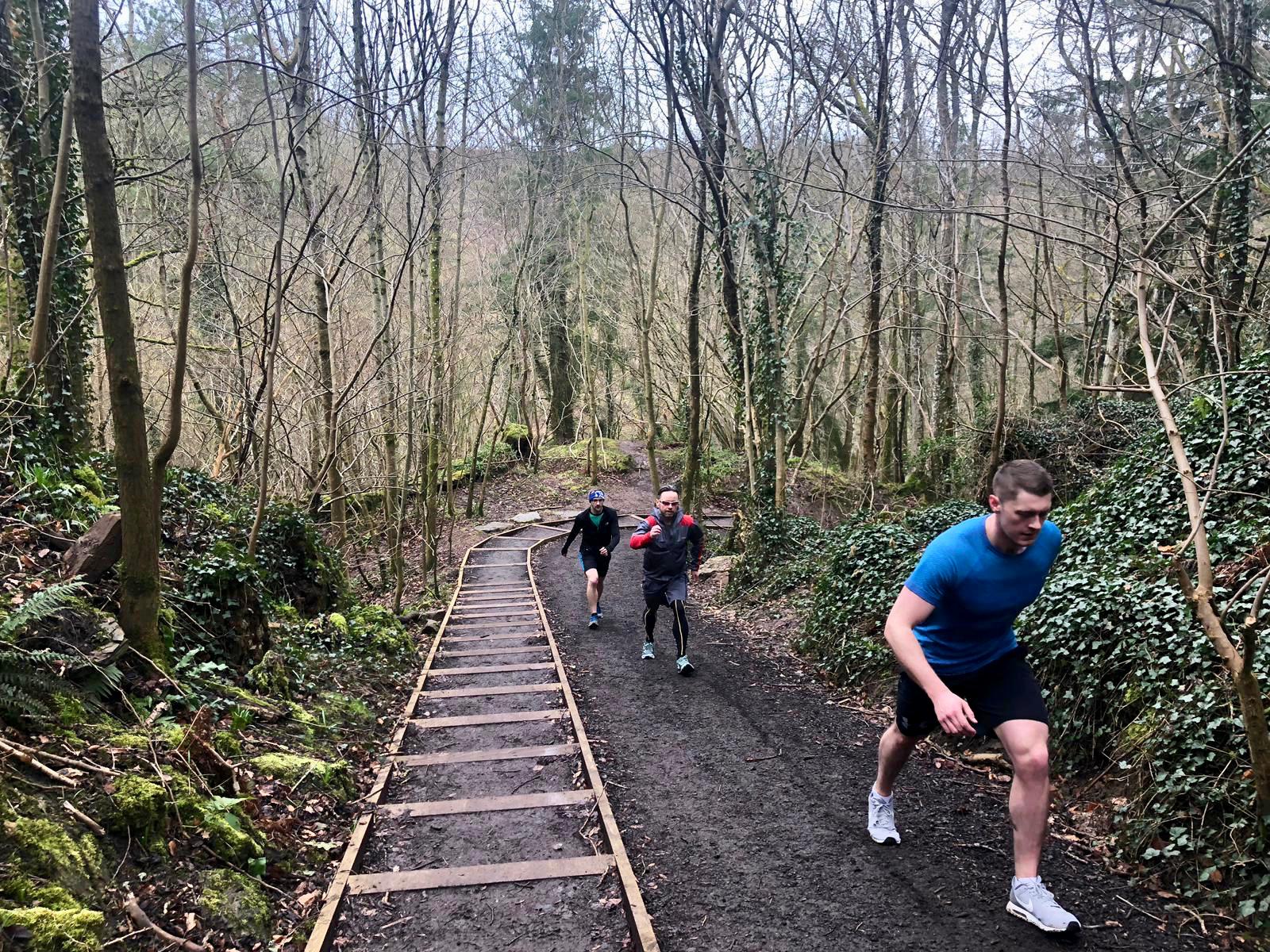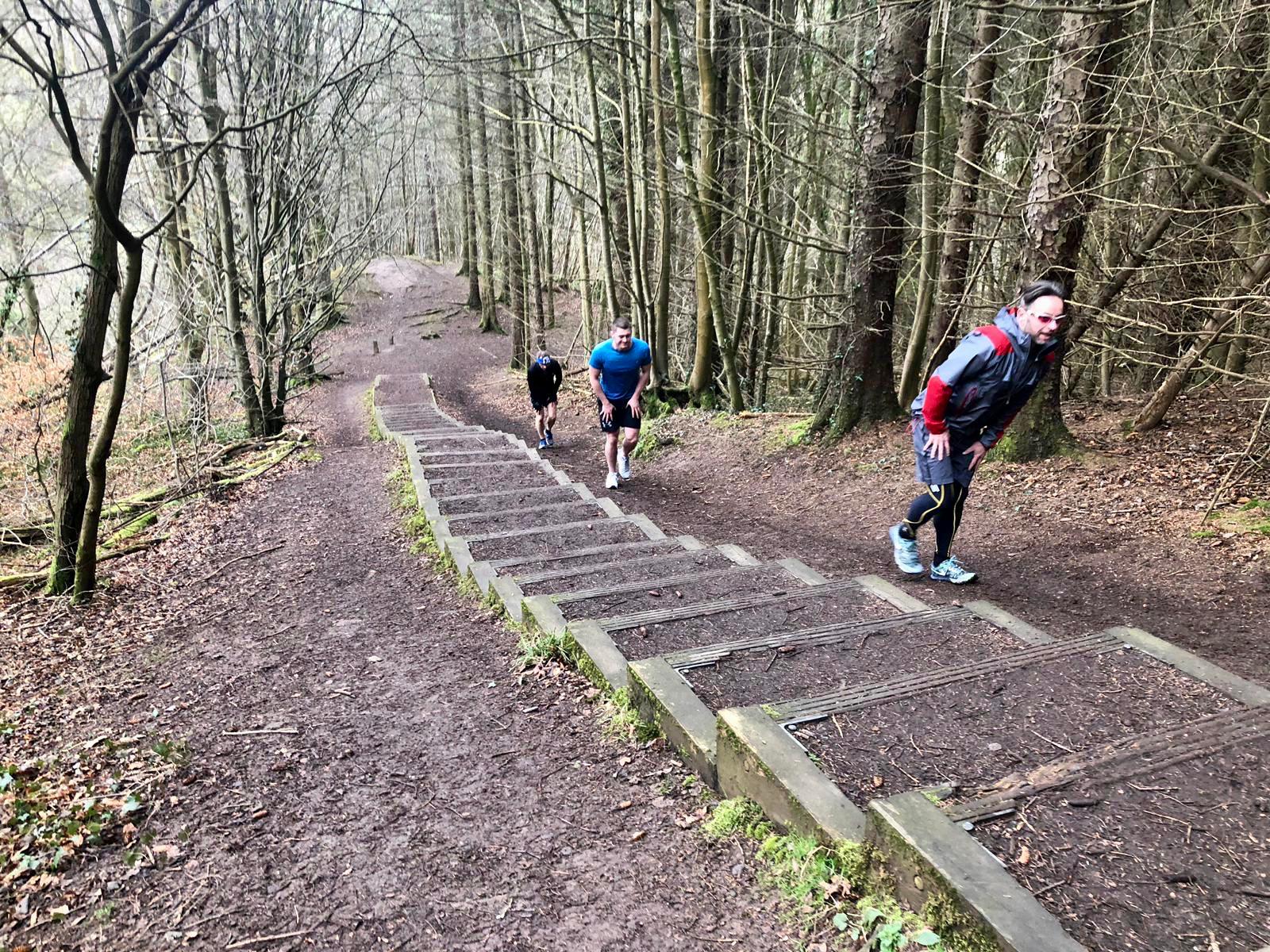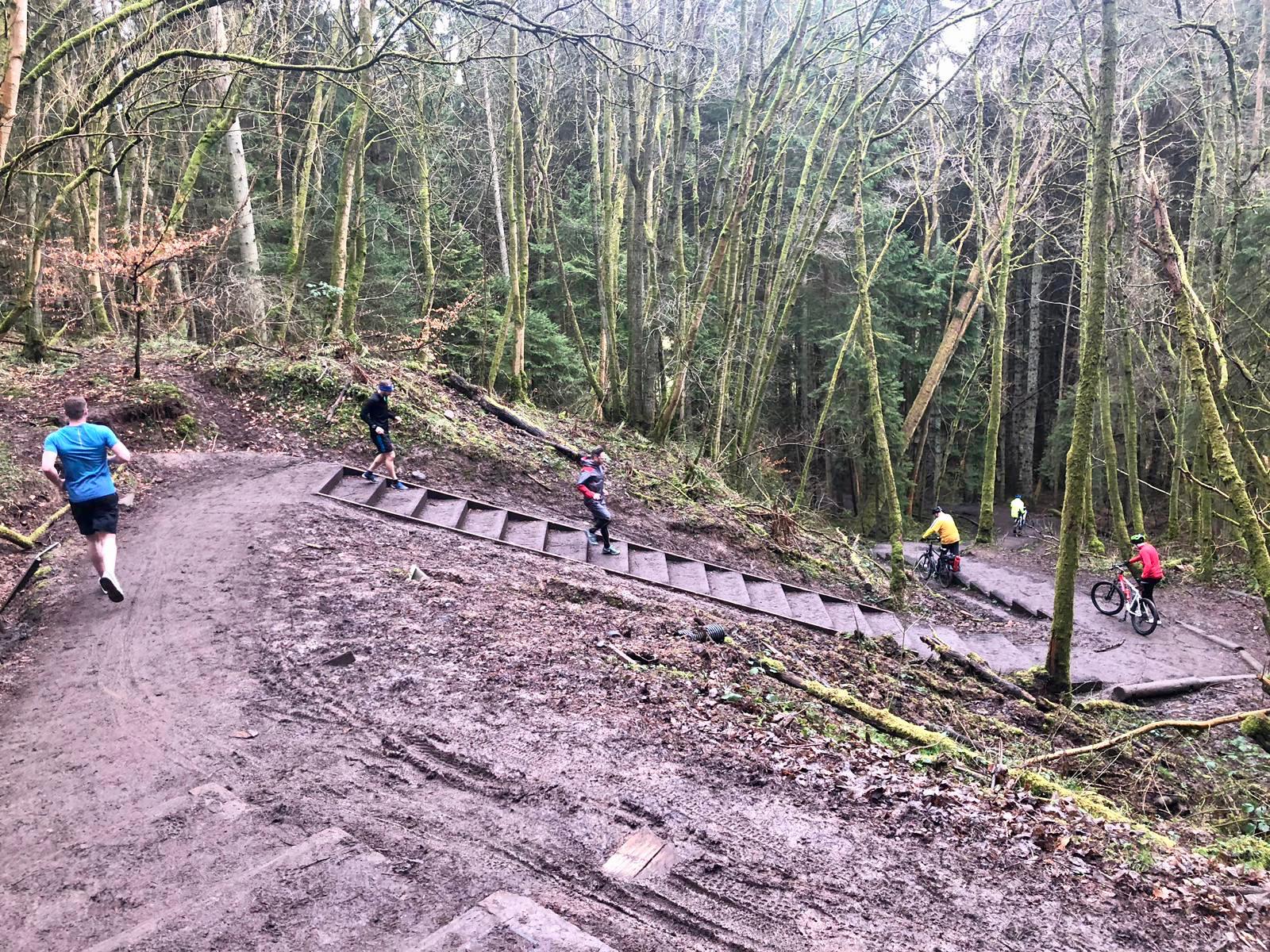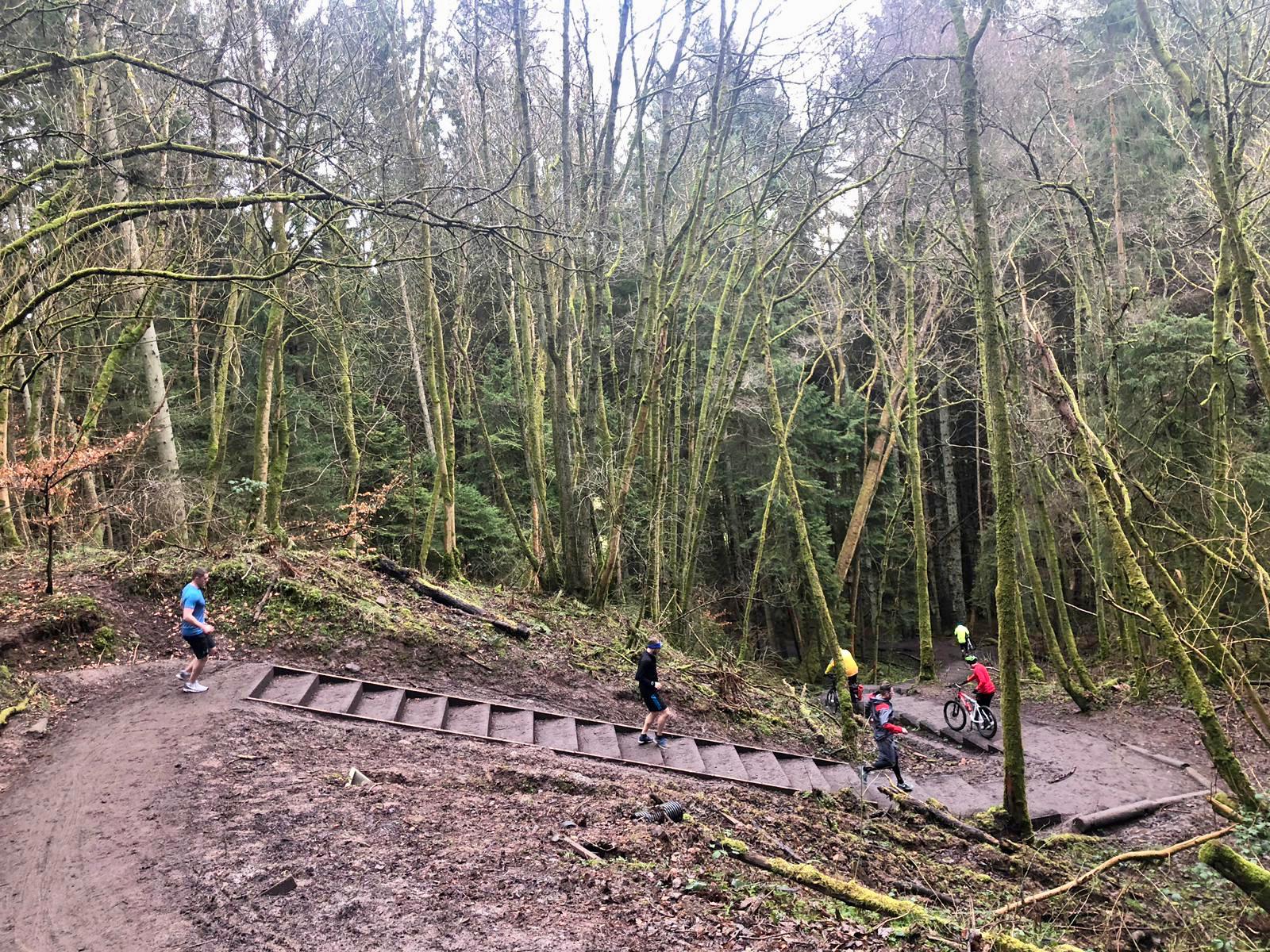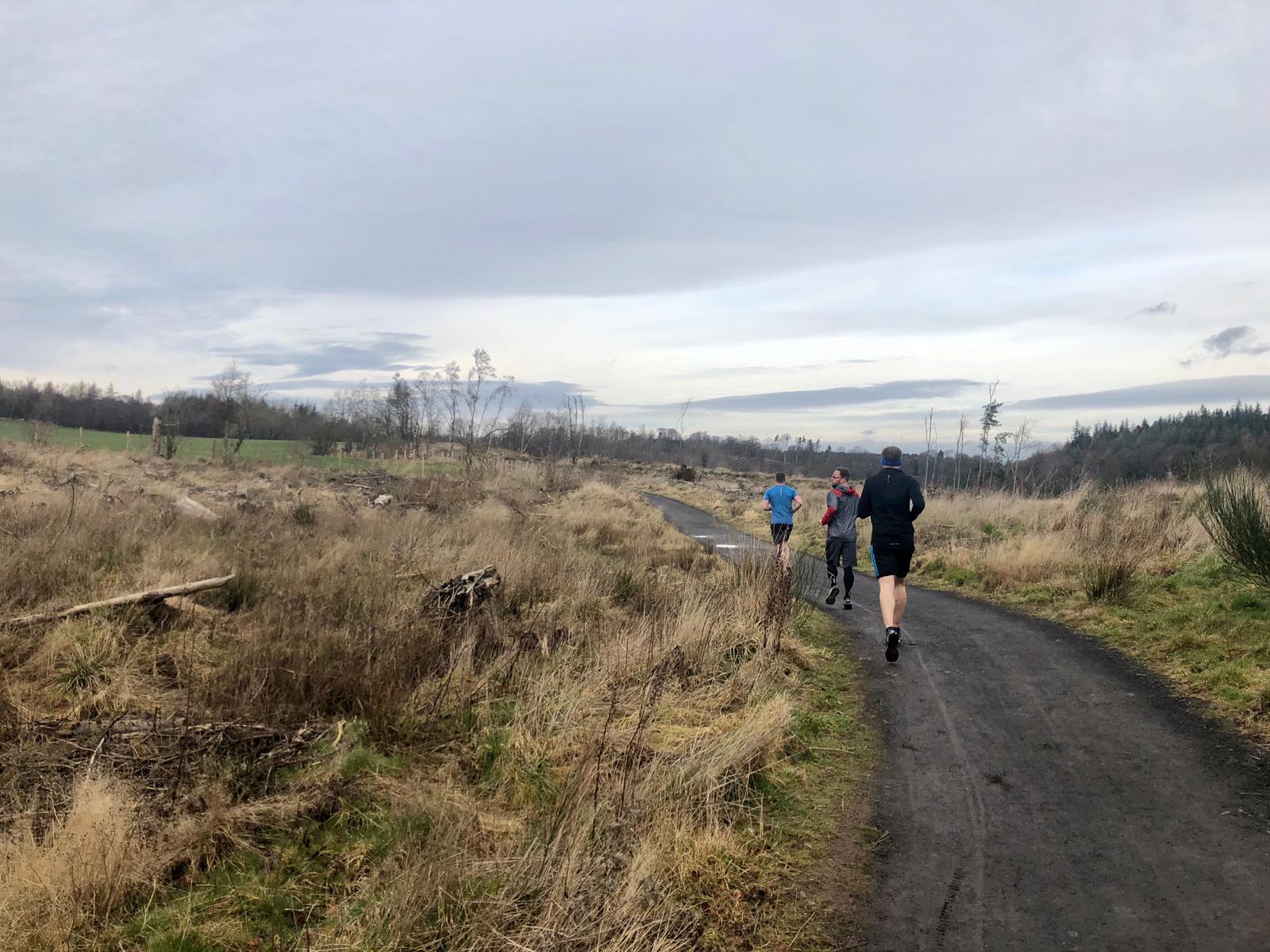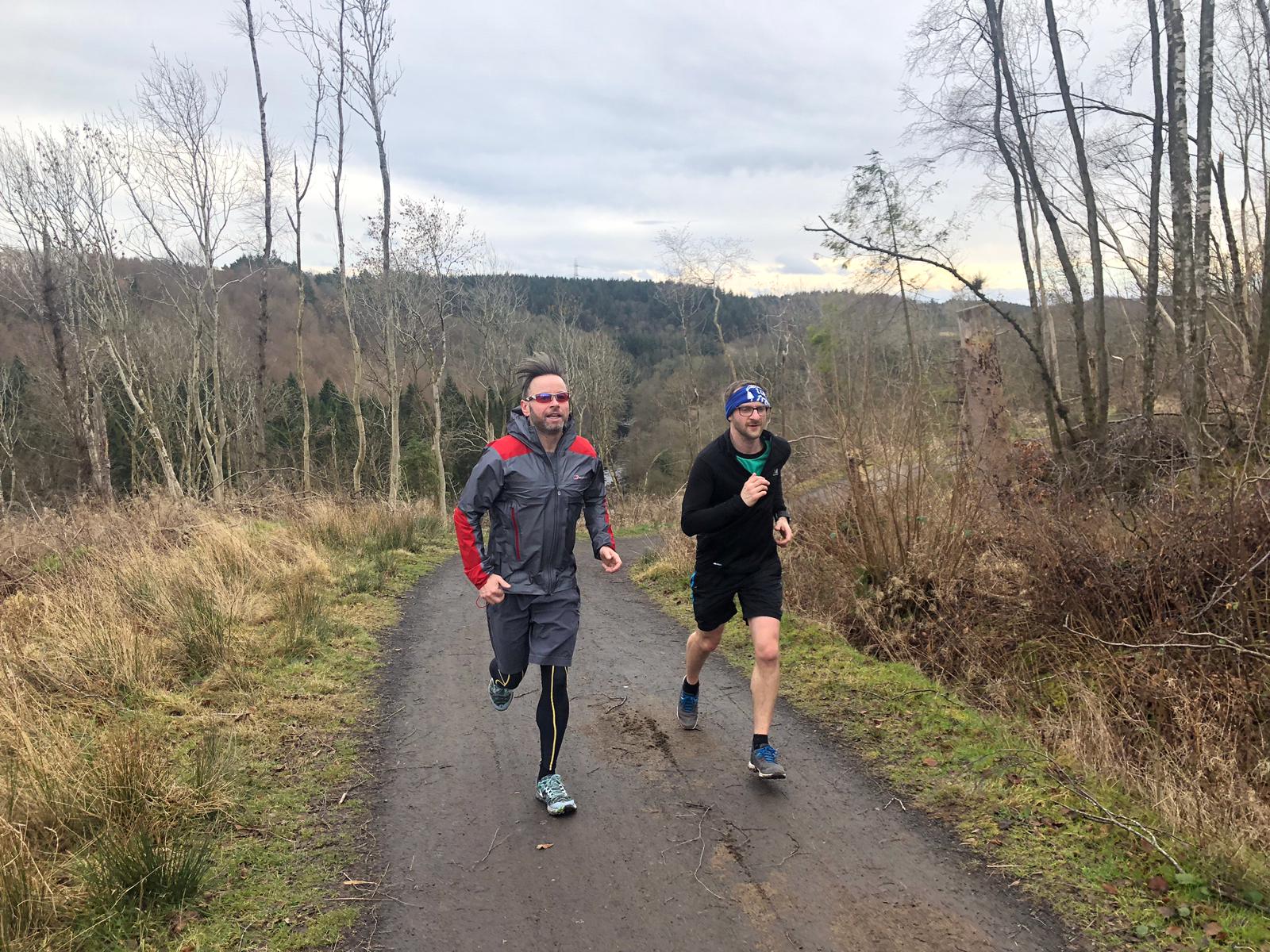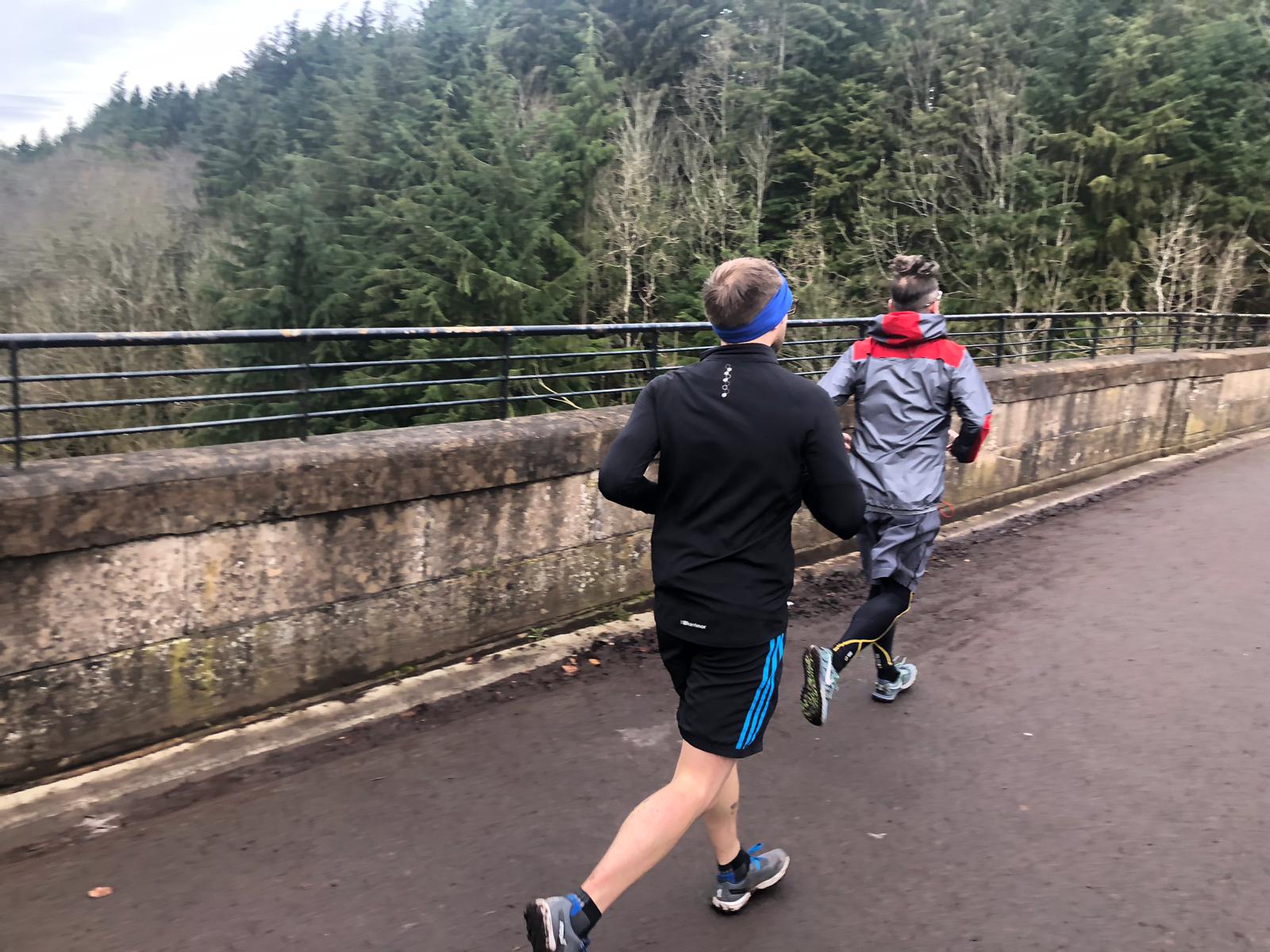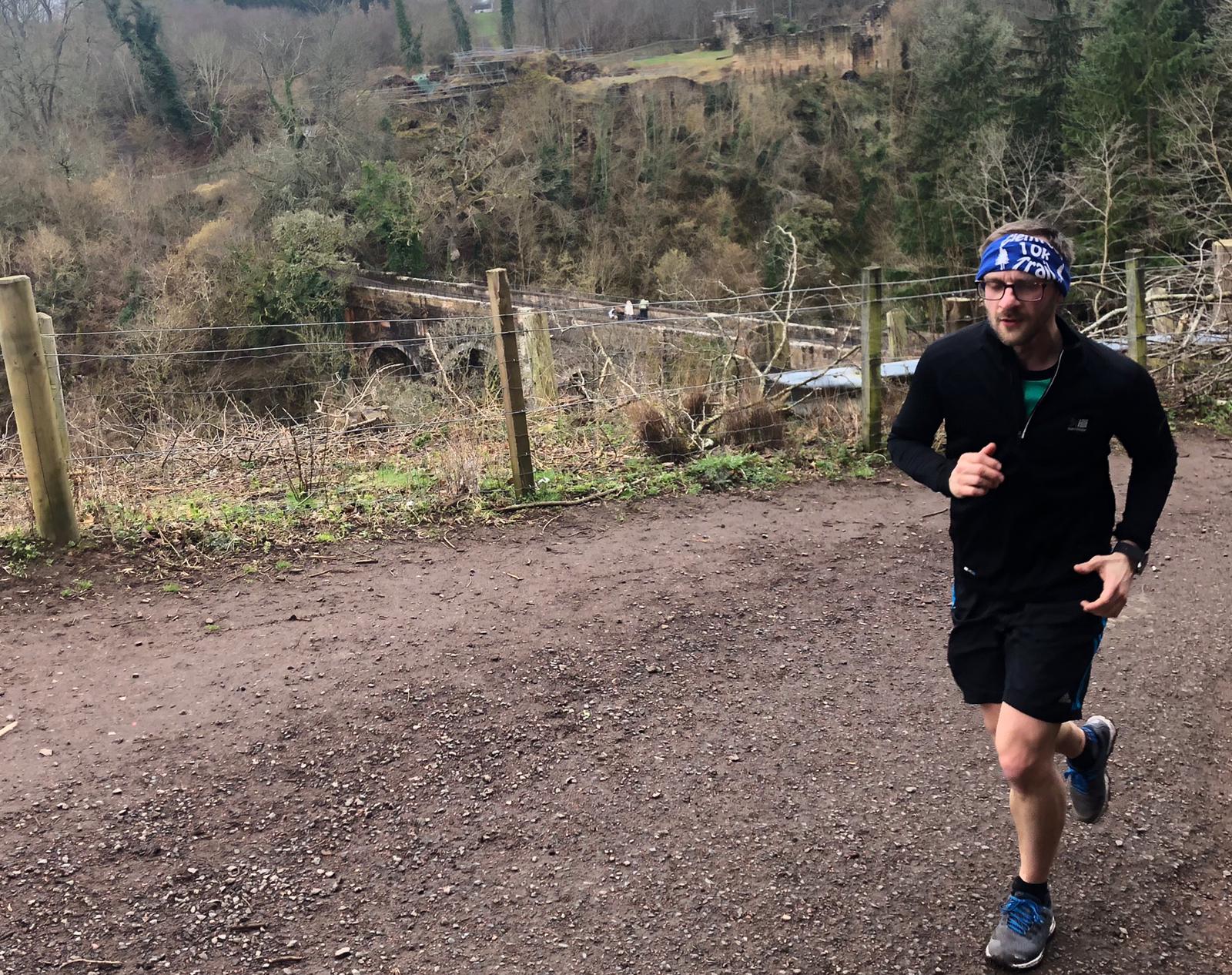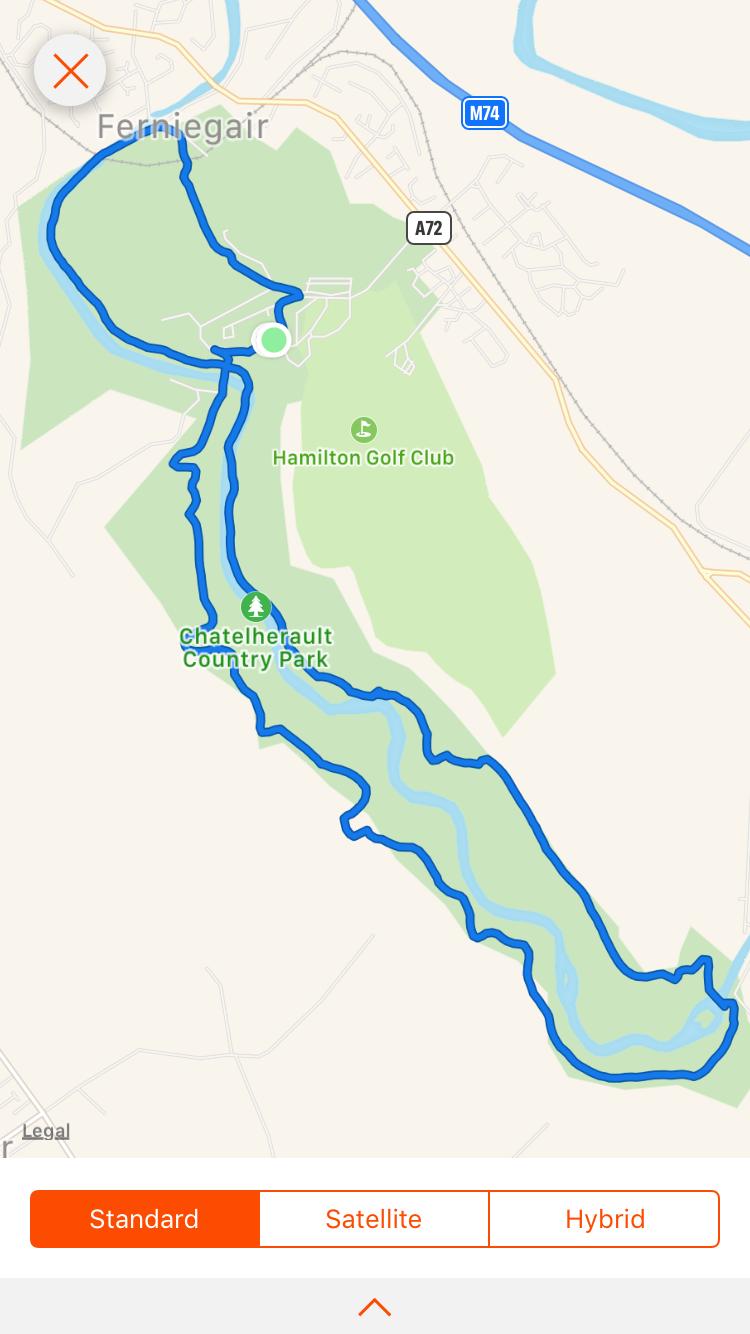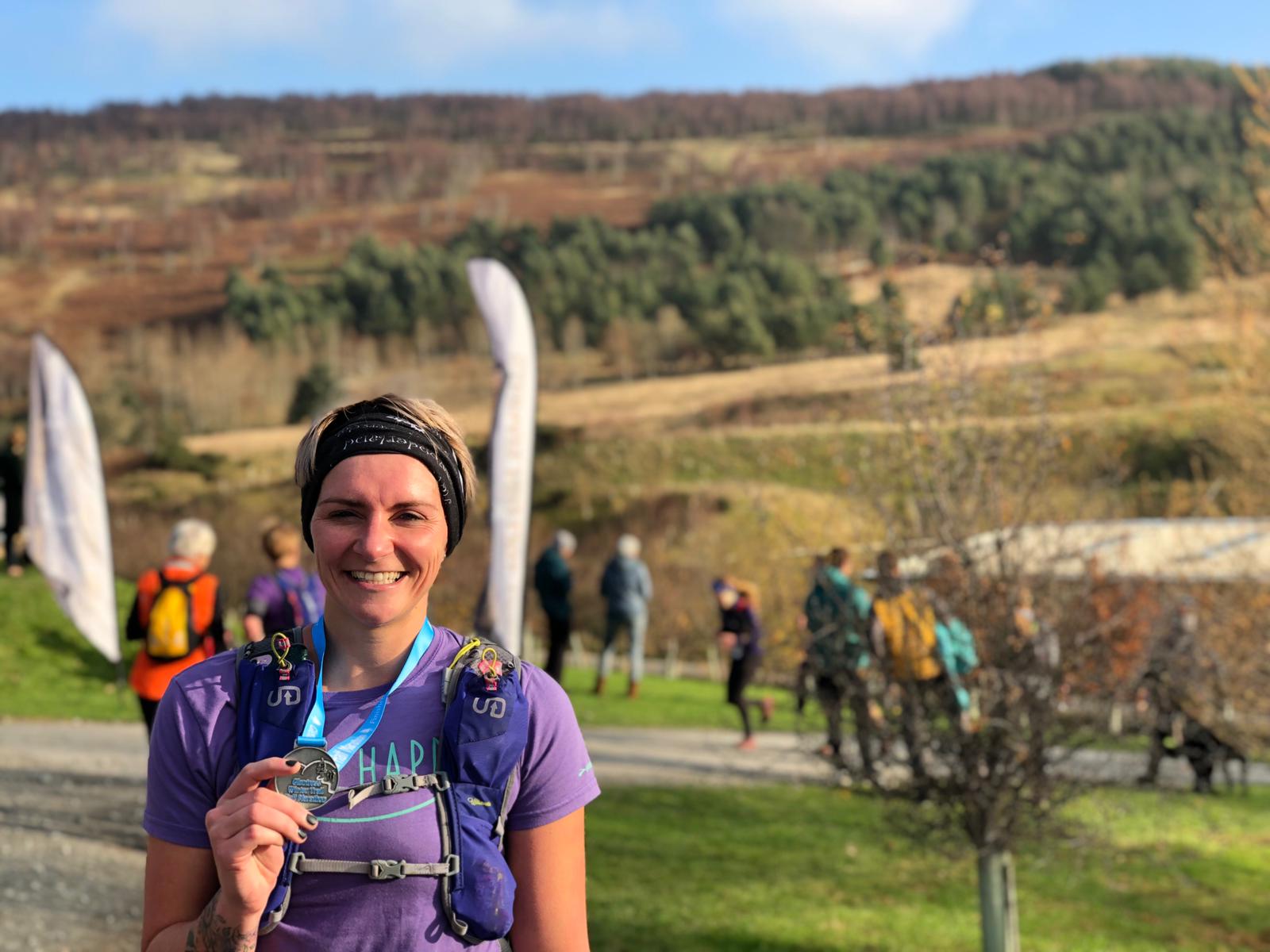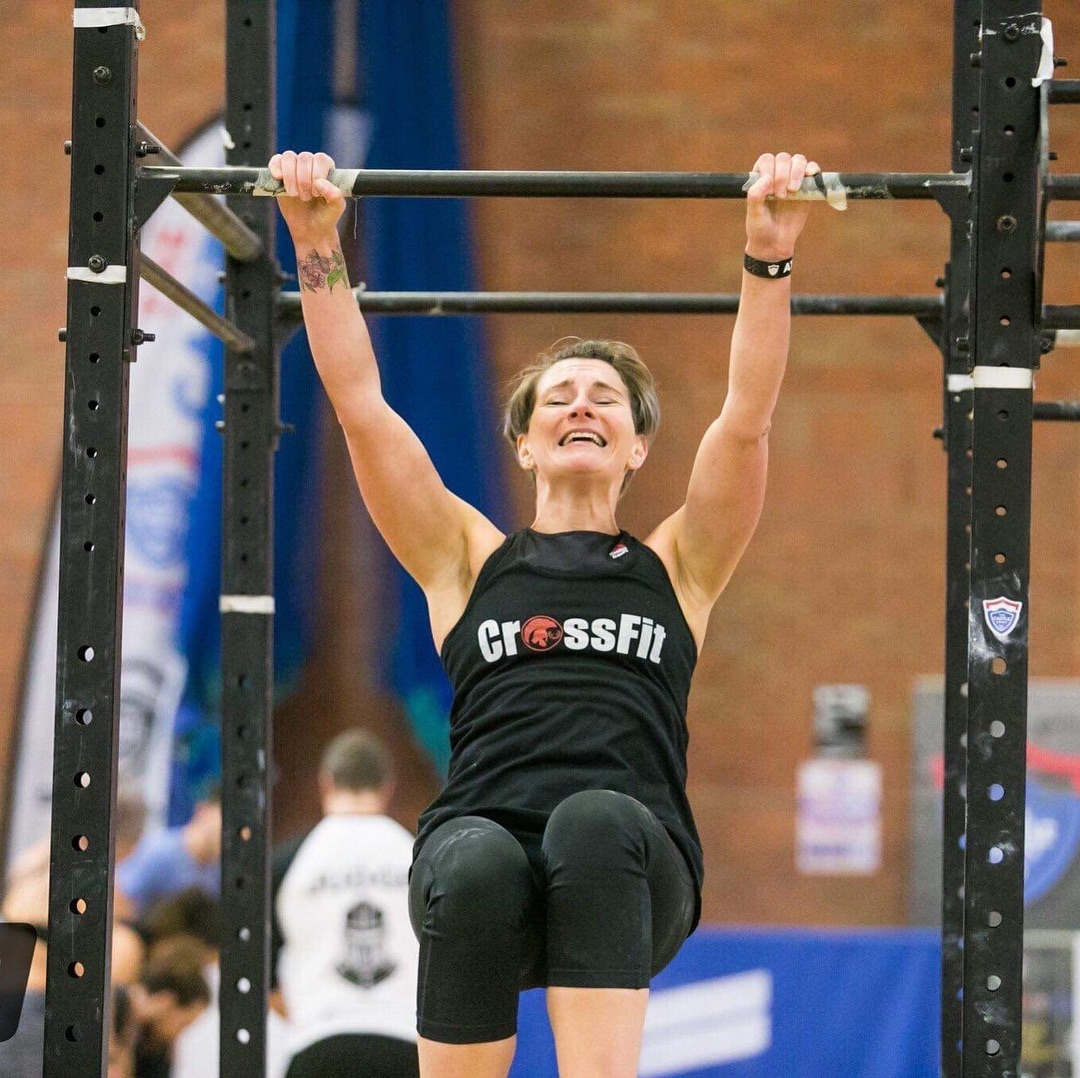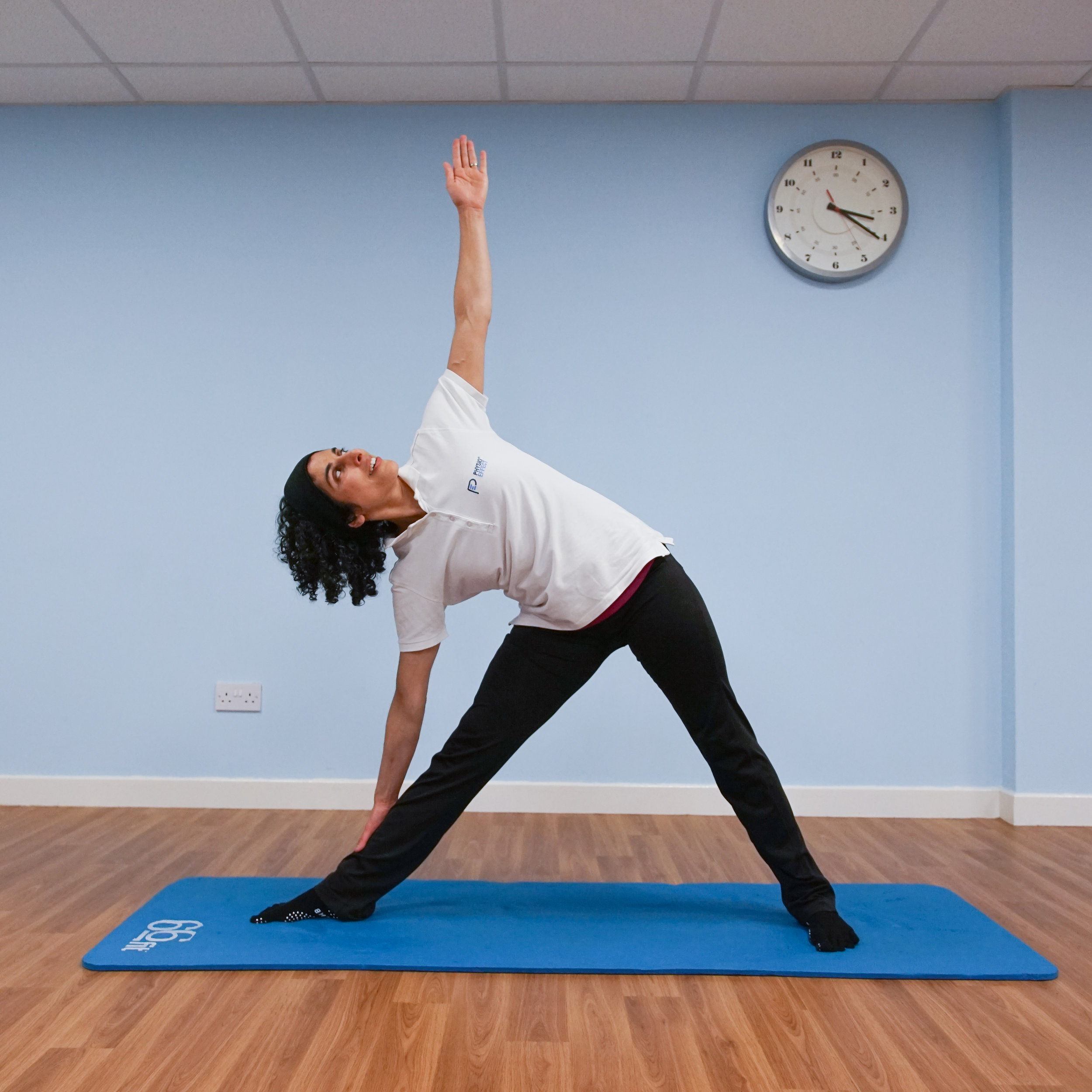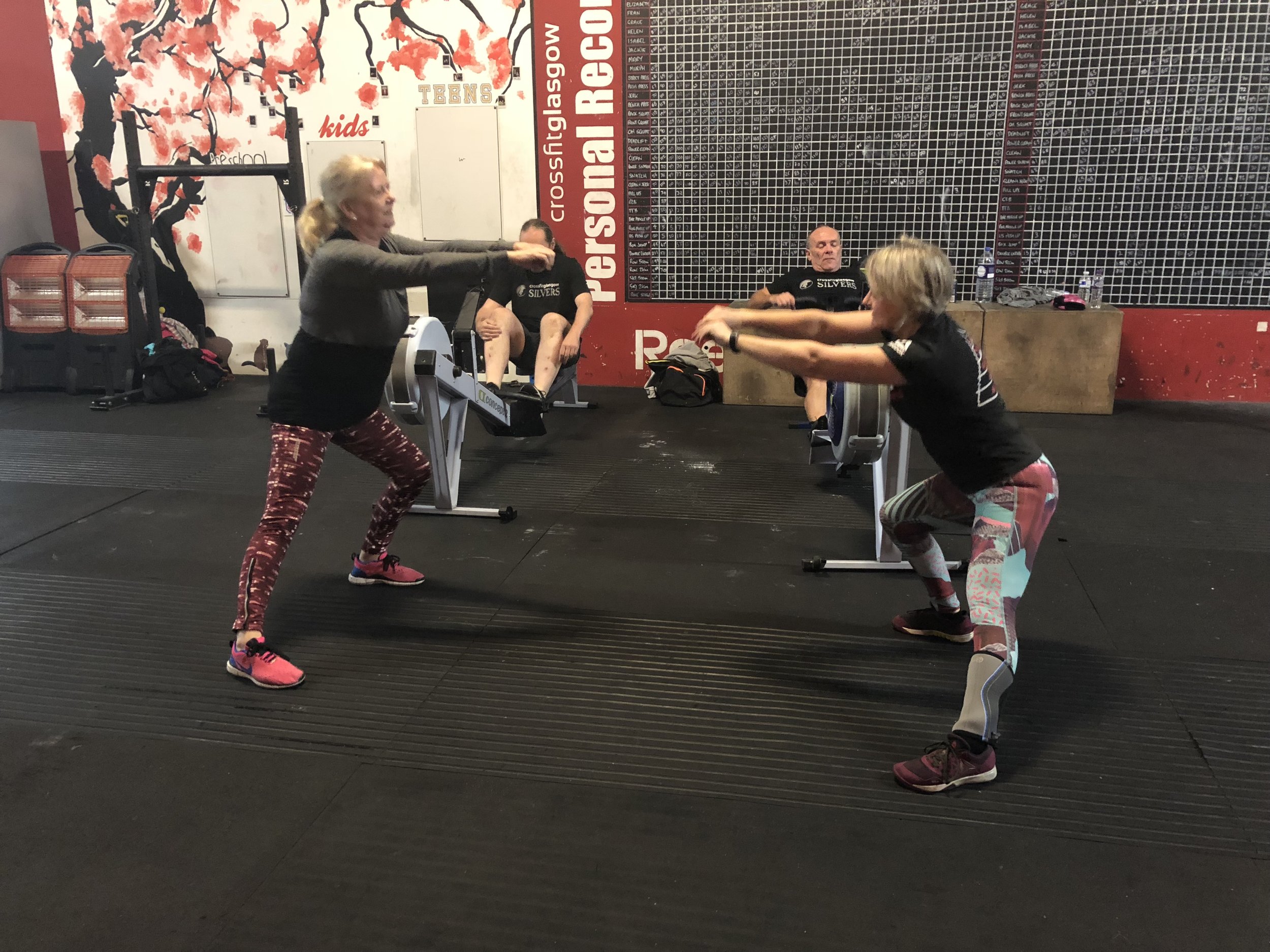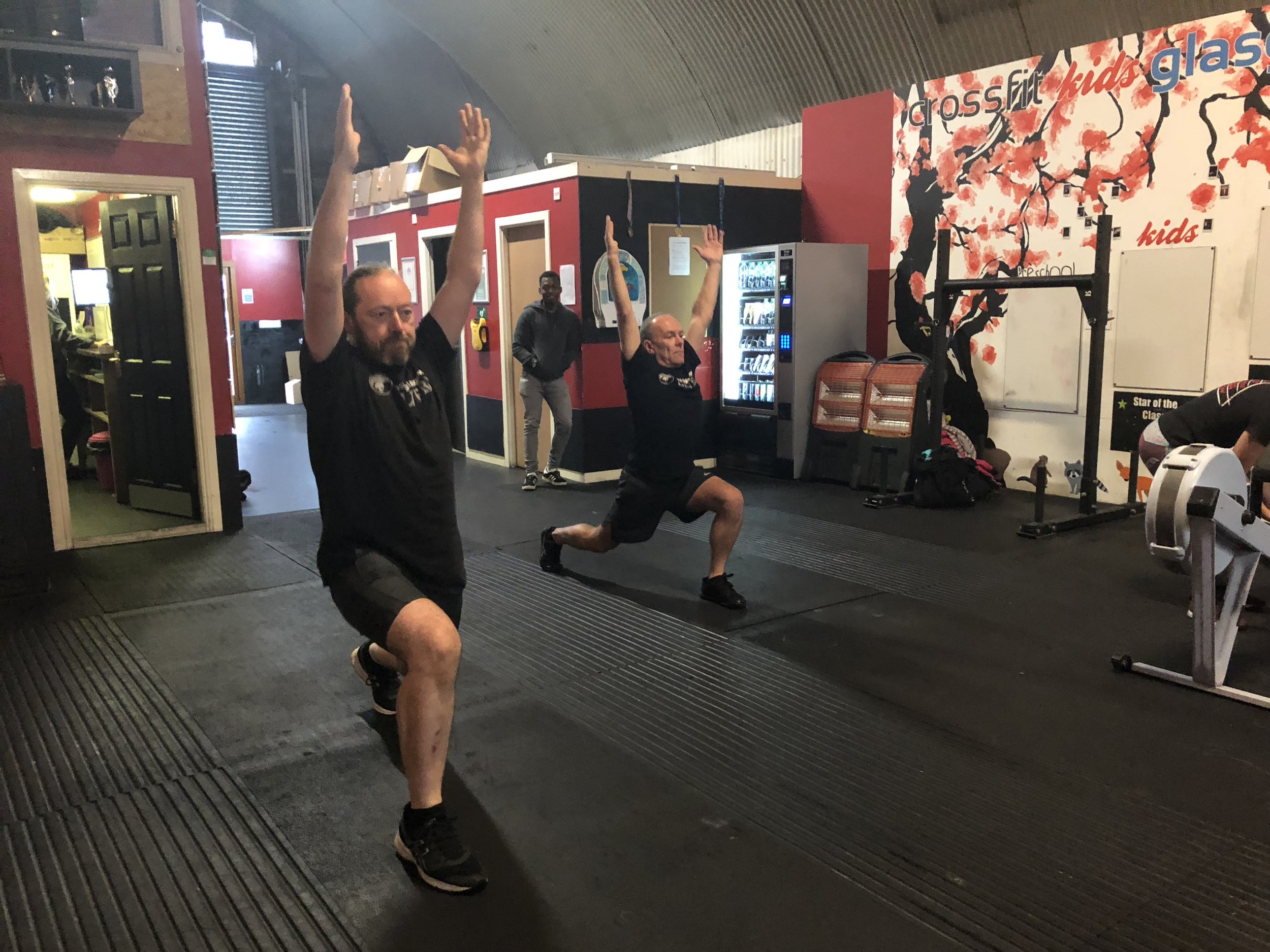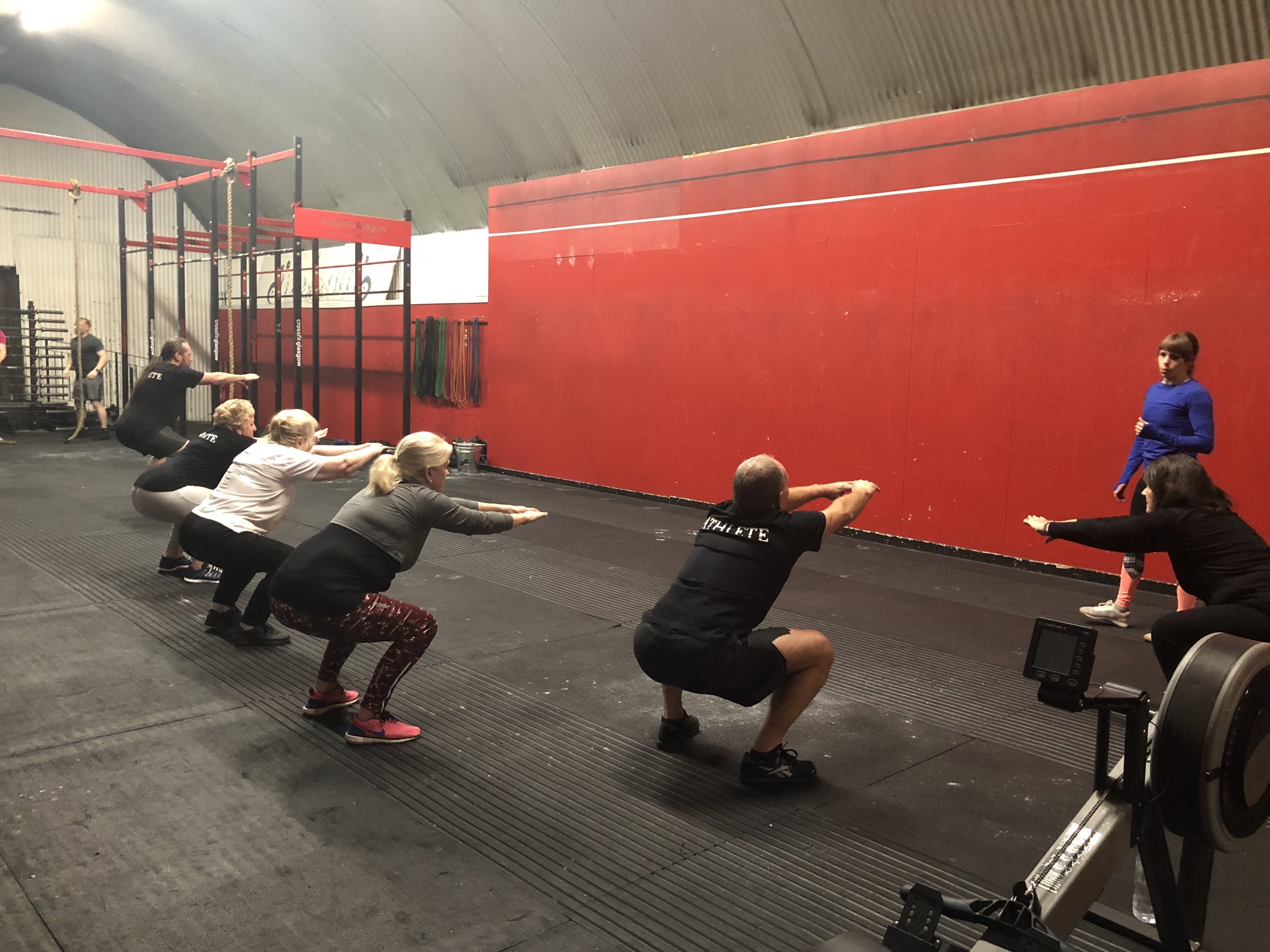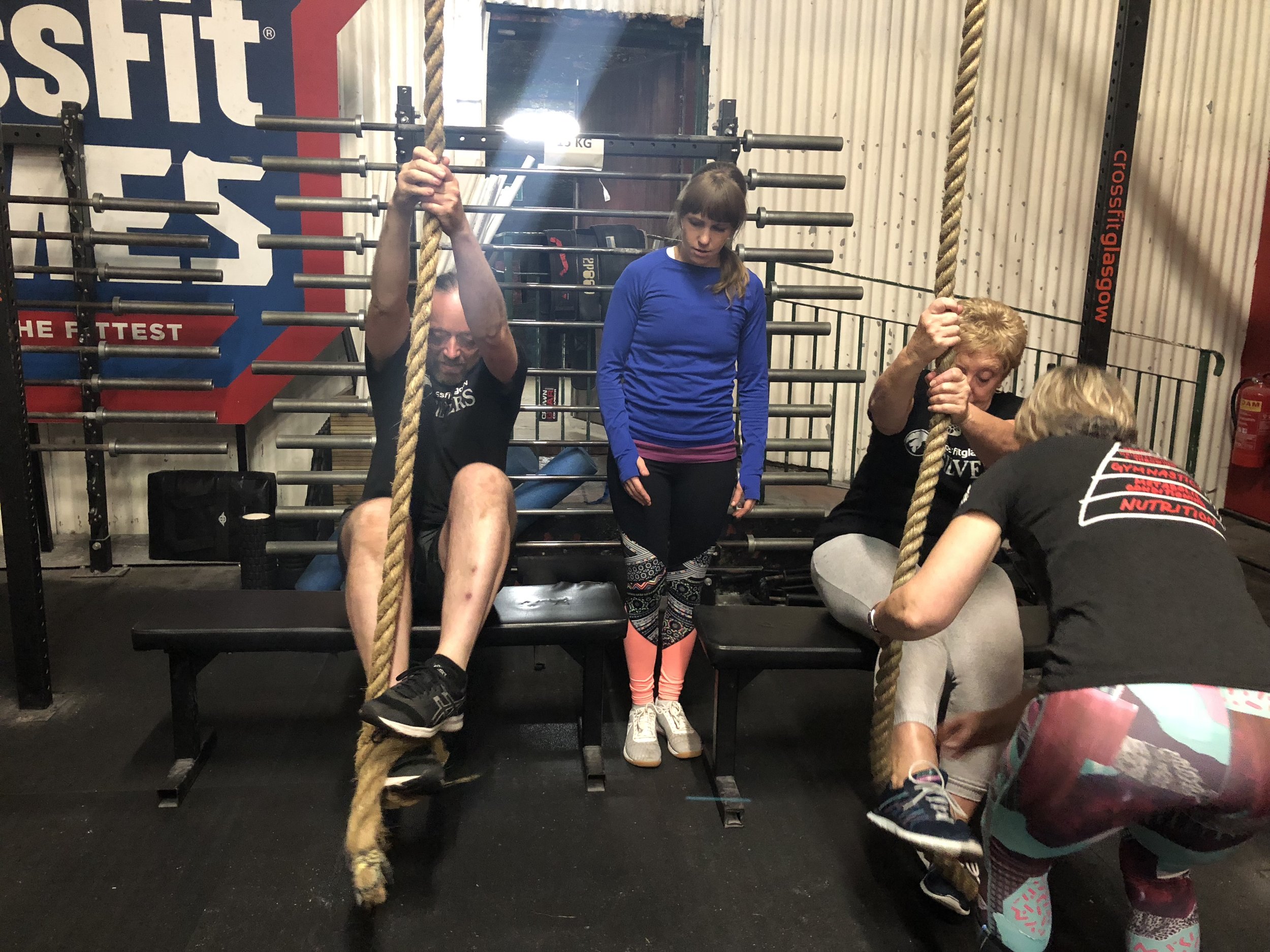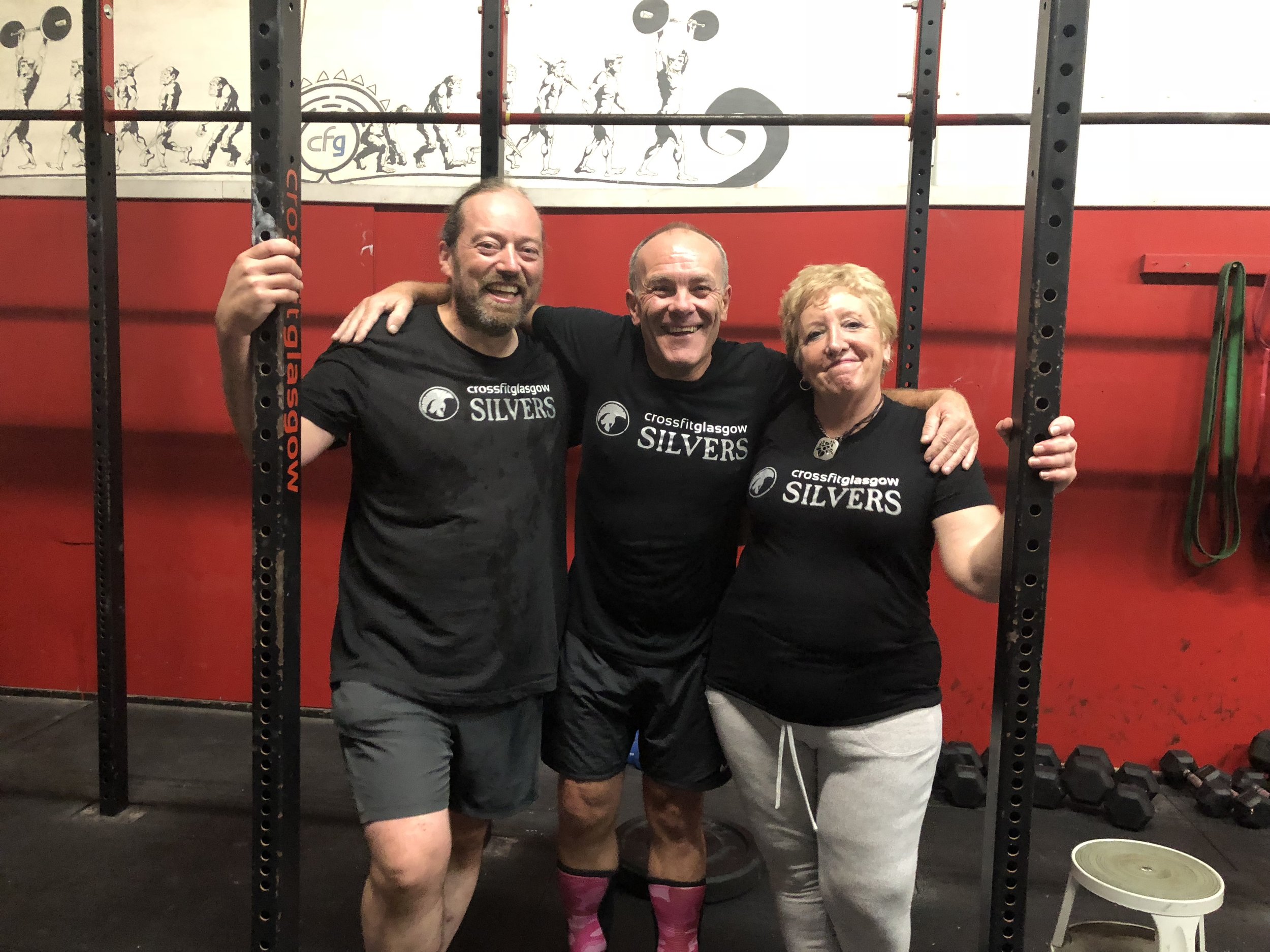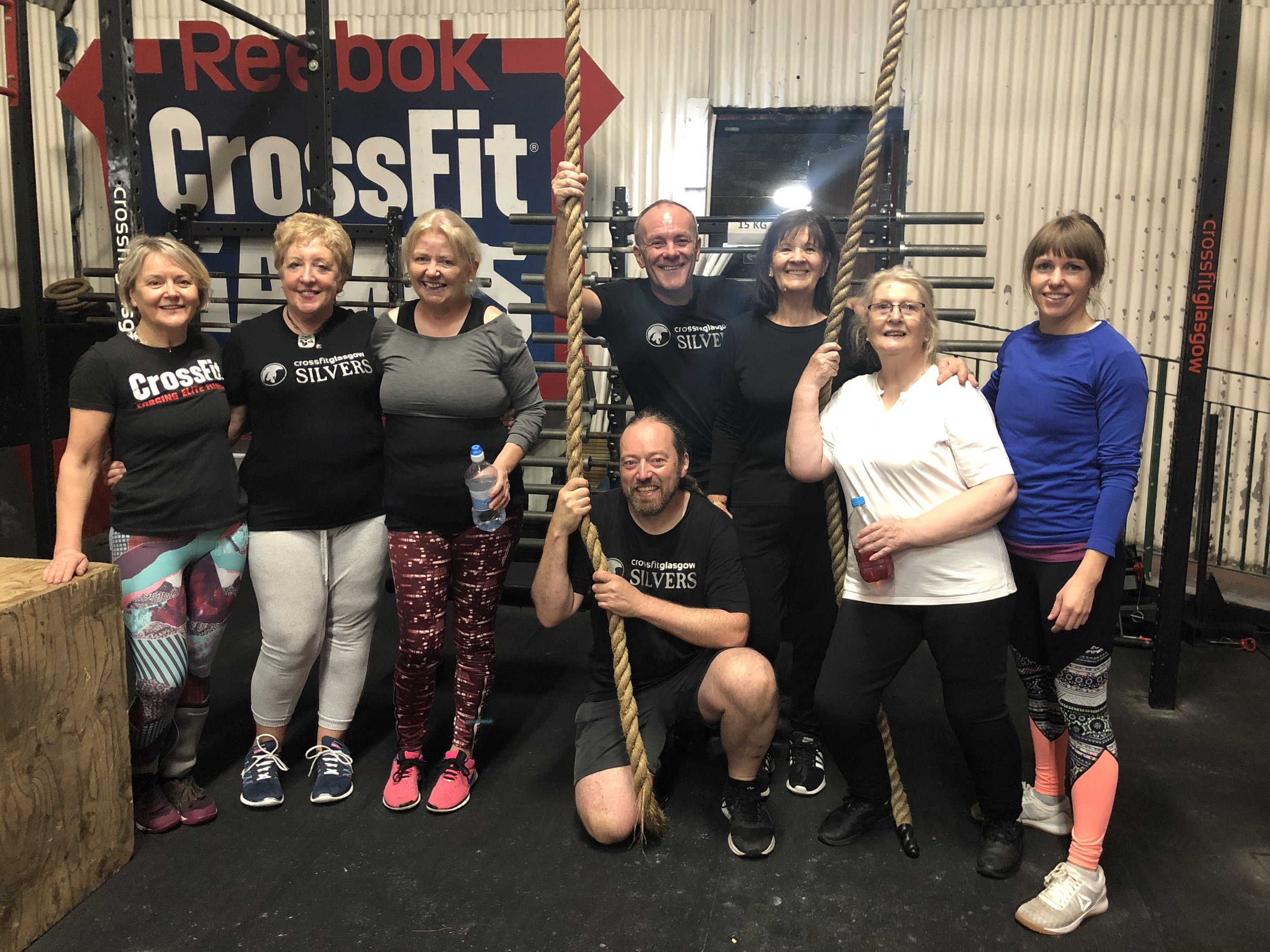Stiff achy hips? Tightness or weakness and what can you do about it?
Complete hip mobility routine to increase range of motion, reduce pain and improve function. Explore your own limitations and work to improve them with daily practice of this routine. Rid yourself of stiff achy hips and restore strong, healthy movement while improving athletic ability.
Why are my hips sore?
Deep Squat
Chances are if you’re reading this you have at least one hip and at some point it has given you trouble. Hip pain or stiffness has likely gotten in the way of your daily activities or restricted your ability to exercise on more than a few occasions. Our hips are at the centre of our body’s movement, so if they are functioning poorly then our ability to move freely and unrestricted will be compromised. Poor hip function can cause local issues around the hip but often contributes to pain and dysfunction in other areas like the lower back and knees.
The primary reason for developing hip pain for most people is a lack of movement and excessive sedentary behaviour, an all too common theme in our modern lives. You may workout regularly but chances are you still accumulate a lot of static postures through work or leisure and it’s unlikely that your exercise habits routinely explore and work the hip joints and muscles to anywhere near their full range or capacity. Though most hip pain is not serious and can be helped with the right exercise, we recommend consulting a health professional if you are worried or have persistent symptoms.
Modified Pigeon with Active Hip Internal Rotation
Am I Stiff or Weak?
Most likely it’s a combination of both. There is a lot of confusion out there around the terminology of flexibility, mobility and strength. Essentially flexibility can be considered passive and is about the soft tissues (muscles, tendons and ligaments) ability to temporarily elongate to allow movement through a range while mobility centers around our ability to move through a range of motion with control before becoming restricted. Mobility requires strength to control your flexibility.
Take for example someone who can squat 200 kilos to a parallel depth. This would obviously be considered strong in that range. However if the same individual cannot perform a body-weight squat below parallel depth without falling over or requiring support then we could say they have poor squat mobility. Passively if they can still achieve a deep squat position using some support we can say that they have reasonable flexibility in their soft tissues to allow this. Ideally this individual will work to improve their mobility so that they have better strength to control a greater degree of flexibility i.e they can drop comfortably and controlled into a deep body weight squat without assistance.
Should I Stretch or Strengthen
Again for most people the answer here is both but the key is identifying exercises that allow you to improve on both simultaneously whilst also offering functional value. Being inflexible is not great as your natural joint range of motion may be restricted and eventually painful. Inflexibility can lead to struggles with basic everyday activities like bending to pick something up or getting in and out of bed or your car. If you are weak then as discussed before you will not be able to control your flexibility or movement again making you more vulnerable to injury and pain.
This is where we need to be smart and specific in identifying our own needs and training with functional goals and targets in mind. You may have great flexibility and touching your toes is a breeze but when asked to do a basic lunge you lack the strength, balance and co-ordination. Conversely as with our example above you may have great strength for lifting weight but only in a limited range and the idea of touching your toes or sitting in a deep squat seems ridiculous. There is no single one recipe to fix all here but in essence mobility training will work both our strength and flexibility needs, we just need to identify the right exercises.
Try this mobility routine we have created to help identify your own personal problem areas. What to you find most difficult and are you struggling due to tightness, weakness or a combination of both?
Up for a challenge? Try this routine a few times and note the 3 exercises or positions which you find most restricted or difficult to perform. Now practice them consistently at lease 3 times per week for the next 4-6 weeks and see what changes and improvements you can achieve
At the bottom of this blog you can see each of the individual exercises that make up our hip mobility routine. Click the link below to download your FREE PDF copy of these exercises including some key tips .
Challenge to Change
For the vast majority of people our lives and even our exercise or training keep us moving in basic linear patterns (up and down). We don’t often (if ever) challenge our hips with lateral or rotational exercises and most people end up weak and unstable in these positions compromising their hip health and function. That’s why we designed these routines to explore and challenge these less common positions.
This next video demonstrates 3 more advanced hip mobility exercises that you can try. Please only attempt what you feel able and do not work into pain or through injury. Try the exercises in the video below and see how you feel. Chances are you will find this very tough but they are great exercises to improve overall hip mobility and function so if you feel able add them to your regular routine and with consistent practice you should see real improvements.
Exercise 1
Seated hip Internal / External Rotation
Begin in sitting leaning back on straight arms, knees and hips bent and relaxed shoulder width apart with feet flat on floor.
Gently and with control lower both legs to one side trying to touch the outside of one knee and inside of the other knee to the floor. Don’t worry if this range is too much, just work as far as you feel is challenging but comfortable. Return to start and repeat to opposite side.
Perform this movement for 60 seconds
1- Floor Sitting, Lean back on hands, high chest
2- Slowly Rotate Both Legs to one side
Exercise 2
Deep Squat Hip Internal / External Rotation (Advanced Option)
Begin in a deep squat. Ensure heels remain in contact with the floor
Slowly rotate one knee across mid-line aiming to touch knee to floor in front of opposite foot which should remain flat with heel on floor. Allow moving leg to rotate up onto toes. Static leg should remain open and avoid any inward collapse of knee/hip position.
Return leg to starting deep squat position and repeat with opposite leg.
Repeat with alternate legs for 60 seconds
1- Deep Squat, Heels on floor
2- Deep Squat- Active Hip Rotations
Exercise 3
Modified Pigeon
Begin in 90/90 hip and knee position. Gently rotate and square hips up facing forwards
Gently lean chest forwards through your hips and rotate slowly leaning over the forward knee
Option to gently contract front leg pushing knee into floor, hold 5-10 seconds and release. Repeat 5-10 times.
Work into and explore stretch for at least 60 seconds
1- Modified Pigeon 90/90 Sitting
2- Modified Pigeon- forward lean & rotate over front knee
Exercise 4
Modified Pigeon Active Hip Internal Rotation Lift
Begin in the modified pigeon 90/90 sit with slight forward lean supporting weight on hands
Gently lift back foot off the floor. Squeeze and hold for 5 seconds. Repeat for at least 5 contractions
You will repeat this exercise for the opposite side once you’ve completed the routine on one side
1- Modified Pigeon Forward Lean on Hands
2- Modified Pigeon Active Hip Internal Rotation
Exercise 5
Modified Pigeon Hip Active External Rotation
Begin in the modified pigeon 90/90 sit with torso rotated facing forward leaning weight back with hands behind you
Gently lift the knee (with inside touching floor) & rotate outward through hip. Squeeze and hold for 5 seconds. Repeat for at least 5 contractions. Ensure opposite leg remains still with outside knee resting on floor
You will repeat this exercise for the opposite side once you’ve completed the routine on one side
1- Modified Pigeon Chest Open
2- Modified Pigeon Active Hip External Rotation
Exercise 6
90/90 Sitting Lift to High Kneeling
Begin in approximate 90/90 sitting as shown, use hands to maintain balance without leaning on floor
Gently lift through the hips into controlled high kneel. Squeeze the buttocks and hold for a few seconds. Return to start position and repeat 30-60 seconds
Switch legs so back leg begins as forward leg and vice versa. Repeat active sitting movement 30-60 seconds.
1 - 90/90 Sitting on floor (no hand support)
2 - High Kneeling
Exercise 7
Frogger
Begin in all 4s, forearms on floor. Walk knees open keeping insteps of feet and inside shins rotated inward in contact with floor
Gently rock back through hips/pelvis as if taking bum closer to heels, squeeze knees into the floor and hold/release for 5-10 second repetitions.
Gently work into and explore stretch for at least 60 seconds
1 - Frogger Start Position
2 - Frogger Rock Back Position
Exercise 8
Deep Lunge Hip Opener with Arm Rotations
Begin in lunge position, extend out back leg as far as is comfortable. Lean forward and try to come to rest on forearms. Actively drive open front knee/hip rotating out onto outside border of foot.
Take inside arm next to front leg and rotate upwards to ceiling with a straight arm. Stretch open through shoulder, chest and spine. Hold for 5 seconds at top position, return to start driving elbow back to the floor and repeat for 10 repetitions.
Switch legs front to back and vice versa. Repeat process.
1 - Deep Lunge, Forearms to floor, drive front knee open
2 - Deep Lunge Arm Rotations
Thank You
Thanks for taking the time to read this guide, we hope you find it useful. Please share with anyone else who might benefit and if you have any questions comment and let us know. Don’t forget to download your free hip mobility cheatsheet. Good luck and enjoy your improved hip health.
Deep Lunge with Arm Rotation
Tight shoulders? This routine will fix you up
5 step shoulder stretch routine to relieve stiffness and tension. Discover a new range of motion and rid yourself of nagging tightness in your shoulders and upper back
Why are my shoulders so tight?
Familiar Hunchback Posture?
Shoulders are a big sticking point for many of us. We constantly assess and help people with long histories of stiff, tight, achy shoulders and upper backs. More often than not there is no significant injury history but very commonly there is a base of sedentary behaviour, such as office work and driving, and a significant lack of any structured stretching or mobility exercise. Welcome to our modern lives!
Most shoulder pain can be fixed without the need for invasive surgery but it can take time to undo a lifetime of poor habits which have lead to soft tissue adaptations with weakness in some areas and tightness or stiffness in others.
1/2 Crucifix Chest Stretch
Shoulders are very mobile and we put them through a lot over our lifetime with an expectation they will be fine with no real consideration given to tuning or maintenance work. Tightness and pain can easily creep in and often presents initially as discomfort reaching overhead, pain opening a door, or a struggle to weight bear through our arms. This can develop to more constant nagging pain and stiffness and a reduced ability to perform daily tasks or enjoy physical exercise or activities.
Many people just put up with having a dodgy shoulder and accept it as a new norm but with the right guidance and exercises most situations can be at least significantly improved if not completely fixed. Like everything in life though you won’t get something for nothing and commitment to changes in habit and daily routines will be required. A balance of stretching and strengthening exercises is normally key and we have provided a great starting point here with our 5 point stretching routine.
Let’s get started!
We must bear in mind that every body is different as is each individuals unique history and circumstances so please use this routine as a guide to start improving your shoulder health and flexibility but do so carefully. Start slowly and gently and never push in to pain. Work to better your own range of motion but do not compare yourself to the video or anyone else. Practice daily and be patient but also persistent. If you can only do part of the movement or a modified / reduced range that is fine, just do what you can. Of course as with all advice please consult with a health professional if you have significant pain or loss of normal function.
Mobility Flow Video:
Exercise 1
Shoulder rolls / Scapular circles
Begin in all 4s position.Hands fixed under shoulders shrug shoulders to ears thenslide back and down and release. Then spread shoulder blades apart stretching across upper back, relax and allow shoulders and back to hollow.
Try to perform this as a slow circular rolling motion working in various directions
Perform this movement for 60 seconds
1- Shoulder shrug
2- Shoulder spread
Exercise 2
Elevated Arms to Partial Childs Pose / Prayer Stretch
Begin in all 4s position with arms straight out elevated on flat surface. Gently sit bottom back towards heels and let weight drop down between shoulder blades and through upper back
When in position try gently squeezing shoulders together and releasing and light pressing through the hands with slight twist/rotation movement
Try breathing in deeply and coming out of the stretch slightly then breathing out slowly and dropping deeper into stretch
Explore the stretch position with subtle movements and breathing for 60 seconds +
1- 4 point kneel arms elevated
2- Sit weight back and down between shoulders
Prayer Stretch (Option 2)
Perform stretch as above but move to have elbows resting on flat surface with arms positioned in ‘Prayer’ posture
Sit weight gently back and down relaxing between shoulder blades and across upper back. Try to let head bypass the bench (surface)
Try breathing in deeply and coming out of the stretch slightly then breathing out slowly and dropping deeper into stretch
Explore the stretch position with subtle movements and breathing for 60 seconds +
Prayer Stretch Start Posture
Prayer Stretch - Sit back position
Exercise 3
Shoulder Dislocates (Stick or Band)
Begin in high kneeling or standing - Holding a stick or band keep arms straight and core tight, slowly bring arms straight overhead and around down towards lower back. Allow shoulder blades to gently shrug then rotate and slide down as you circle arms overhead
Return to start point slowly ensuring not to over-arch through lower back
Repeat for 10-15 repetitions
1- Shoulder Dislocates - Stick (Overhead)
2- Shoulder Dislocates Stick (behind back)
Exercise 4
‘L’ Position Prone Shoulder Stretch
Begin lying on your front. Gently reach with shoulder to be stretched under and across your body at shoulder height with palm facing up. Allow other arm to stretch straight overhead forming an ‘L’ shape with your arms
Gently rotate into the stretch as if trying to square up shoulder blades increasing the pull/stretch felt in back of the shoulder reaching across body. Hold and release this motion for several repetitions
Work in this position for 60 seconds + on each arm
1- ‘L’ Position Shoulder Stretch Part 1
2- ‘L’ Position Shoulder Stretch Part 2
Exercise 5
1/2 Crucifix Chest Stretch
Start face down with side to be stretched arm extended fully out at shoulder height palm down. Opposite arm is bent at 90 degrees at elbow hand at shoulder height ready to push into stretch
Gently push with bent arm while rolling weight of legs over to create a strong opening stretch of the chest of the straight arm
Gently push in and out of the stretch holding for a few seconds then releasing and repeat
Explore this stretch for 60 seconds + on each arm
1- 1/2 Cucifix Start Posture
2- 1/2 Crucifix Chest Opening
Thanks for taking the time to read this guide, we hope you find it useful. Please share with anyone else who might benefit and if you have any questions comment and let us know. Don’t forget to download your free mobility cheatsheet. Good luck and enjoy your improved shoulder health.
‘L’ Position Prone Posterior Shoulder Stretch
Antenatal Exercise; What the Guidelines & Evidence Say by Raz Leonard
For over a year I’ve been enjoying teaching two Antenatal Pilates classes at Physio Effect and, from the start, the classes have been fully subscribed. Many of the women tend to come from Health Care professions themselves and know the benefits of exercising during pregnancy. I am always surprised at how many old wives’ tales are out there and how many women remain inactive or stop physical activity during this crucial time. I plan to summarise some recent evidence-based reviews on the topic so that the facts can be divided from fiction.
For over a year I’ve been enjoying teaching two Antenatal Pilates classes at Physio Effect and, from the start, the classes have been fully subscribed. Many of the women tend to come from Health Care professions themselves and know the benefits of exercising during pregnancy. I am always surprised at how many old wives’ tales are out there and how many women remain inactive or stop physical activity during this crucial time. I plan to summarise some recent evidence-based reviews on the topic so that the facts can be divided from fiction.
The evidence shows that exercising during pregnancy is completely safe and in fact improves the chance of a healthy baby and mum. There are some exceptions to each rule which is why it is important to check with your midwife/ health care practitioner first and exercise with someone trained to adapt a programme to you. More detail of this evidence is presented below.
The first publication I wanted to share is by the UK Chief Medical Officers (2019) and based on best available evidence. The infographic summarises the key points however you can access the full report via this link.
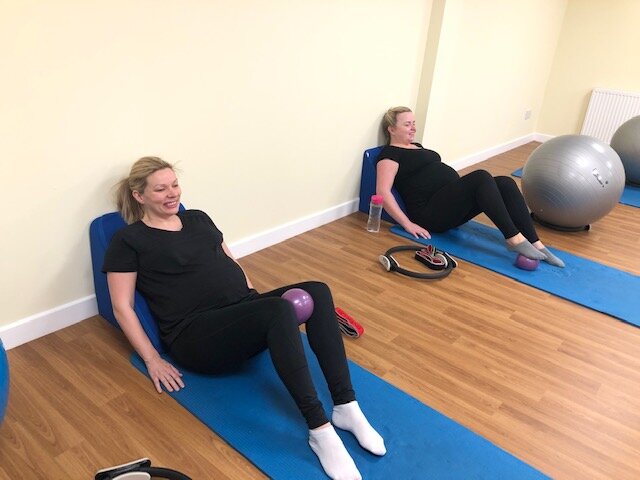
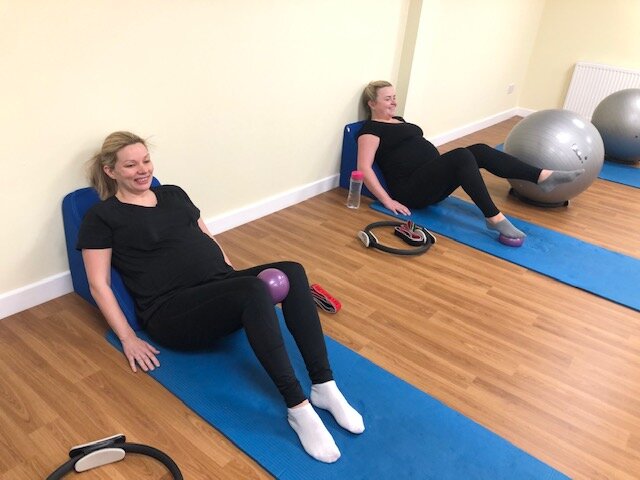
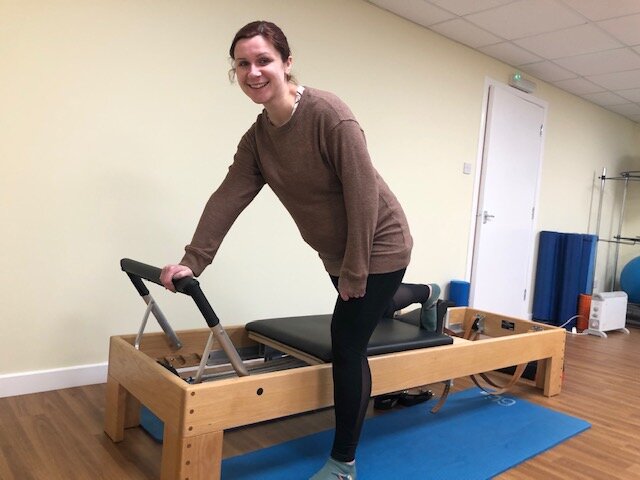
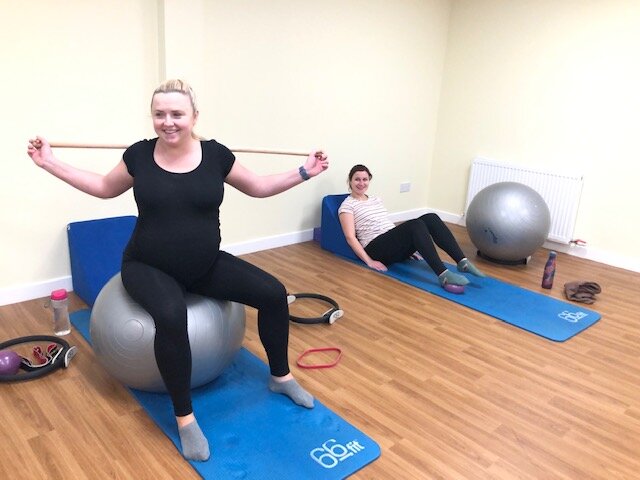
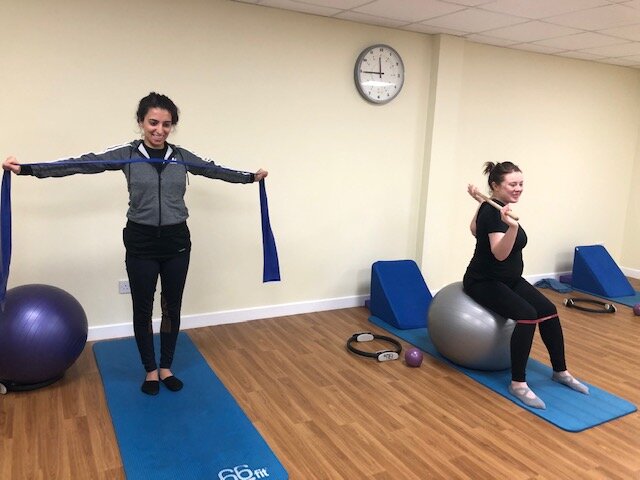
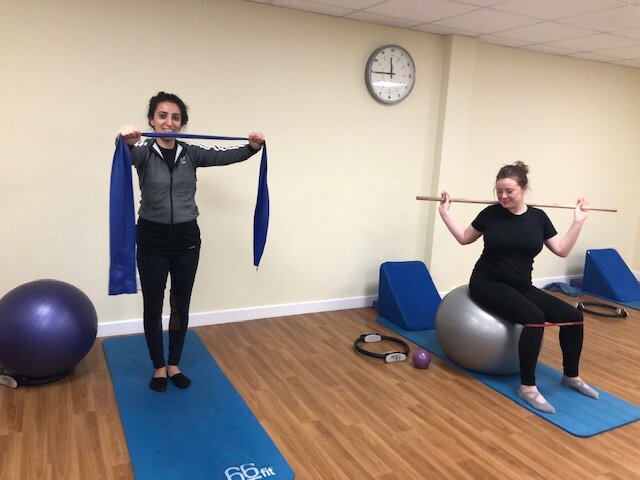
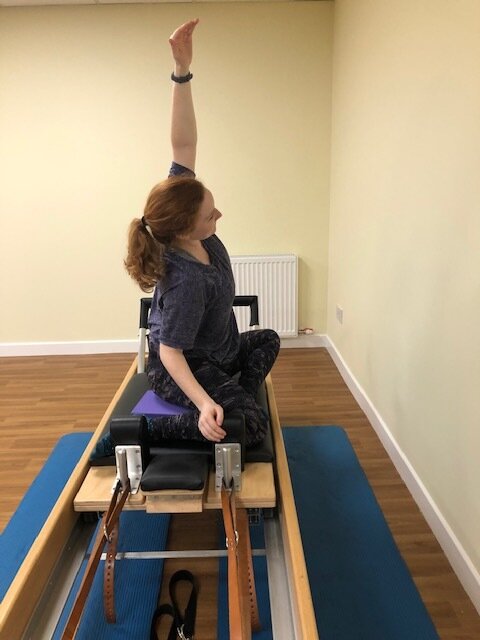
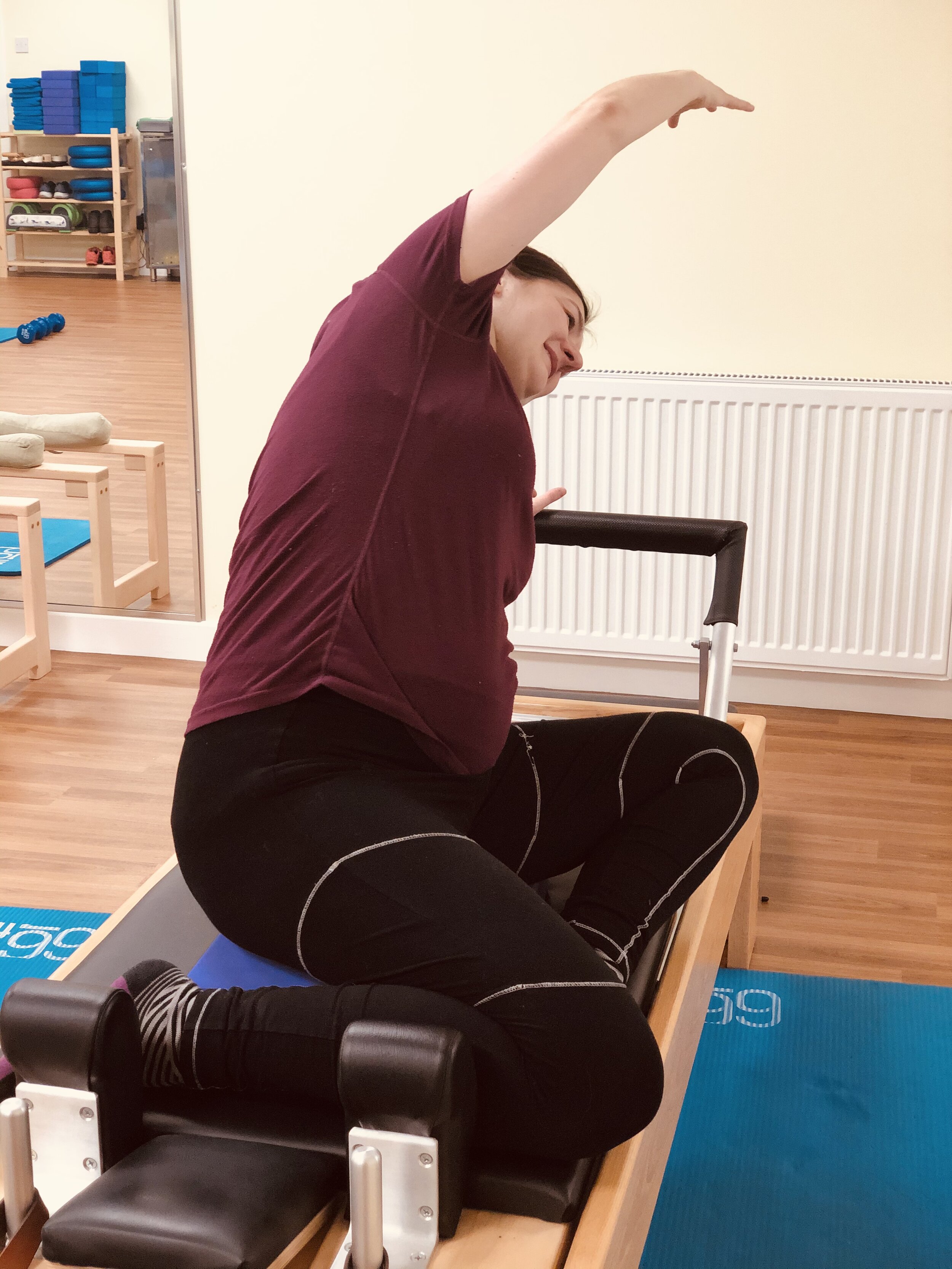
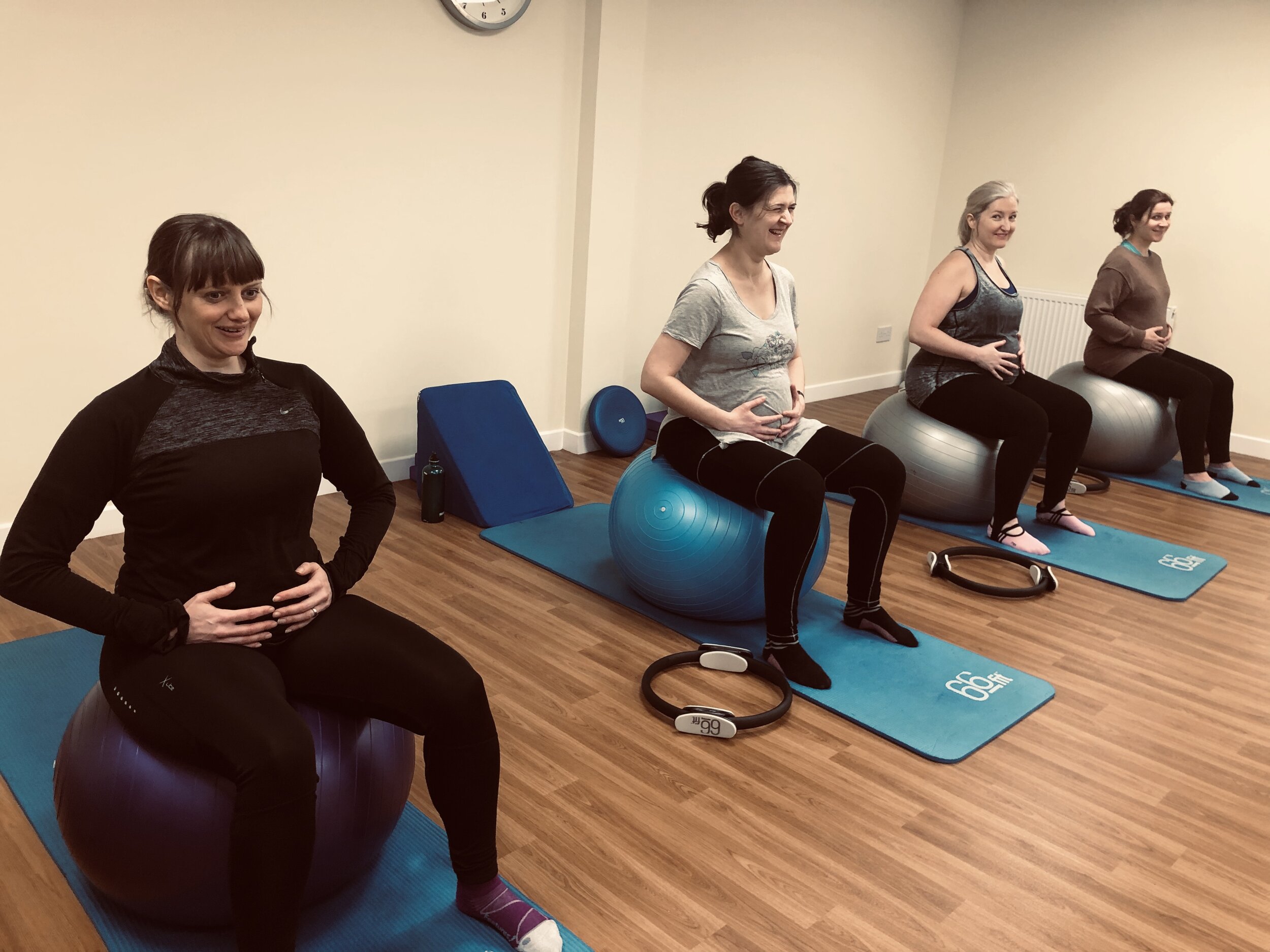
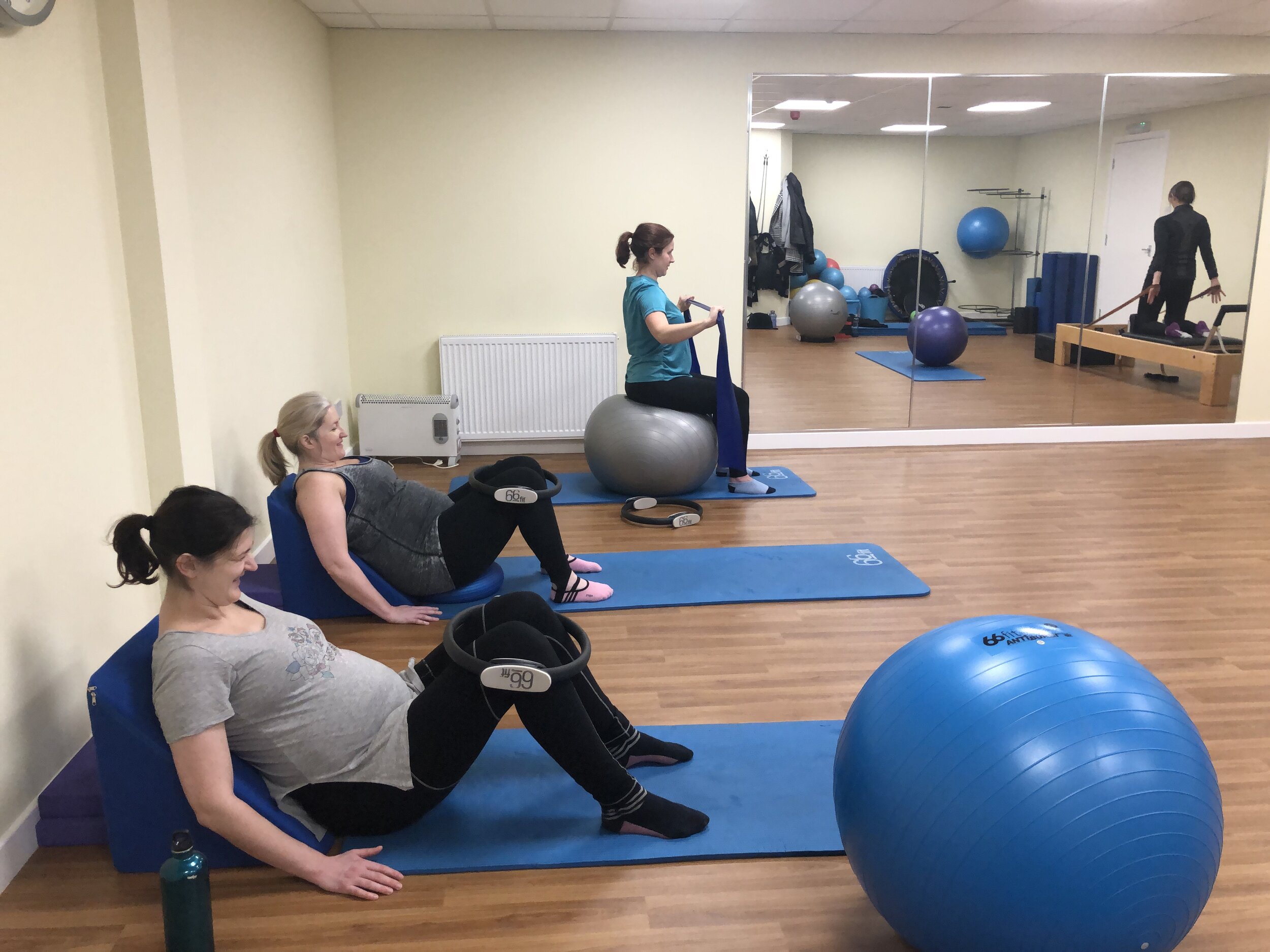
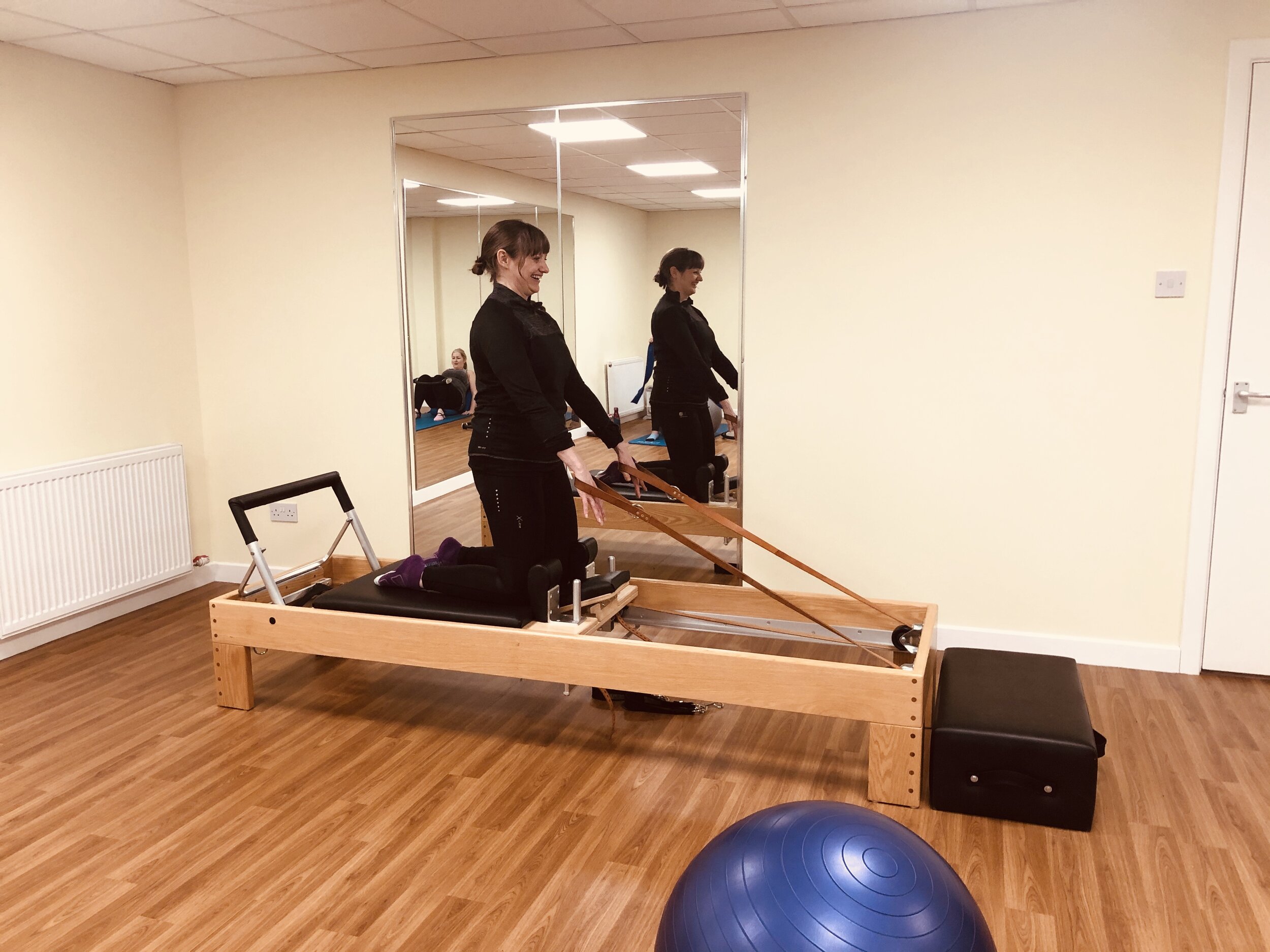
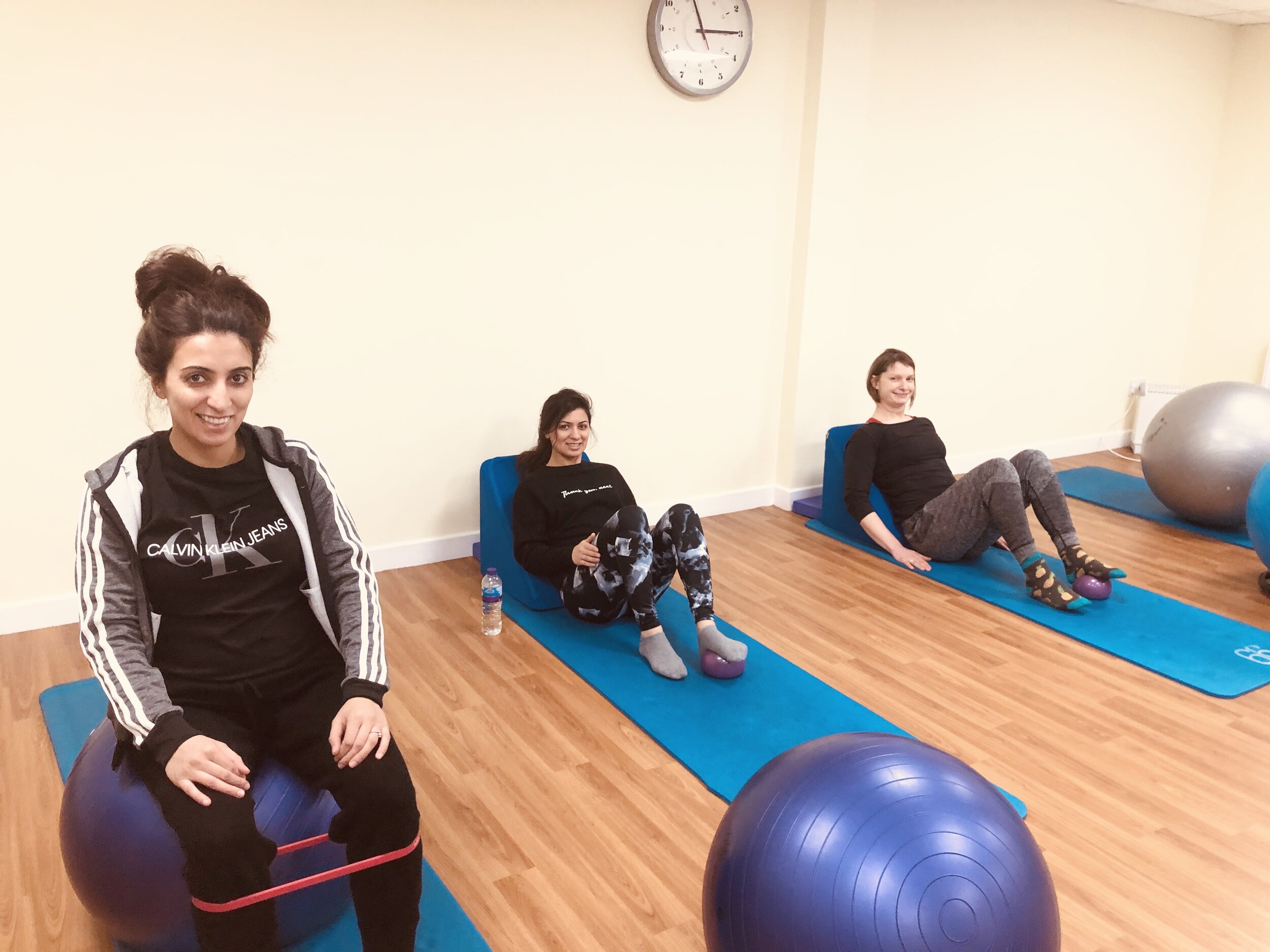
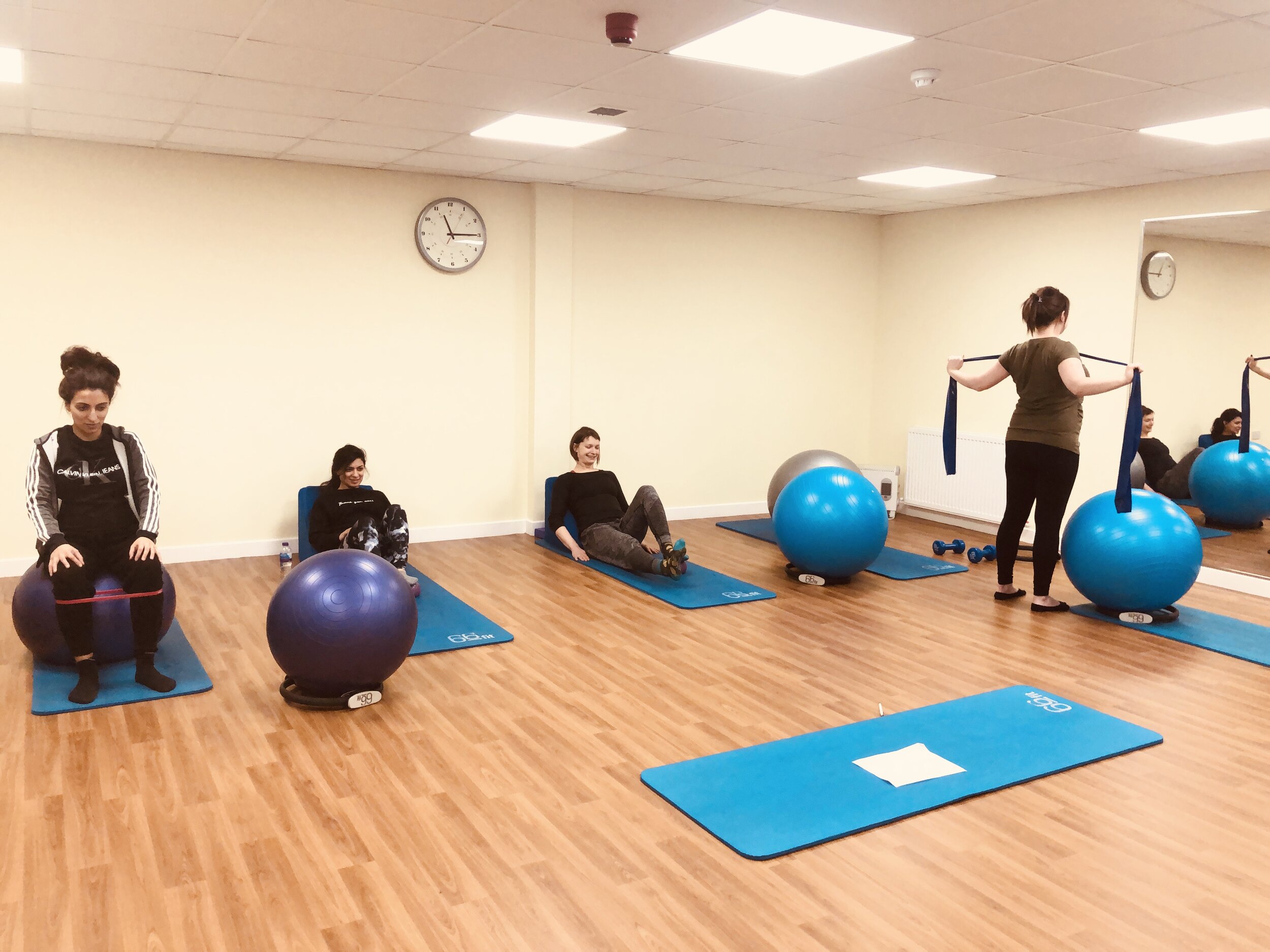
References;
Mottola MF, Davenport MH, Ruchat S, et al
2019 Canadian guideline for physical activity throughout pregnancy
British Journal of Sports Medicine 2018;52:1339-1346
Smith R, Reid H, Matthews A CMO Physical Activity Expert Committee for Physical Activity and Pregnancy, et al
Infographic: physical activity for pregnant women
British Journal of Sports Medicine 2018;52:532-533.
The report states that exercise during pregnancy has been shown to reduce high blood pressure and improve cardiovascular fitness. In addition, it can lower the risk of pregnancy related diabetes and gestational weight gain.
My favourite most recent ante natal exercise paper is “2019 Canadian guideline for physical activity throughout pregnancy”. A group of experts in the field have summarised their recommendations and highlighted the evidence they have to back these up as well as writing a detailed list of who should seek further advice before beginning an exercise program. See this link to read the paper in full.
Below is a summary of their main findings.
‘Strong recommendation’ and have ‘moderate’ quality evidence to support this. (The reason they have said the evidence is ‘moderate’ is because it can be challenging to get enough high quality studies that have enough people in them and are designed robustly to back up their statements.)
All women with normal pregnancies should be active throughout.
At least 150 minutes of moderate level physical activity should be accumulated to achieve these health benefits and reduce pregnancy complications
Accumulating this activity over a minimum of 3 days a week is recommended, however daily activity is encouraged.
Higher evidence and so can be seen as an agreed fact (This is a ‘strong recommendation’ with ‘high’ quality evidence, which is great news for exercising mums to be!):
The types of exercise recommended includes a variety of aerobic and resistance training. Stretching and yoga can also be beneficial.
Common practice however seen as ‘weak recommendations’ as have ‘low-quality’ evidence to back them up:
Women should be taught the correct technique for pelvic floor muscle exercises and carry these out daily to reduce the chance of continence issues.
Women who experience nausea, light-headedness or feel unwell when exercising flat on their back, should modify their exercises to avoid this position.
Antenatal Classes at Physio Effect
Our antenatal class offered at Physio Effect incorporates the above guidelines by contributing to the recommended exercise volume & frequency. Stretching, resistance and pelvic floor exercises are given under guidance by a trained physiotherapist. In addition, exercise position is modified with use of equipment such as a foam wedge and the Pilates reformer. It’s also a great way to meet other mums to be. Please click here for details on booking the class.
Note that we also offer a post-natal program which you can bring your baby along to. This is designed to help restore your body and gently bring to back to the correct level of exercise. Find out more about our CryBaby Pilates classes here.
Our antenatal Pilates class is a bespoke class, individually designed for each person who attends. Clients will be assessed by a physiotherapist who will design and teach the class. For example, the program can help with any musculoskeletal injuries and pregnancy related issues such as pelvic girdle pain. In addition, stage of pregnancy, pelvic floor exercises and safe positions for exercise will be incorporated into this programme.
Cape Wrath Training Blog
At the end of May 2020, I intend to take part in the Cape Wrath Ultra and have my journey on the race documented in the Journal by 'Proper Adventure’. The Cape Wrath Ultra is an eight day event that will take competitors and ‘journeymen’ like myself through 400km of epic trails, mountains and world class coastal scenery. It starts at the highland town of Fort William and finishes at the most North-Westerly point of the country at the Cape Wrath Lighthouse.
Who am I?
My name is Jonny Kilpatrick and I’m a 36 year old ultra runner and sports physiotherapist based in Glasgow, Scotland.
What am I doing?
At the end of May 2020, I intend to take part in the Cape Wrath Ultra and have my journey on the race documented in the Journal by 'Proper Adventure’. The Cape Wrath Ultra is an eight day event that will take competitors and ‘journeymen’ like myself through 400km of epic trails, mountains and world class coastal scenery. It starts at the highland town of Fort William and finishes at the most North-Westerly point of the country at the Cape Wrath Lighthouse.
The Cape Wrath Ultra is now in its 3rd Edition having been run bi-annually in 2015 and 2017. It is organised by the excellent team at Ourea Events who also organise other epic events in the UK such as the Dragons Back, Lakeland 3-day and the Glencoe Skyline. Previous Cape Wrath Ultras have been truly life changing experiences for those who have participated. Even people who’ve spent considerable time in the beautiful Scottish outdoors are gobsmacked at the rugged beauty and challenge of this route.
The route starts by taking a ferry across Loch Linnhe before running west to the Glenfinnian viaduct. This is where we will get our first experience of the camp that will be set up for us each night to eat, sleep and socialise. From day 2, we will be forging a route North taking in beautiful scenery in remote areas such as: Knoydart, Wester Ross, Torridon and Assynt. The daily distances over the eight days will certainly be a challenge and are; Day 1: 37km, Day 2: 57km, Day 3: 68km, Day 4: 35km, Day 5: 44km, Day 6: 72km, Day 7: 61km and Day 8: 26km. This is before taking into account the considerable ascent and descent while pushing on through the ever changing conditions underfoot including forestry path, single track, mountain paths and then all of the trackless bogs and numerous river crossings. To really make this the complete experience we’ll also be expected to navigate the unmarked route making sure to make various check points before cut off times. Check out the Cape Wrath Ultra Website for full details.
Why will I be doing this?
In a nutshell, I absolutely love the North West of Scotland. This route can get so remote that it will take us through areas that I’d never get the chance to visit easily with my busy life juggling a family and my business. It merges my two passions of trail running and hill walking. Having successfully competed in several challenging distance events including; completing the West Highland Way Race in 2018 and the Lakeland 100 in 2019, I’ve decided to try something totally different in the format of a multi-day event. The idea of covering these large distances each day for 8 consecutive days throws up so many unknowns and challenges for me physically, mentally and even tactically in terms of getting myself through this in one piece - while at the same time trying to enjoy the experience, which is my main priority. I love the idea that all the participants will be in this together and we will no doubt make new friends and share experiences that will be unique to those of us running and camping each day. I’ve always enjoyed the camaraderie with other participants that you experience on the longer Ultra Marathons and I think that camping, eating and racing together for over a week will be just brilliant. I like the minimalist nature of this event and that we will all have to become very flexible, adaptable and accommodating to overcome such a challenge. This will no doubt enrich all of our lives to some extent after it. I don’t take being away from my wife and daughter for over a week lightly, but I know what I will gain from this experience will make me a better person and in turn, a better husband and father.
How do I plan on being ready?
The whole challenge seems very daunting this far out from it and I’ve been guilty of overthinking it at times. I think though that I made a real breakthrough with my mindset by travelling up North to recce section 4 in December 2019. The weather was atrocious, the terrain was hilly and challenging and the description of a large trackless section seemed like a real understatement while I was on it. In nearly 6 hours I only saw four deer and zero humans. With this in mind, I absolutely loved it and the penny really dropped for me that this ‘race’ will be much more about taking things slow and steady, looking after myself physically and mentally and just trying to enjoy being in such remote and wild places as the miles tick along. Realising this has lifted a huge internal pressure from me and I’m now really looking forward to it.
Obviously I will need to be physically in great shape to be able to complete this event and that side of my conditioning will be guided by my running coach Neil MacNicol of RunRecover who has done a fantastic job with my training in the past. I’m also fortunate that I live near the Kilpatrick Hills which will allow me to train a few times a week on a huge variety of classically challenging Scottish Terrain that I’ve found will mimic that of Cape Wrath. Ideally I plan to recce at least another 3 sections having already completed section 4 in December. If I can prevent excessive fatigue with my training and make sure I don’t develop any new injuries as well as continue to get rid of a groin niggle I’ve had for a few months I think I’ll be ready to go by the time the start line approaches. All that remains is to keep building my conditioning along with getting used to moving over a wide variety of terrain using the equipment and skills I’ve developed for this great challenge.
I plan to write another update in April on how my training progress and share my experiences and thoughts regarding the event.
Guest Blog - Reactive Training Gym
This week we have a guest blog from Robert Clarkson who runs Reactive Training Gym in Glasgow. Robert discusses the complexities of training men and women at different stages of their fitness journeys. He also outlines why he often recommends physiotherapy for prevention as much as a cure.
Train Safe
This week we have a guest blog from Robert Clarkson who runs Reactive Training Gym in Glasgow. Robert discusses the complexities of training men and women at different stages of their fitness journeys. He also outlines why he often recommends physiotherapy for prevention as much as a cure.
Meeting clients in the middle
Reactive is a private gym in the east end of Glasgow. We offer group coaching to men and women that is mainly strength training. Clients get a level of personal coaching that allows them to take on the ‘big weights’ area with confidence; something they might have avoided in bigger, more commercial gyms.
The challenge for me as a coach is to make sure the sessions cater to everyone's level in this setting. By testing clients every six weeks, I gauge what they can lift, swing, push, press and pull. This allows me to split them into smaller groups so that they can work safely for another six weeks.
All ages and abilities
One of the things I am most proud of is the range of ages and abilities Reactive caters to. Again, this isn't without its challenges. In coaching men and women from 20-75 years of age (yes, 75!) we have to be mindful of not only their individual goals but their general health and injury history.
A young client that has never set foot in a gym in their life might be more vulnerable than someone who is older but has trained on and off over the years. Because someone has a niggling hip injury doesn't mean they are less able than the client that is younger but sedentary until they join. It's a case of constant observation and meeting people in the middle. Pushing them, but not to the point where you risk setting them back through injury.
What clients do outside the gym matters
What clients do outside the gym counts. Reactive members receive support outside the gym via our app. It includes nutritional advice, at home exercise and they can chat to coaching staff via the app if they have questions about their training. There's also a closed Facebook group, I regularly hold live Q&A's via Facebook Live too and members themselves provide peer to peer support. It is a thriving community. But training can come undone outside the gym.
Encouraging clients to look after themselves outside the sessions isn't easy. They all have busy lives. They are often used to putting themselves last. It can be why they end up having to make a change and why their health and well-being has suffered. And after they've come to three or four sessions a week, there's not much time for anything else! Physiotherapy is often something clients would only consider if they were injured.
If a client has anxiety about injuring themselves or if they need a helping hand with their mobility, I recommend physiotherapy.
It's my job to address improper technique. As a gym owner, I also invest in good quality equipment and upgrade it regularly. I emphasise the importance of rest days and there are often two coaches at each session, both with the client's safety in mind. But I believe in clients helping themselves too. I tell them that by seeing a reputable Physiotherapist, they can develop their own injury prevention strategy. This will help them to gain confidence when it comes to pushing themselves and moving forward with their training.
Prevention is better than cure
The main point I want clients to take away is that prevention is better than cure. Taking all possible steps to prevent injury will ensure clients are in the best position to maintain consistency needed to be successful in their training.
To learn more about what small group coaching and strength training, see: reactivetraining.co.uk
Run report - Trail With Us - Physio Effect Trail Running/ Walking Group - Sunday 15th September
This month we planned a trail session combining the well-known route up to the Whangie from the Queens View Car Park (10 minutes past Bearsden) with a short section of the John Muir Way and a loop of the Burncrooks Reservoir.
This month we planned a trail session combining the well-known route up to the Whangie from the Queens View Car Park (10 minutes past Bearsden) with a short section of the John Muir Way and a loop of the Burncrooks Reservoir. We had another decent turnout of new and familiar faces and headed up the hill at about 0910 after meeting at 0900. Although a little cold in the wind initially, we soon warmed up by the hill run and treated to nice views back East of the Earl’s Seat and Dumgoyne in the Campsies as well as North providing views of Loch Lomond.
It was muddy enough on the way up the hill but everyone seemed to handle that well and made steady pace with running and power hiking. We went through the Whangie which is always a nice photo opportunity and hard to believe this cracking rock formation is just on our door steps. Another short climb followed and we took an obligatory group picture at the trig point before pushing on over the boggy top down through the bracken-lined single track to reach the John Muir Way. Everyone seemed to enjoy the muddy single track and big Euan even treated us to some fairly special gymnastic type twists and turns in the slope when his road shoes took him for a ride.
Once back on the hardpacked trail of the John Muir Way, Euan’s Adidas Boost road shoes came into their own and we didn’t see the big man for dust; well, I didn’t anyway. The loop around the Burncrooks Reservoir is just such a great bit of trail with it’s rollercoaster of a path and feeling of complete isolation wedged being between the Kilpatrick Hills and the Campsies. It was awesome seeing the group working their way around it as we were the only ones on the trail. On finishing the loop we were back on the John Muir Way to retrace our steps back up to the Whangie. Well, everyone except Danny (the other owner of Physio Effect) who left us before the muddy climb back up and continued along the John Muir Way round the back of Eden Mill and joined the West Highland Way where he was able to run back to his house in Milngavie. This allowed him to complete a long run of 18 miles for his marathon next month. I just think it’s brilliant how easy it is to link Scotland together with trails and paths.
After a leg sapping slog back up the single track to the trig point, we were able to get another run through the Whangie and then a sustained 15 minute descent back to the car park. All in all we were done and dusted in 1.5 hours with 1300ft of ascent and descent giving everyone a decent workout and a new route to go running on. I’ll look forward to planning up next month’s run and hope to see a good turn out again.
Check yourself before you wreck yourself - Injury prevention for knees and hips
Injury prevention is obviously preferable to injury cure. It is common for people to adapt their work desks and equipment to improve their posture as a form of injury prevention. It is also common for gym-goers and athletes to practice good form when using weights as a means of injury prevention. What is uncommon is paying attention to and correcting our most frequently used movements that arguably have some of the more devastating effects on joints if performed badly over a lifetime.
By Jonny Kilpatrick of Physio Effect
Injury prevention is obviously preferable to injury cure. It is common for people to adapt their work desks and equipment to improve their posture as a form of injury prevention. It is also common for gym-goers and athletes to practice good form when using weights as a means of injury prevention. What is uncommon is paying attention to and correcting our most frequently used movements that arguably have some of the more devastating effects on joints if performed badly over a lifetime.
With almost all leg injuries, as physiotherapists, we will assess basic movement patterns. Two of these are frequently found to be faulty and likely to either have contributed to an injury or are likely to hinder a speedy recovery. These movements are:
Standing to Sitting / Sitting to Standing
Step Up / Step Down
We perform each of these movements numerous times each day, hundreds of times each week and thousands of times each year. Little attention is paid to our “form” on these movements and commonly we will see people putting their knee joint under uneven stretching and compressional forces that over time will strain on ligaments and degenerate joint surfaces. Almost always the fault seen in both movements involves the person’s knees or knee drifting inwards once the hips are lowered. This puts the knee into a position known as genu valgum, which is associated with the following conditions:
Patello-femoral (knee cap) joint osteoarthritis
Inner knee pain from overstretching the medial collateral ligament
Outer knee pain from increased tension on the Iliotibial Band and compressional wear and tear to the lateral meniscus and joint surfaces
Osteoarthritis of the knee joint
Increased risk of knee trauma in sports such as ACL rupture
Poor movement pattern with Sit to Stand and Step-Ups fig.1
Poor movement pattern with Sit to Stand and Step-Ups fig.2
The reason this knee position and movement pattern has such a destructive effect on the knee is to do with the way our knee has been designed to move. There are various interlocking grooves and troughs within our knee that require a certain movement pattern to align correctly and provide stability. This movement is called the screw home movement and it involves the femur (thigh bone) rotating approximately 10 degrees inwards on the tibia (shin bone) to achieve a fully straightened position. Conversely when the knee is bending the femur should rotate outwards on the tibia to keep everything aligned correctly and avoid excessive forces to one area. This in practice means that your knees should stay out over your feet when bending and the hips flexing. This can be achieved by rotating your femur outwards by using your Gluteal Muscles (Butt).
We have seen this movement problem much more prevalently in women who also tend to suffer higher rates of frontal knee pain and knee trauma in sport than men. This is thought to be in part because of women having a wider pelvis than men which results in an increased angle (Q Angle) from the outside of their hips to the knee cap in normal standing. We also believe the cultural expectation of sitting in a “lady-like” way with their thighs closed rather than open may have contributed to women sitting and stepping in a manner that switches off their glutes and allows their knees to track inwards. With this consistently poor movement pattern during a “functional squat” such as sit to stand over a lifetime it is unrealistic to expect ourselves to move well when the task requires greater control and strength such as during single leg step-ups when going up or downstairs or running which is actually just a series of single leg hops.
Correct movement pattern on Sit to Stand and Step-Ups fig.1
Correct movement pattern on Sit to Stand and Step-Ups fig.2
A common phrase within a gym or weights room when discussing form and technique is “check yourself, before you wreck yourself”. This, we would argue, is equally, if not much more, important with everyday movements as over a lifetime the wear and tear you inflict on your joints may not be reversible or easily rehabilitated in the same way as a minor muscle strain or postural stiffness. In the instance of these movements we would really recommend making time to practice some squats to and from a chair and step ups where you keep your knee from moving inwards of your foot. This should in turn help with how you move in everyday life if you are mindful of it.
At Physio Effect you can expect physiotherapy, massage and holistic services that address your unique needs. We will always strive to exceed your expectations through our honest and results-driven approach, delivered by our team of specialised practitioners.
You’ll be empowered to address your injuries and any associated lifestyle issues with a diagnosis and treatment plan that has been logically explained and is achievable for you.
Find out more and book online at PhysioEffect.co.uk
How Physio Effect helped me on my Journey to the London Marathon - a Customer's Testimonial
I started a 16-week marathon training program in January, only to get a recurring calf injury in the second week, but thanks to treatment and advice from Jonny, I was able to get back to training in a couple of weeks and back to running properly is a couple more, but it was a less than ideal start.
I started a 16-week marathon training program in January, only to get a recurring calf injury in the second week, but thanks to treatment and advice from Jonny, I was able to get back to training in a couple of weeks and back to running properly is a couple more, but it was a less than ideal start.
Then life got in the way a bit as it does, as did two snowboarding holidays a few weeks apart, the last one being the week before the marathon! I know; planning, eh?
So I found myself at the start line: nervous, carrying a few extra kilos I'd rather not have and feeling a bit under-trained - but nevertheless committed to do my level best.
At no point in the race did I experience any asymmetric pain whatsoever. Neither calf so much as murmured nor did my right ITB, all which are known to do so. I'm not saying everything didn't hurt like buggery from the halfway point onward but that was just muscle fatigue from the pace and duration. I saw so many people pulling up all over the place to limp or stretch and passed (apparently) a good few thousand forced to walk or slow right down.
The point of this is despite all of the above, the only regular thing I did for the entire lead up to the race was to get proactive sports massage from Nicki at Physio Effect with some dry needling for the stubborn knots and also massages from Melanie too.
I totally attribute my successful and injury free day to this and would heartily recommend anyone to do the same in undertaking any sporting endeavour.
And my time? 3:59:21 since you asked :-)
Scott Cherry - Physio Effect client and all-round good guy!
2019 Highland Fling 53 mile Ultra-Marathon Race Report
The night before a race is always a stressful period for me. I’m usually a nervous ball of energy, overthinking everything from what to wear and what I’m going to eat (an absolute delight for my coach and husband Jonny!). So the night before, I had my outfit set out, my dropbags ready and had written down everything I was going to eat and drink during the race – possibly a little overkill, but that’s just my personality! Jonny had given me approximate split times for Drymen, Balmaha and Rowardennan. Beyond Rowardennan was all up to me. Time to get some sleep.
4am alarm for a 6am race start. I woke up at 3:55am. I was grateful for my mother staying as she was in charge of our 2 year old. We drove to Milngavie as Jonny gave me a final pep-talk. Two nervous pees later and an obligatory photo next to the Australian flag as I couldn’t see a New Zealand flag anywhere (sorry fellow Kiwis!), I was stood at the start line in the 10-12 hour pen. The clouds were grey but the temperature was mild. The forecast was to be “some rain” which suited me having lived in Scotland for a number of years now.
The plan was to get to Drymen (12.6 miles) in 1:55hr which meant an average of 9min/mi. I knew the push through Mugdock would be slow with the crowd (nearly 800 starters) so I just relaxed and enjoyed the atmosphere and the chat. Having done the entire route at least 3-4 times in parts during my training, I knew the trail like the back of my hand and I knew the rolling down-hill stretches towards the Beech Tree Inn was where I could pick up my pace. After 30 minutes, I tucked into my first bit of food (half a salted caramel Chia bar). My nutrition for this race was an exact science. I was to take 300 cals per hour no matter what and I had to stick to it.
I arrived at Drymen and after a quick kit check from the marshals, I looked at my watch: 1:53hr. Brilliant. I felt great, legs and lungs were good and in my excitement I passed the checkpoint drinking 2 cups of water but forgot to re-fill my flasks (oops). The next checkpoint was Balmaha at 19.8 miles which included a climb up Conic Hill. The aim was to be there in 3:20hrs. In my head, I could hear Jonny’s voice: Get to the steps at the bottom of the hill, take a gel and power hike the whole way. The whole way. Don’t run it and let your HR peak, save your lungs and your legs for the lochside.
Conic Hill ascent
By this stage the rain had set. The ground was getting slippier but I was thankful that there wasn’t much wind. As I approached the top of the hill, the views opened up of Loch Lomond shrouded in some mist, which only added to the beautifully dramatic atmosphere. No matter how many times I’ve run this section, the views of this place never fail to amaze me. I also recognised a familiar face. There was Jonny waiting (in the cold and rain!). I ran towards him and gave him the biggest kiss and cuddle, “Take it really easy” he said to me. He and I knew I was slightly ahead of schedule so there was no need to beast it down hill. I cruised it and just enjoyed the views but also careful of my footing due to the wet rock. I arrived at the Balmaha checkpoint at 3:14hrs. The marshals there were incredible and were full of smiles and cheer. I chose not to have a dropbag at this section and instead had my flasks re-filled with water and quickly went on my way. One marshal asked if I wanted some Buckfast mixed into one – I must admit, I was slightly tempted but decided against it for fear of my tummy possibly protesting later on. I also saw some porta-loos and for a split second I thought about using the facilities but decided against this, thinking there may be some in Rowardennan (I would regret this later).
Conic Hill Descent
The views down to Loch Lomond
Rowardennan checkpoint would be at 27.2 miles. I was to hopefully get there in 4:50hrs. I quite enjoy this section. Sheltered for most part and I love the views of the Loch to my left, all mostly runnable. I relaxed into a pace and let my mind wander a little and I thought about what I wanted to eat when I got to Rowardennan. Before I knew it, I was there and I looked at my watch: 4:48hrs. Bang on. The marshals there were swift. My dropbag was already waiting and a lovely lady helped me re-fill my flasks one with Tailwind and one with water, “Let me fill them and you just concentrate on getting some food into you, you’re doing great.” I wanted to hug her. I stuffed my face with white chocolate Tim Tams (thanks mum for bringing them from Australia!), ate some dried mango, dates and apricots and drank a bottle of flat coke.
From here on in, it was all up to me. I was to go by feel. Push if I could, ease back if I didn’t feel right. Eat, drink - control the controllables. Jonny’s voice in my head saying this over and over. The next checkpoint was Inversnaid at 34.4 miles. I don’t remember much of this section. I was too busy thinking about how much I needed to pee and how there were no porta-loos in Rowardennan after all (oops!). I chatted to a few folk. I met a guy from England who had returned to do the Fling this year after a DNF last year. He commented on how he loved that I colour co-ordinated my outfit but I just needed to maybe sort out the shoes as they were purple and not blue like the rest of it – thank you whoever you are for making me smile!
I arrived at Inversnaid. I was wet and cold and a lovely man helped me with my dropbag and refilled my water (I cannot tell you how amazing every marshal was during this race. They were all angels.) Another lady kept telling me I was doing great and I could have a little rest from running for the next section as this was to be the technical stretch. I knew this stretch very well. In my last long training run, I did an out-and-back along this route so I knew how slow it was going to be scrambling and climbing over rocks and roots on a narrow path. The wet weather would make them slippery so I HAD to take good care here. I’d like to say that I came into my own on this section. Having been an avid hill-walker before I took up trail-running, I was used to scrambling and I was able to gain some good ground passing a few people along the lochside as I scrambled up and over boulders. It was actually mentally as well as physically tiring. It took a lot of concentration and when the end came I couldn’t help but shout, “THANK YOU GOD!”
The next checkpoint would be Beinglas at 40.9 miles. I still felt good albeit wet and cold and just as I approached the checkpoint – lo and behold – a porta-loo! The rain was relentless and I really felt for all the marshals waiting for us to arrive standing in this cold. I would be forever grateful to them and the way they lifted my spirits up each time I arrived at a checkpoint. After stuffing food in my face and drinking another bottle of flat coke, off I went. Only a half marathon to go and I still felt good. That elation did not last long, unfortunately. You could say, from Beinglas, everything went a little downhill for me apart from the actual course…which was 7 miles of UPHILL. Gah!!! When you’ve just run 40 miles and your legs are so fatigued - this was hell. It was from here I could feel my right hip flexor seize up with every steep incline. I took a couple of salt tabs but it didn’t really help. I decided to put my physiotherapist hat on and see what I could do to ease the pain. I tested out “The Pain Gate Theory” whereby you would introduce a different pain stimulus to block the nerve signals to your brain from the other pain stimulus that is bothering you. In my case, every time I needed to lift my leg on a climb, I would bite my finger really really hard so that the pain of my biting my finger would distract me from the pain in my hip. Sounds a bit nuts right? Anyway, it seemed to work for a while and I pushed on.
The Bogle Glen checkpoint was near which meant only 6 miles…i.e 10km left till the finish!! The rain was unrelenting. I was so cold I could barely feel my hands now. This was the start of the roller-coaster of the Crianlarich Forest. I got a lovely surprise at the top of the first hill, two ladies sheltered in the trees playing accordions and a bowl of jelly babies waiting. Absolute angels. My spirits were lifted and with a smile I pushed on as I listened to the sound of their music. Up and down and up and down of rolling hills followed, that seemed to take forever. 10km might as well have been another 100km! I did surprise myself and I managed to pass a few people and before I knew it, I was out of the forest and hitting the road-crossing and the final 3 miles to the finish line.
I passed a smiling spectator standing under an umbrella, “you’re doing great, only 500m to go.” That’s when I heard the bagpipes. The tears started here and finally the red-carpet finish was within reach. As I ran along that beautiful red carpet, I saw Jonny holding our daughter Aria. She was squealing with delight, “Mummy!” The tears kept flowing. As I passed them, I heard Jonny yell, “she wants to run with you to the finish!” I knew if I halted to “run”at my 2 year old’s pace, my legs would seize so instead I grabbed her in my arms and carried her across. I’ll never forget that moment as I crossed the line with her and I was met with cheers, hugs and kisses from the finish-line marshals, one of them being our friend Gavin Bussey.
Carrying our daughter Aria along the red carpet to the Finish Line.
Finish time 11:15:39
Thank you to all the organisers and volunteers of this epic race! Incredible organisation, support and friendly faces throughout and the scenery of the course is out of this world. I would highly recommend it to anyone to give it a go. It is one that will be forever etched in my mind.
Jonny, Mariam & Aria Kilpatrick
Trail With Us - first session report
On Saturday March 2nd, we had our first trial trail run at Chatelerhault Country Park - it was a great session and we definitely got the best of Saturday’s weather!
A small number of beta-testers agreed to come on our trial Trail With Us run on Saturday morning…
To find out more about the informal group - please click here.
If you’re interested in joining us in future please fill in the form below - we will change the venue around and make it so it’s accessible for walkers/ runners and everyone in between - we’re even talking about having a buggy-friendly route!
View some of the footage from the event here and even more on our YouTube Channel
Real Life Stories: Recovering from a disc injury
Fiona Callan is a CrossFitter and Ultra-marathoner who injured her back in 2017. She had an MRI which confirmed an L5/S1 disc bulge with nerve root irritation. In this interview we discussed how she avoided surgery and returned to the things she loved doing best.
Hi Fiona, thank you for taking the time to share your experience with us. We know you've come a long way from a pretty bad back injury. Before we begin, tell us a bit about yourself! What type of work do you do and what's your sport/exercise/fitness background?
I work in the NHS, primarily an office based job. Preceding my injury I was also studying for an MSc so basically spent all day and night sitting at a desk.
I started running in 2008, mainly 5k and 10k distance on roads but I wasn’t very good and didn’t enjoy it so moved to trail and hill running instead when I started gradually to increase my distance. I met some really cool people to run with as well. In 2012, I was talked into a trip to Nepal by a friend but it wasn’t until around 4 weeks to go that I found out he had signed me up to an ultra marathon. I didn’t even know what that was! It was sheer determination that got me through that and I really caught the ultra marathon bug.
In 2014 I started CrossFit as I thought some strength and conditioning type training would help with my running and I had no idea what I was doing in a conventional gym. The coaching and set workout approach has really worked for me and made me use muscles I didn’t know I had.
So the big question, when and how did you injure your back? Was it after one incident or was it something that gradually built up and got worse? What were your symptoms (i.e. back pain? leg pain? numbness etc...)
To be honest I’ve always had a bit of a lower back niggle, probably postural, but thought it would just go away. It was definitely something I started to feel more when I started CrossFit as I really had to use my back and core more than I had been doing running. Slowly I noticed it had started to affect my running, I had pain in my right buttock that shot down my leg now and again and my leg generally felt heavy. If I left it a few days it would go away but it meant I couldn’t really run or CrossFit as much as I wanted to.
It started affecting my job as I couldn’t sit comfortably for any period of time. I was travelling by train to Edinburgh at least twice a week which became difficult. On one journey I had to get off the train and go back to Glasgow as I couldn’t face sitting for an hour.
Then during a workout involving a barbell I cried so much I had to admit that something wasn’t right.
My initial symptoms were primarily in my lower back, there was a build up of pressure around my stomach and back even when I bent over the sink to wash my face. I tried to keep active but really scaled back on what I was doing. I kept up my hill walking as this is an activity I love doing with my nephew – I used poles and made Ewan carry my bag as he’s the young one! I tried running but could only manage 1k before I felt my back stiffen.
One Saturday I went walking with Dad and Ewan in the Lake District. It was an amazing day. The hill wasn’t too hard; we took our time and enjoyed it. It was the shooting pain in my right leg that woke me up early on the Sunday morning. I tried to stand up but my leg just wouldn’t work. I limped to the bathroom hanging onto the wall and at that point I knew there was something seriously wrong. It sounds dramatic but I genuinely felt paralysed down that whole side of my lower body, first thoughts were ‘I’ll never run again!’ and panicked. My boyfriend called NHS24 and a nurse managed to calm me down and suggested I took paracetamol with ibuprofen and try find a comfortable position until a doctor could get to me. A few hours and one injection later the pain had dulled. He said it was my sciatic nerve; I should try to relax and spend less time sitting down!
What was the initial management i.e. what treatment did you seek?
I got an appointment with Jonny who did some needling on my lower back/ glutes and gave me some exercises to do. I am the most impatient person and after a week of exercises I didn’t feel any different so I saw another physio (sorry!) who basically told me the same thing and gave me the same exercises. I really was in denial about how serious it was. I spoke to coaches in the gym, chatted to other runners and did a lot of Googling but all the answers were the same.
It was the mental part I actually found the toughest to deal with. I have made so many friends through running and CrossFit and my social media is full of it too so I was always seeing and hearing about all these amazing runs and PBs. I just felt stuck and disconnected. I saw my GP as I really felt like I was struggling to cope. People were always asking how I am and telling me I should ‘do this and do that’ and eventually I just got fed up talking about it. My GP didn’t really help me; she referred me to her physio friend but I didn’t go.
At the same time, Jonny had passed me onto Mariam for Clinical Pilates and it was during my consultation that she suggested some short term medication for my nerve problem in my right leg. I went to another GP for this and as well as giving me the medication, he was really keen to get me back running and to the gym so he referred me for an MRI.
Am I right in saying you ended up seeing a consultant neurosurgeon? What did the MRI show?
Yeah I was really lucky in that I got an MRI pretty quickly. I think the 2nd GP had something to do with that. A few weeks after the scan. I received a letter with a hospital appointment but with no other information. Frustrating and worrying. I thought well there must be something not quite right and because of my problem with patience, I called the GP and asked him to give me a brief overview of the scan. He said he could see a disc bulge and I should continue doing my physio exercises until my appointment. I had just started with the Clinical Pilates class so I let Mariam know the issue and she tailored exercises for me until I found out more about the problem.
So there was the prospect of having surgery? How did that make you feel? Was this something on the cards or wanting to avoid?
I remember getting a phone call from a surgeon in the spinal unit and it made me feel sick. I actually don’t remember what he said to me as the idea of back surgery just terrified me. I wasn’t exactly in crippling pain so the idea of surgery just felt a bit extreme to me. This was something I definitely wanted to avoid. I just really trusted my physios and they really believed I could get better without it. I didn’t feel that my pain was bad enough for surgery – for me this was the last resort, I’ve never heard positive stories about it.
At the appointment, the doctor went through my scan which I found fascinating. I actually felt a bit of weight come off my shoulders when I could physically see the issue. It had been hard to accept when I didn’t know for sure what the problem was but there it was clear in front of me. She then told me that they would do surgical intervention if I was getting sharp pains down the top of my leg. I told her I had that a few weeks before but it had been getting much better. We left it at that and I was told to get in touch if anything changed.
I had so many conversations with my boyfriend, my parents (and myself) and decided that it wasn’t the end of the world if I couldn’t run 50 miles or couldn’t deadlift 100kg as long as I could stay active. I would just scale back what I was doing.
You've spent the best part of a year doing some serious rehab with Clinical Pilates. In your own words can you explain what that is and how it helped you?
I had done a bit of Pilates before as I’d read and heard it was good for runners. It was one of those things I struggled to stick to because I never left the class feeling like I’d worked hard and my issue with patience didn’t help. When I told my boyfriend about it he signed me up for 6 weeks because he knew I’d have to go if he paid for it! I noticed a huge difference after these 6 weeks.
It is basically pilates but physio led so your exercises are all tailored to whatever issue you may have so we’re all doing something different generally. It’s a small class but everyone is in the same boat and really friendly. Mariam checks in with you regularly during the class and pushes you when you’re ready but also changing exercises if something isn’t quite feeling good.
I expected my exercises to all be lower back focused as that’s where my injury was but actually they’ve been full body movements. As well as having a stronger back, I have a stronger core and much improved posture. Mariam also spent some time working on my legs, particularly my right leg as the nerve had been affected and I had limited movement and very little strength.
Eventually you returned to CrossFit and trail-running. How long did that take from when you first injured yourself?
I was always doing a scaled back version of CrossFit and a bit of trail running while I was injured but I was mindful of undoing my hard work. It was important to me mentally that I kept in touch with coaches/ friends in the gym and my runner friends.
I accepted my injury in May 2017 and started Clinical Pilates in the October. In May 2018 I was a more confident runner so decided to train for a race following a plan, building up in distance and I finished the Mad Hatters Half Marathon and the Glentress Half Marathon with a PB and no back or leg pain. Not quite back at ultra marathon distance but I’m actually enjoying the shorter runs at the moment. In June 2018 I started back at CrossFit and noticed that I’m better at a lot of the movements as I actually use my back and core as I should. I’m always conscious of loading too much weight on bars and I know certain movements still aggravate my back but I know when to stop and I just need to gradually build my strength back up. I was asked if I’d like to be part of a team from the gym for a CrossFit competition, I said yes why not I can try and we finished in 3rd place with no back injury!
Most people in this day and age are seeking the "quick-fix" or miracle cure. In fact, most people in your shoes would opt for surgery given the opportunity. What advice would you give them?
Your back is such a major part of your body so decisions on surgery should never be made lightly. Unless a professional is telling you there is no other option I would encourage people to commit to the exercises, spend less time sitting down and stay active by doing anything you find fun (that’s obviously not going to hurt you)
Working through this injury has taught me so much about my body and my lifestyle as well as making me a better runner and CrossFitter. This is all coming from the most impatient person!
5 Tips To Keep Your Health & Fitness Goals On Track
5 Tips To Keep Your Health & Fitness Goals On Track - Physio Effect Director Danny Wray shares his advice on how to keep those New Year’s Resolutions going for the whole of 2019 and beyond!
1 - Plan Ahead
Failure to plan is planning to fail. It’s an old cliche but the message is important. Most people fail to stick with plans or goals in any aspect of life when there is a failure to set out realistic and measurable targets. If you’re new to exercise it’s unlikely you can suddenly manage 5 sessions a week of high intensity training. If you start out on this path you are likely to become overwhelmed or exhausted in a matter of weeks leading you to feel like you have failed and ultimately away from the initial goal of increasing your exercise output.
Try to diarise exercise as you would any other important aspect of your life and don’t see it as optional or something to be missed or moved as soon as you get too busy. I don’t believe anyone is ever too busy to exercise, it is just that they have failed to plan or make exercise a priority. Forming any habit takes repetition and consistency over many weeks or even months and exercise is no different. Make your exercise plan realistic, you are better to stick with 2-3 sessions per week consistently as a lifestyle choice than front load 5+ sessions a week in the short term and end up injured or unable to stick with your plan.
Be willing to adapt your plan as you go and react positively to the unexpected. Ultimately life happens and we will all receive the occasional curveball that disrupts our best laid plans. If you have missed a planned gym session or exercise class try and make up for it with a brisk walk or some light exercise at home even if it can only be a short session of simple movements or stretches. Your body and mind will thank you.
2 - Have Fun
Making healthier lifestyle choices and getting regular exercise can be challenging especially in our busy modern day lives. You are much more likely to commit to change if it is enjoyable. If the only driver to change is feelings of guilt or inadequacy then your commitment will quickly wain. Endeavour to make changes that, while challenging, are also fun and enjoyable.
Surround yourself with like-minded positive people and find a supportive environment for both exercise and lifestyle changes. Going to a gym or exercise class should be something to look forward to rather than dread and when you find the right setup for your needs it soon won’t seem like any effort at all and in fact should become a highlight of your routine.
When considering nutrition and lifestyle choices remember it is easier to change when supported by others who care and have similar interests so seek out groups and environments that support your goals in a relaxed and realistic way. You don’t need to give up all vices overnight but moderation and balance is key so work on gradual changes while remembering a little of what you enjoy is important and won’t compromise your long term progress.
When taking positive steps to improve your health and lifestyle it’s important to be open to trying new things as you may find a new passion you didn’t know you had which makes the whole process easier and more rewarding. Remember to stay true to your own goals and targets and make sure to distance yourself from negativity or anyone who belittles or criticises your efforts. Look for fun in the little things and the everyday stuff. Get outdoors more and try some new activities even if just to take a walk and appreciate our beautiful country.
3 - Eat Well and Drink Water
You can’t outrun a rubbish diet. A true statement for sure but it doesn’t provide any substance on what we should be doing. Planning your nutrition needs can be daunting with a minefield of information out there often providing confusing and conflicting advice. I am not a qualified nutritionist so the first thing I should say here is seek advice from someone who is qualified to give it and someone who understands your unique circumstances and goals.
Take simple, gradual steps to change your nutrition habits as a full overhaul or massive shift in eating habits overnight will generally be unsustainable. Stay clear of crash diets or supplements that use fancy advertising and fitness models to sell their products. Most of it is expensive junk. You can achieve fitness and health goals without starving yourself and while eating good, nutritious, whole food. Seek out solid sensible advice from a qualified health professional and put a plan in place
Drink more water. Simple, right? You would think this should be easy for us to get right but it's staggering how often people are chronically dehydrated. The average man needs around 2.5 litres of water a day and women 2 litres per day with these figures increasing significantly when balancing fluid loss from exercise. While water does of course come from multiple sources in our food and drinks, including tea and coffee, intake is best and most easily measured in its purest form when drunk straight from the tap. Get yourself a nice reusable water bottle and start keeping track of how much you are consuming. Try to sip regularly through the day and increase intake before, during and after exercise. Increasing water intake can be a simple solution for fatigue, irritability and muscle aches and pains.
4 - Sleep
How much sleep do you average per night? It’s recommended that adults aim for a minimum of 7-9 hours per night which many of us will routinely fail to hit. Sleep is a time for repair and recovery particularly if you have been exercising. Sleep deprivation has been linked with reduced strength and muscle mass and will leave you much more susceptible to illness while recovery from injury or illness will take longer. Regularly sleeping less than the recommended amount can have several negative effects on our hormones which regulate hunger and appetite. This can lead us to make poorer food choices and consume more calories.
How can we sleep more? Number one here for most adults will be go to bed earlier. With busy work and family lives most people will struggle to find extra hours for sleep in the morning so try getting routinely to your bed 1-2 hours earlier than your usual. The majority of us will be guilty of watching TV, checking our phones or using electronics in bed. This stimulation can make getting over to sleep more difficult and may negatively affect the quality of sleep we can achieve. Kill the electronics an hour before bed and leave the phone out of your bedroom.
5 - Manage Stress
All of the above factors will be easily undermined with increased stress levels and your best efforts can be quickly derailed if you don’t have strategies in place to manage this. Equally following the above points can help to reduce and minimise stress so ultimately we can conclude that stress and its potential impact is closely intertwined in all that we do.
Modern lives constantly throw us micro-stresses whether it’s rushing to get out in the morning, the nagging email you’ve forgotten to reply to, the endless traffic you seem to battle through or simply the constant battle to balance your work and personal life. Stress can creep up on anyone and often we fail to realise it is happening. Signs can include low energy and mood, headaches, increased aches and pains, an upset stomach or the seemingly never ending cold or flu. Any of these factors can easily lead us off path in our efforts to improve our health and lifestyle so be mindful.
Tackling and reducing stress takes us full circle again with regular exercise topping the list closely followed by ensuring adequate sleep and working to improve those nutrition and water targets. Many people will find using daily relaxation or mindfulness techniques help to reset the balance and prevent stress levels from elevating. Therapies such as massage, reflexology or craniosacral therapy can help promote relaxation and wellbeing or why not try a yoga class or use a meditation or relaxation application to help you along.
Work hard to manage your time through better planning remembering that exercise and time to relax and socialise are of equal importance to personal and professional obligations and should be diarised as such. Remember that there are events outwith your control & spending time worrying about these is ultimately pointless, focus on what is within your control and what you can change.
Talk with friends and family about how you are feeling and if necessary seek professional advice from your Doctor or a health professional you can trust. Early identification and recognition of increasing stress can reduce the impact on your health and help keep you on track.
Clinical Yoga - from a client perspective
When Raz Leonard, one of our Physio Team, suggested developing Clinical Yoga to create a platform for her to be able to help Physio Effect clients have another options through which to achieve their goals, we thought it was a great, and really interesting idea! Read more to find out how our Clinic Manager, Sarah, got on!
Introduction
Physio Effect has run specialist Clinical Pilates services for a number of years now; the way i explain clinical services as opposed to ‘regular’ services is that with the clinical option, you’re being instructed by a Pilates instructor who is also a qualified physiotherapist and who uses that amalgamation of learning to structure the service. We offer 1:1, 1:2 or classes here in our Northside Studio. The classes are small - maximum five people, and, whatever session size you choose, you have a clinical assessment with that physio before you start. They go through a specific assessment with you and work with you to identify your physical needs and ultimate goals for the outcome of the Clinical Pilates sessions.
I guess the Clinical sessions could be seen as bespoke rehabilitation (or prehabilitation) sessions which last a full hour and use a variety of our equipment here in the studio - everything from resistance bands to our reformer (see here for more!)
So, when Raz Leonard, one of our Physio Team, suggested developing Clinical Yoga to create a platform for her to be able to help Physio Effect clients have another options through which to achieve their goals, we thought it was a great, and really interesting idea!
Fast forward a month or two and I thought I’d try it out!
My Background
I’m Sarah, the Clinic Manager here at Physio Effect (hi!). I’ve done yoga on and off for around 20 years, sometimes very intensively and sometimes (more often than not!) much more sporadically. I’ve been to classes (Hatha, Ayengar, Ashtanga and Bikram) and done some at home. My brother is even a yoga teacher and yoga teacher trainer, so I know I should do more of it and really do understand the benefits. It’s just, you know, making the time (same old!).
The kind of yoga I always enjoyed was the more fast-paced, ‘power yoga’ where one posture flows into the next and I always thought I had a really good basis for this as I had a strong history of all the static postures initially.
What I hoped to achieve
As with most of us, I don’t spend enough time before or after exercise (or even independently to be honest) doing all the restorative things I should be doing - stretching being the big one here. So I hoped my yoga class would provide some balance to all the other physical aspects of my lifestyle.
How it all worked - 1:1, booking in for the block etc
Raz and I had a 1:1 session where Raz asked me about my lifestyle, goals for the class and where she asked me to do a range of movements to determine where I had limitations. This was really interesting as it identified a lot of things I was unaware of!
How the classes went
The classes were 60 minute sessions which, like any yoga class I’ve been to, started with standing postures and moved to sedentary and then lying down. That’s pretty much the only similarity as Raz had created a programme for me using yoga postures in a way that would help address my physical limitations - for example, I have, it turns out, very tight hips, so, in one session, we tested my squat depth and determined where I felt the strain, worked on that with a specific yoga posture, re-tested the squat, figured out what was the next limitation, did the next posture for that issue, and so on. It was really effective!
In addition to this, as I’ve mentioned above, I was under the impression before I did these sessions that my experience in yoga over the years had left me with pretty good posture and form in the yoga poses. Boy, was I wrong! When in a class where the instructor has the time and attention to detail to make sure you’re as aligned as you should be, it can make a massive difference with no option for those muscles that tend to overcompensate to do that.
Overall feeling and summary
I gained a real insight into how yoga can support and push my training as well as improve my recovery and flexibility. Clinical Yoga can be used to identify issues and give us the tools we need to overcome them as well as helping overall performance in a variety of ways.
The classes are great fun and I’d heartily recommend you consider signing up, if you like the sound of it!
“I thought I would just drop a short note about my experience in the 6 week yoga course.
I have to admit that before I attended a class I did not give yoga a moment’s thought because I did not know anything about it. When you said that you were running a course at the same time a friend on facebook who runs a boxercise class posted that he had just completed a yoga course and was singing the praises of it so I thought well if I don’t try it I will never know. I am glad I did and having attended all of the classes in the course I can feel the benefit of this.
Stretching to improve mobility is one thing but knowing which stretches are most beneficial and how to do them correctly to get the best results are very important. When doing stretches at home I believe that I am doing them correctly but that was in my own eye. “Oh wad some power the giftie gie us, To see oursels as other see us”. The benefits and results from the course greatly exceed anything that I could have achieved at home.
I have also found that when exercising at home there are too many distractions around. Being committed to attend the course provided focus on what I had to do in a controlled environment devoid of distractions. Maximising results from my efforts.
Thanks again”
Case Study: Frontal Knee Pain (Part 3)
Single leg exercises should be incorporated in strength and conditioning sessions as it is the best way to mimic the single leg work required in running with landing and push-off. It is also a good way to identify any imbalances from one side to the other. In the final part of this series, Jonny’s pain had largely settled and his rehab focused on single leg control. He also practiced a more efficient running technique to minimise loads placed on the knee.
Case Study: Frontal Knee Pain (Part 2)
During the initial stages of rehab, the primary focus was to maintain muscle function which can be inhibited by pain. During assessment, it was also established that Jonny was weaker on one side of his outer hip muscles (glutes) when looking at the way he balanced on one leg. The video below looks at a couple of simple exercises he worked on to improve this.
Case Study: Frontal Knee Pain (Part 1)
Knee pain is a common issue in runners. It can start off as a niggle and can easily be ignored until the point where running is no longer tolerable. This is frustrating particularly when training for a race or event. In part 1 of this month’s case study, we will look at some common physiotherapy techniques we use for pain relief in the treatment of anterior (pain in the front of) knee pain.
Jonny hurt his knee during a 42-mile Ultra Marathon which was on trail and had plenty of up and down hill sections. This caused an acute overload of the structures around his knee cap, causing pain and swelling.
Case Study: Ankle Sprain Rehab - Part 3
This concludes our 3-part series following Mariam’s ankle rehab programme after a bad sprain two weeks before her first trail marathon and then her first trail ultra-marathon five weeks after that.
Phase 1 (first 2-3 days after injury):
Ice, Elevation, Compression
Crutches
Avoidance of non-steroidal anti-inflammatories (i.e. ibuprofen)
Phase 2:
Non-weight-bearing exercises
Training modification
Progression to weight-bearing and single leg exercises
Phase 3:
Training modification
Running technique modification
Progression to plyometrics and impact loading
Case Study: Ankle Sprain Rehab - Part 2
Part 2 of our ankle rehab case-study following Mariam's injury two weeks before a trail marathon.
Part 2 of our ankle rehab case-study following Mariam's injury two weeks before a trail marathon. This is a sports physiotherapy approach to the treatment and management of an injury leading up to a specific event. In this episode, we looked at progressing her exercises and training modification leading up to the run.
Case Study: Ankle Sprain Rehab: Part 1
We all know injuries happen and, in most unfortunate instances, they can happen before a sporting event you have been training for months. It can be disheartening when you’ve spent countless hours training for such an event with the prospect of having to pull out. In this month’s case study, we will be looking at managing an ankle injury coming from a personal experience from one of our own physios, Mariam. We will be demonstrating a sports physiotherapist’s approach to dealing with an injury leading up to an event over a 3-part series. Part 1 is below:
Feeling inspired by "Silvers" at CFG!
Raz Leonard, one of our Physio Team, recently visited the older adult class at Crossfit Glasgow (CFG) and taught some specific Yoga and Pilates moves to help activate and mobilise key areas during their warm up and cool down.
Raz Leonard, one of our Physio Team, recently visited the older adult class at Crossfit Glasgow (CFG) and taught some specific Yoga and Pilates moves to help activate and mobilise key areas during their warm up and cool down.
Raz is a musculoskeletal physiotherapist, Clinical Pilates & Yoga instructor at Physio Effect and we caught up with her to hear a bit more about the class and how physiotherapy can support
Raz
Prior to becoming a physiotherapist, I was an exercise teacher and ran specialist ‘mature movers’ classes. I am fortunate to have had experience with teaching this type of class and know the importance and benefits to be even greater than exercising in other stages of life. At graduation, the other students jokingly awarded me a certificate to say ‘most likely to start CrossFit for older adults’ and so I secretly think of CFG Silvers as my own class! (sorry Viv).
What is so great about the Silvers class?
I was fully inspired at how motivated the class members were and how well they moved. Their ages ranged from 56 to 85 years old but no matter their age, they worked as hard as they could and loved it. One of the participants has had a double total knee replacement, and another has lost 11KG (1 stone 10lb) since coming to the class. The feeling of community and camaraderie is awesome as they encourage each other to do the best they can.
I feel passionate about the class as exercise becomes more and more important over time and has a vital role in helping push back the effects of ageing. This translates to being able to remain independent to do the things we love for longer. In addition, exercise is also proven to help reduce dementia, stroke, heart disease, osteoporosis and osteoarthritis to name just a few!
How can physiotherapy be helpful here?
As I’m sure we have all noticed, that age brings more ‘niggles’, aches and pains. Looking after your body is even more important. All too often people think there is nothing they can do about their pain as they think this is a normal part of the ageing process. They may have osteoarthritis for example, and been told that pain killers or surgery are their only options. As a response, people tend to give up things which they really love such as going for long walks or lifting their grandchildren. I’m really happy to share that I have helped many people in this situation with physiotherapy interventions which includes a thorough assessment, specific hands on techniques and individualised exercises. Here at Physio Effects, we regularly help patients with many conditions including sciatica, osteoarthritis, post fracture rehabilitation, shoulder/ hip/ knee pain, and back pain. If you have pain or a condition which is affecting you, please get in touch to see if we can help.
The Silvers workout is CrossFit program tailored to what the individual can do. No matter what your fitness level and capabilities, the work out will be modified to ensure you are working at the appropriate level. The coaching staff will support you step by step, through the work out which can include weight lifting, rowing, running and gymnastic movements.
“The CrossFit Glasgow Silvers group inspire everyone surrounding them and most of all me! We started Silvers a year ago and have seen every single one of them achieve things they never thought they could. We have seen changes in confidence, mindset, balance, agility, endurance and so much more and could not be prouder of this group! ”
“I was so inspired by crossfit the Glasgow Silvers that I took the Crossfit Level 1 Trainer course and now help Viv with the classes. I’m full of admiration for all the hard work that the Silvers class put in and they still have great fun.
Physioeffects have helped me over the years deal with any aches and pains with treatment and exercises I can do at home or the gym. This has undoubtedly helped me in aspects of my life including my capacity as a Crossfitter and ability to care for my family. ”


